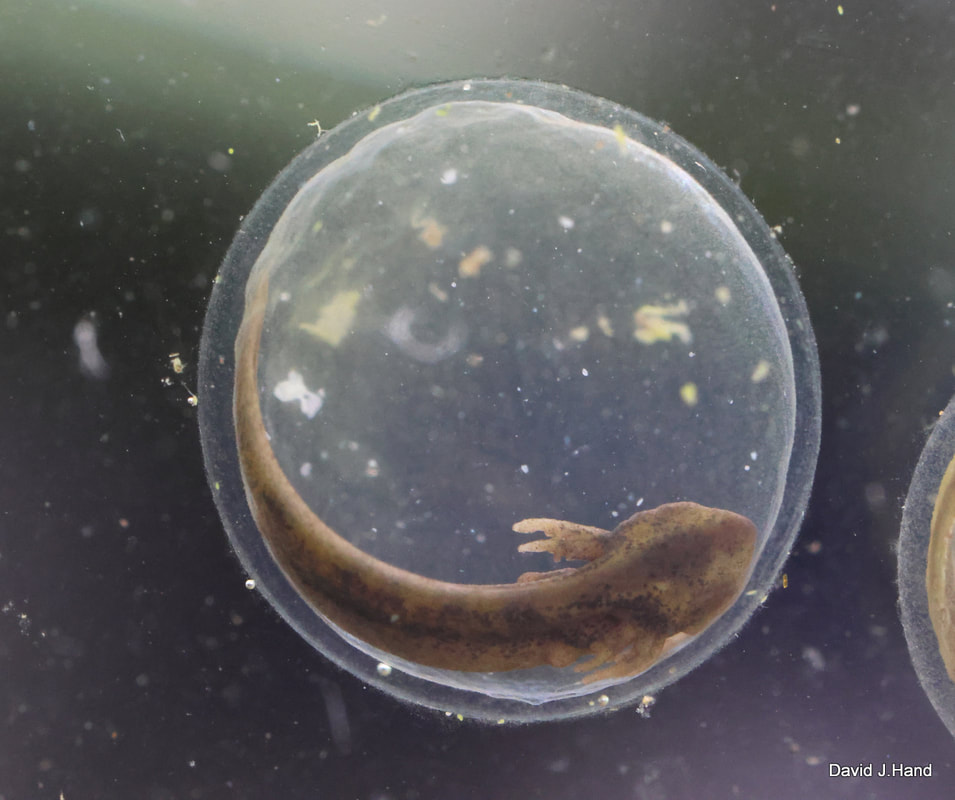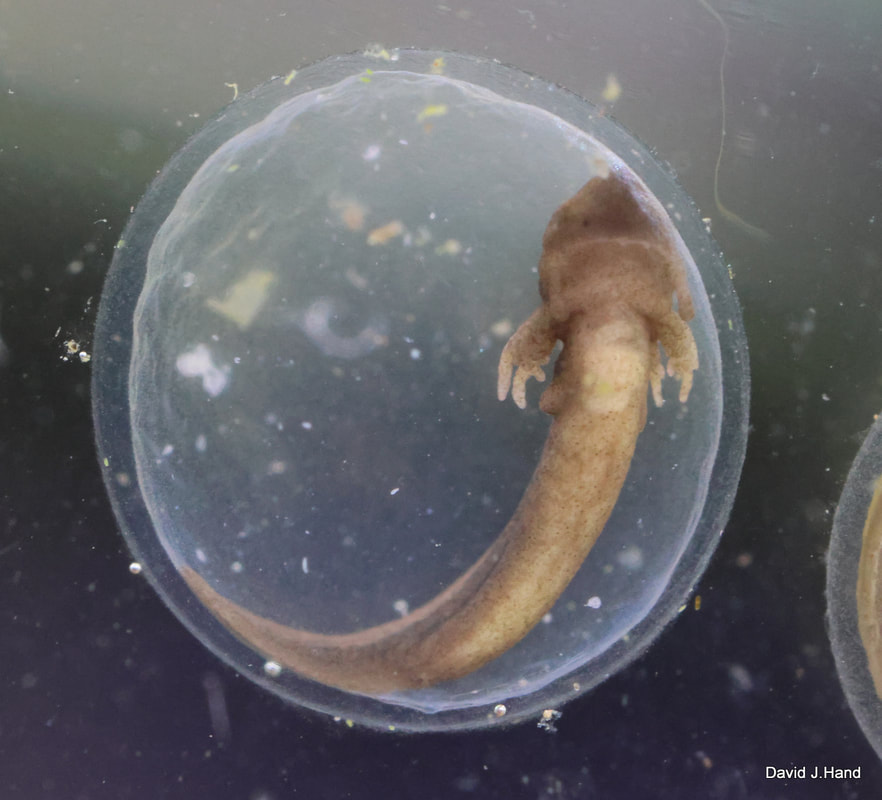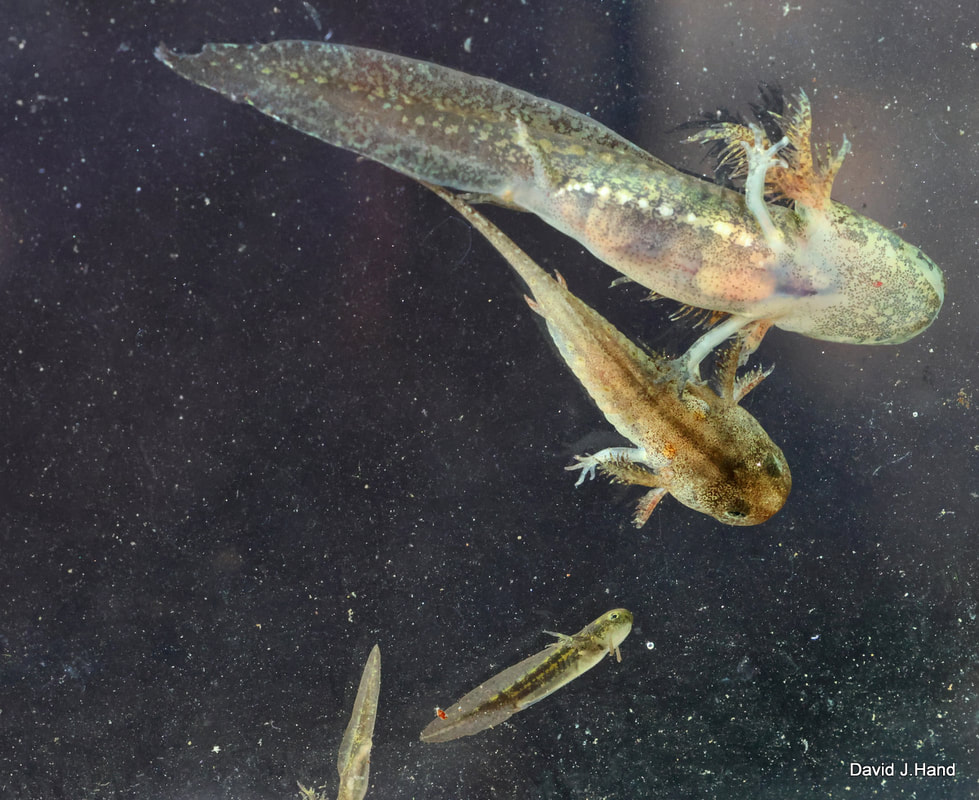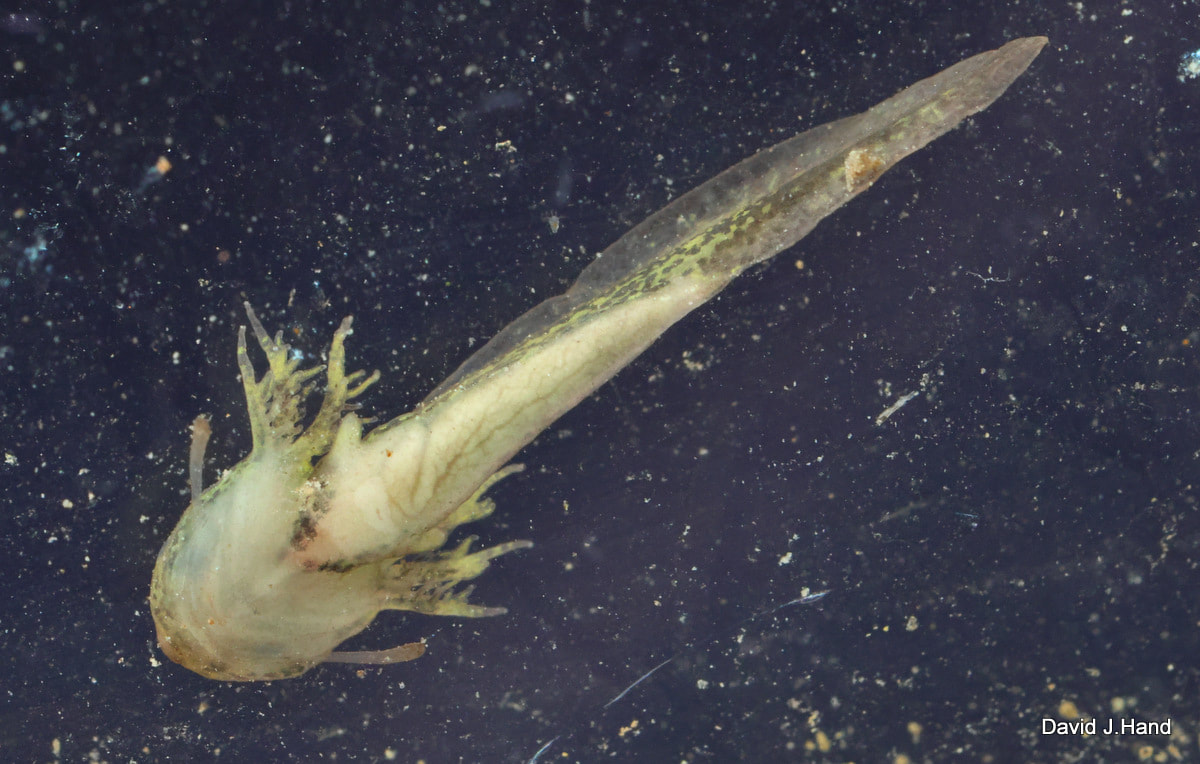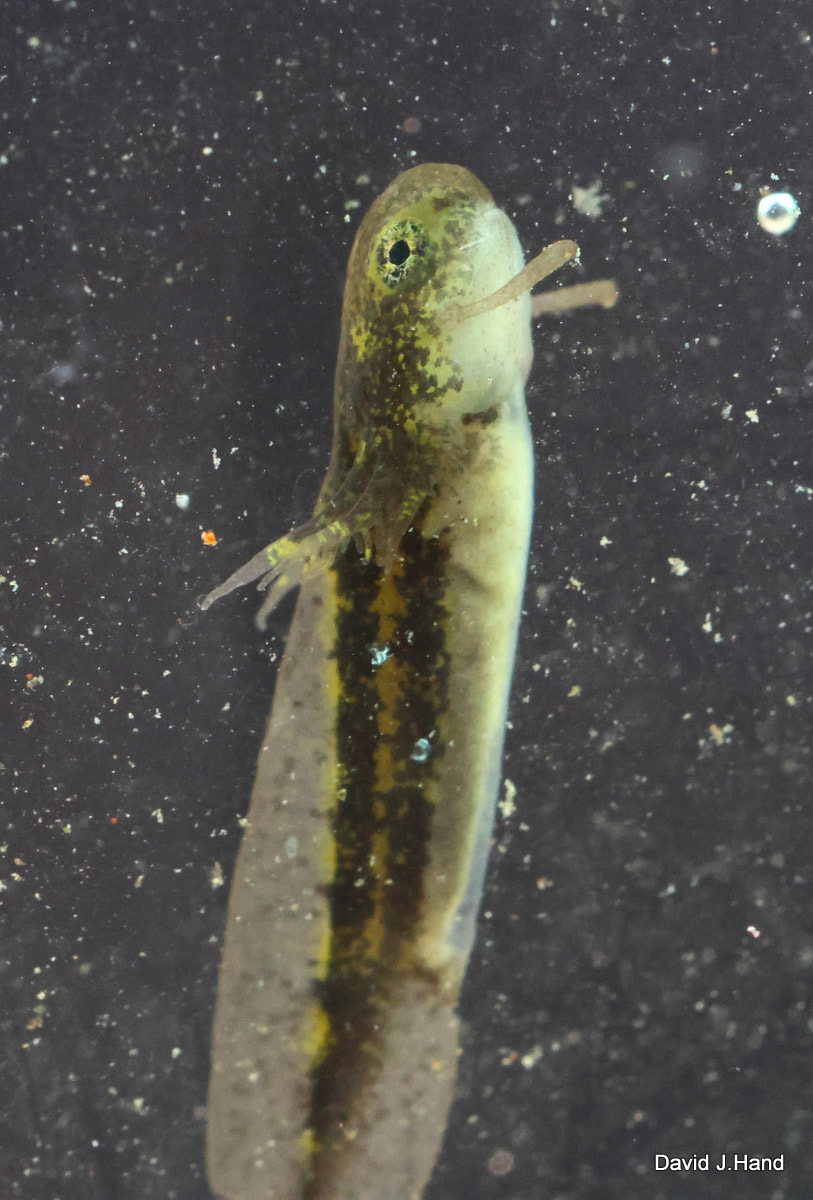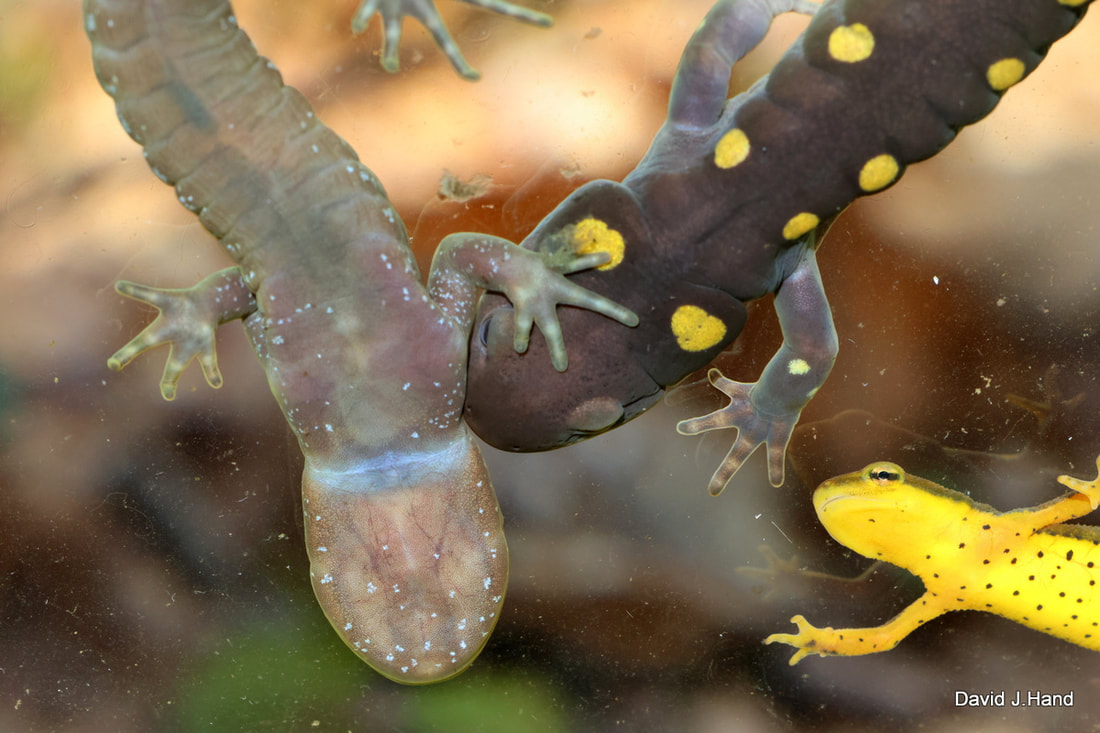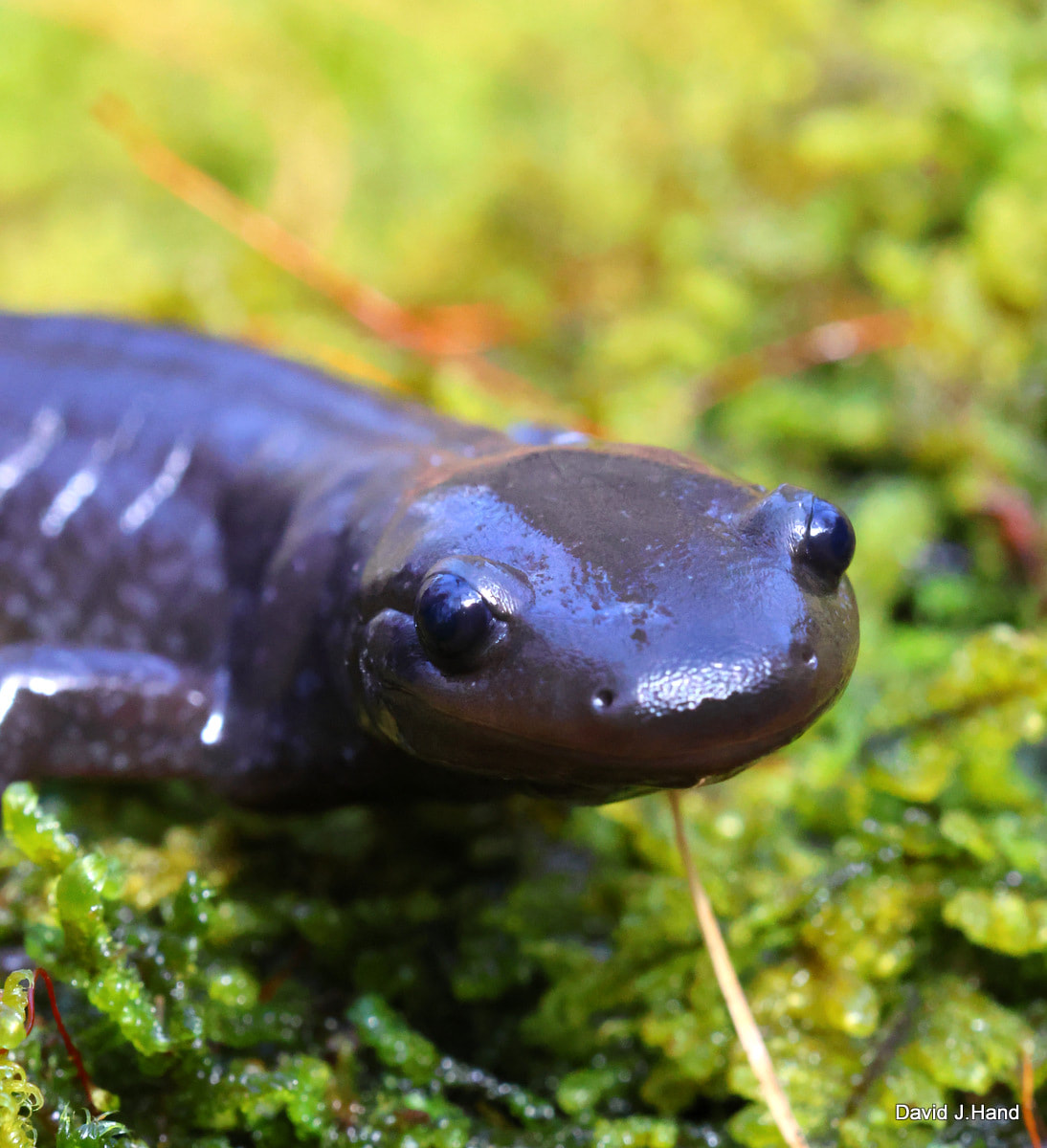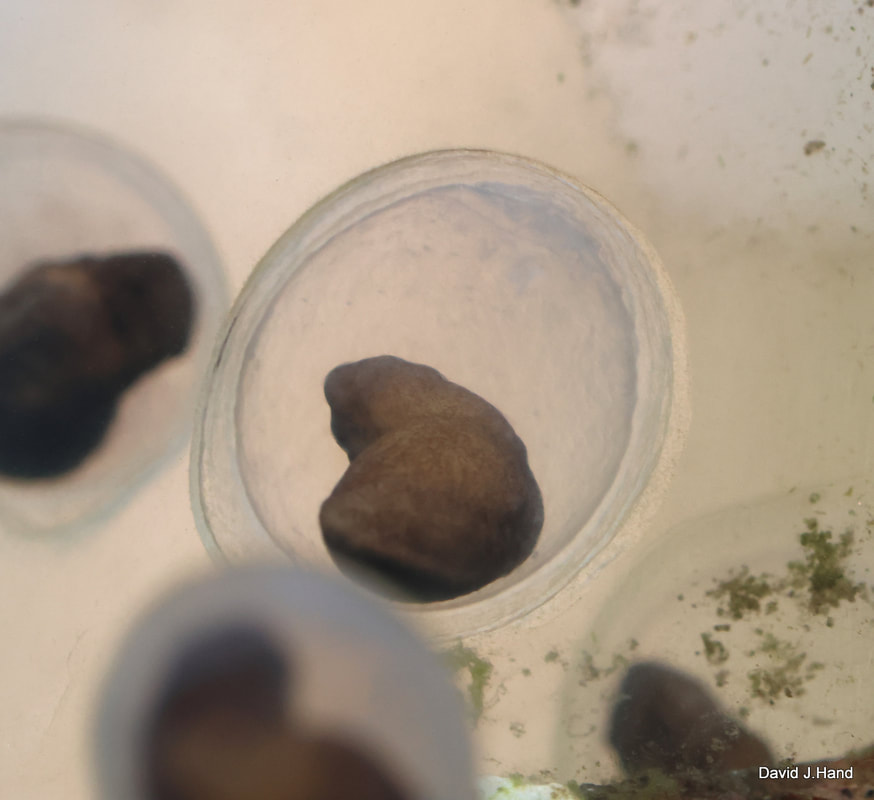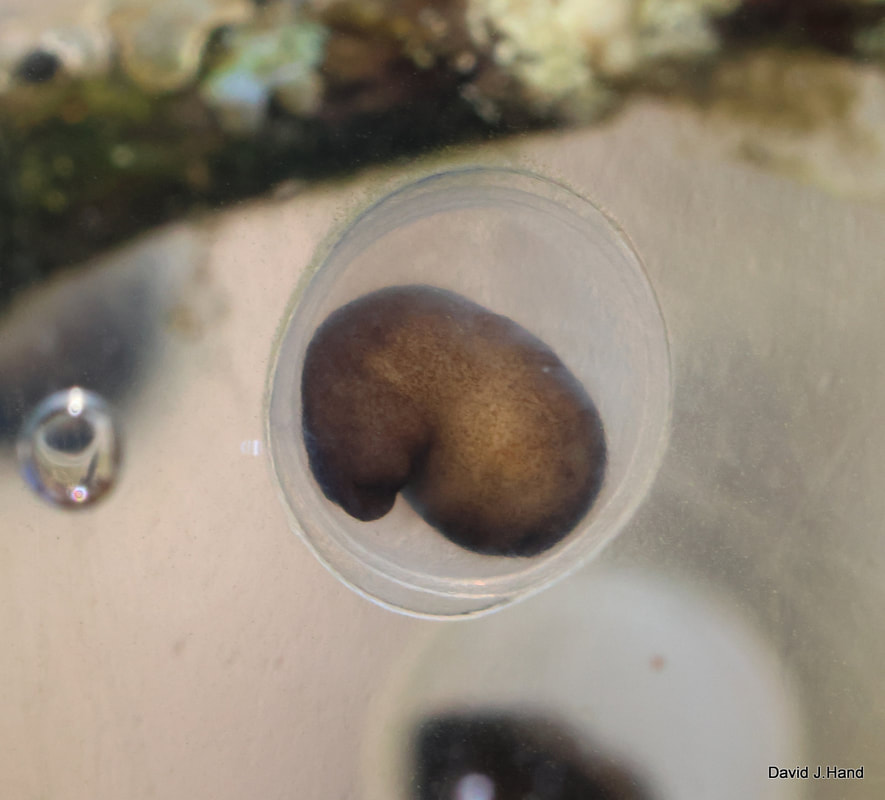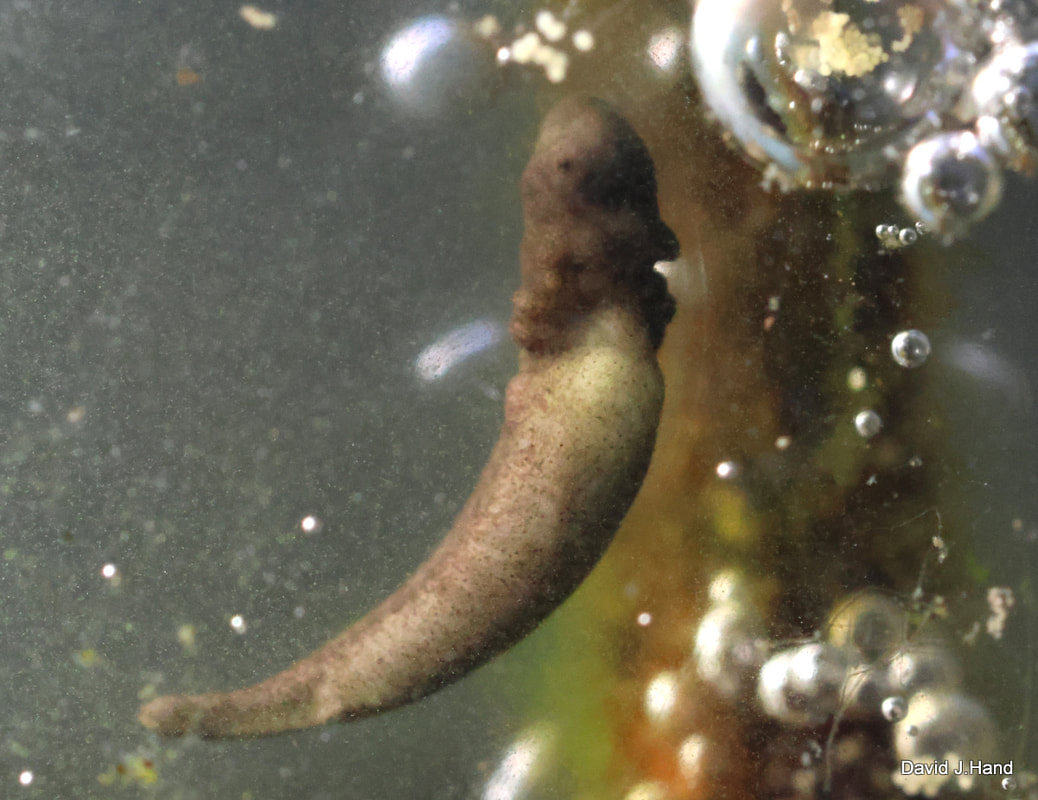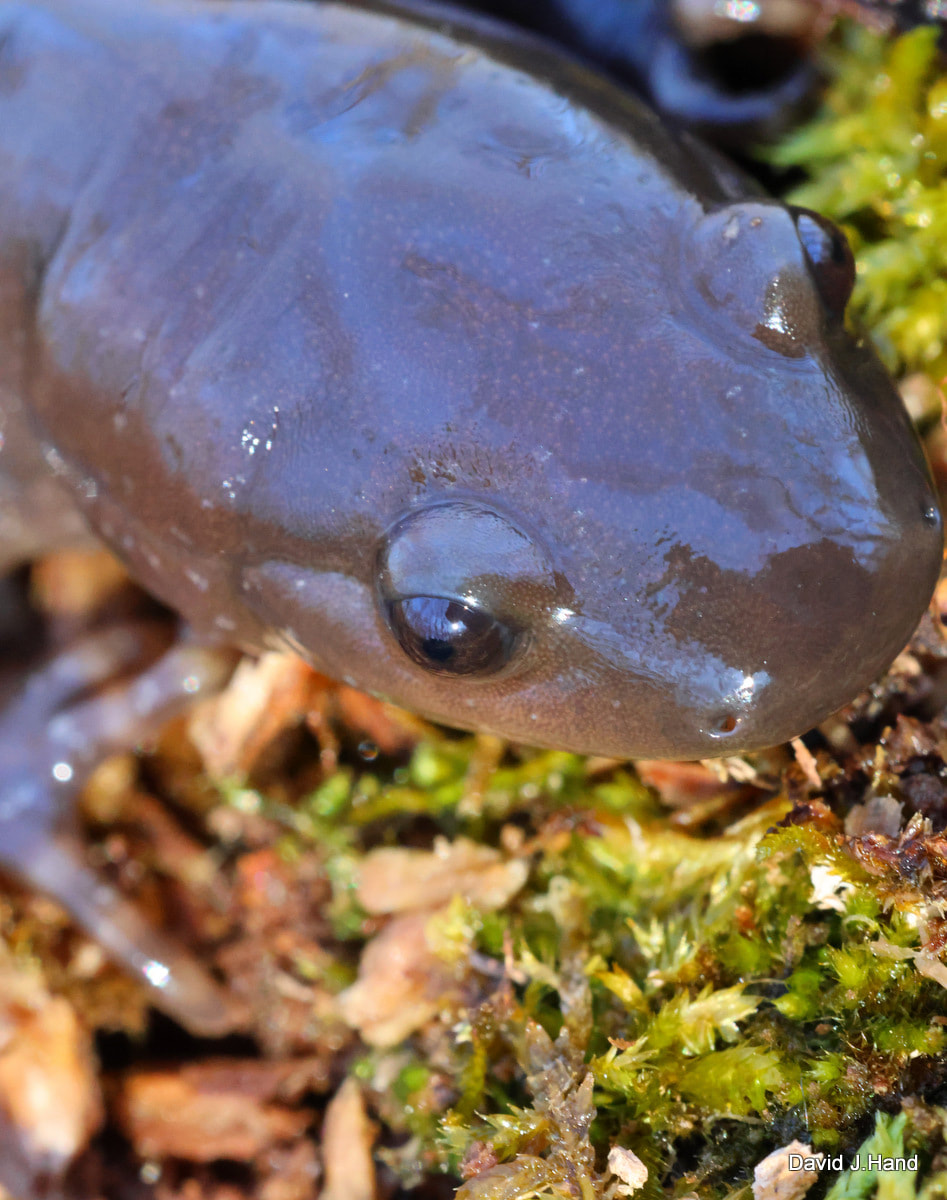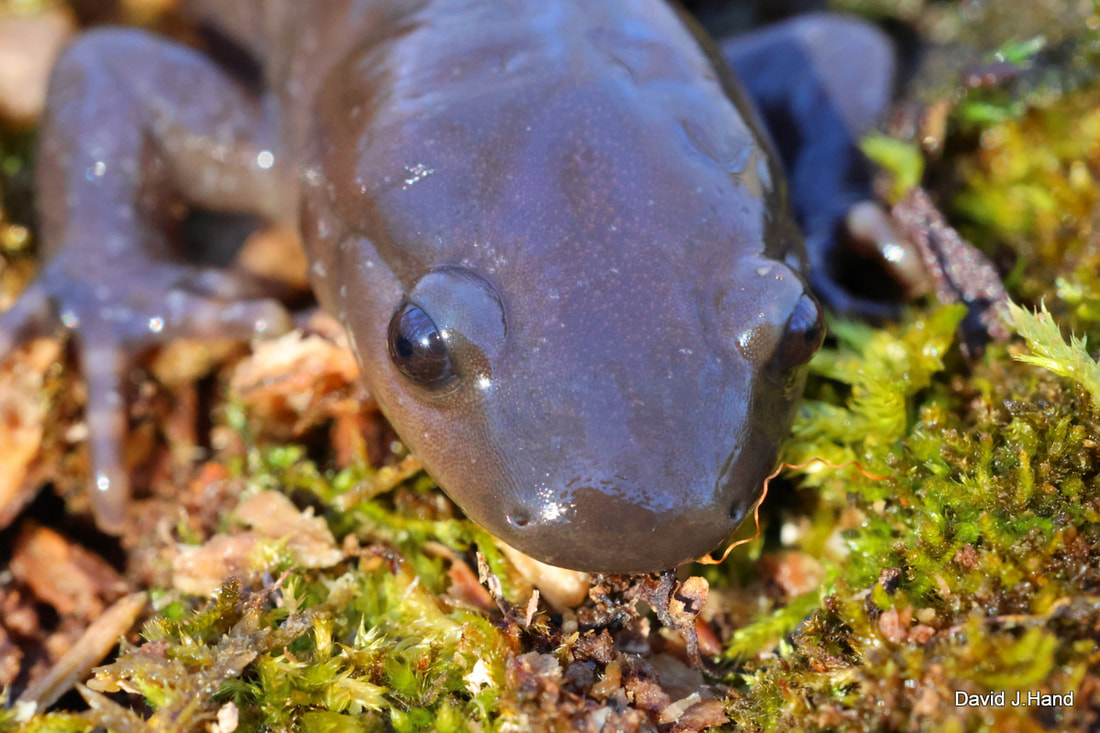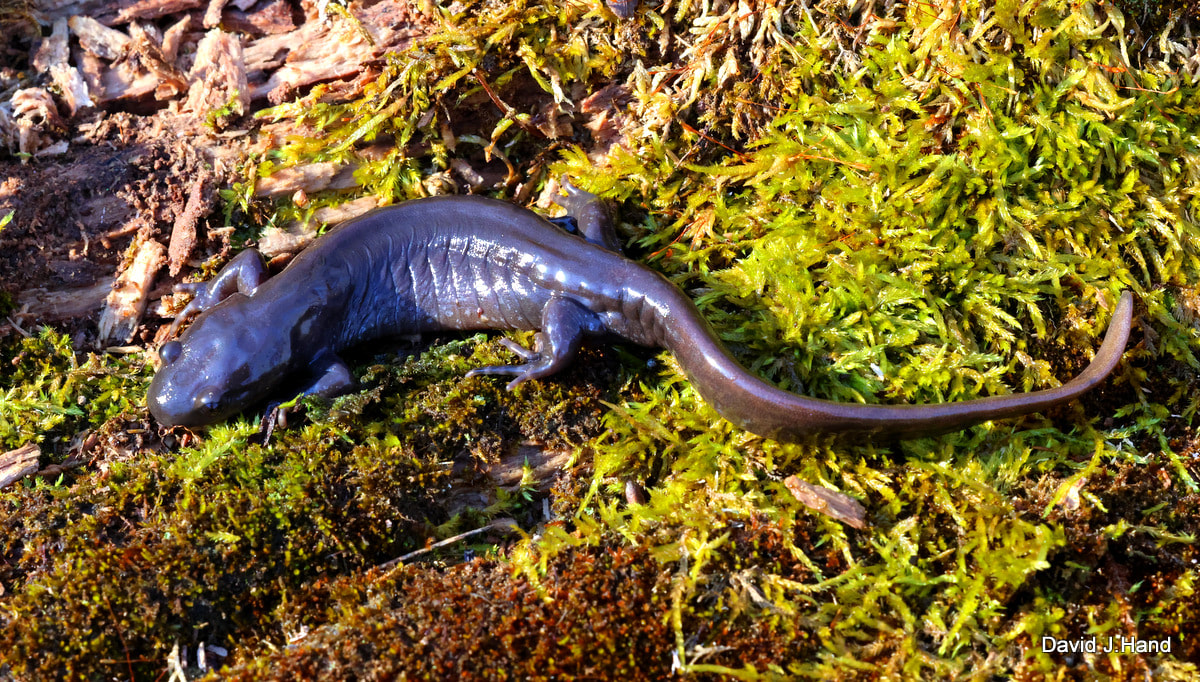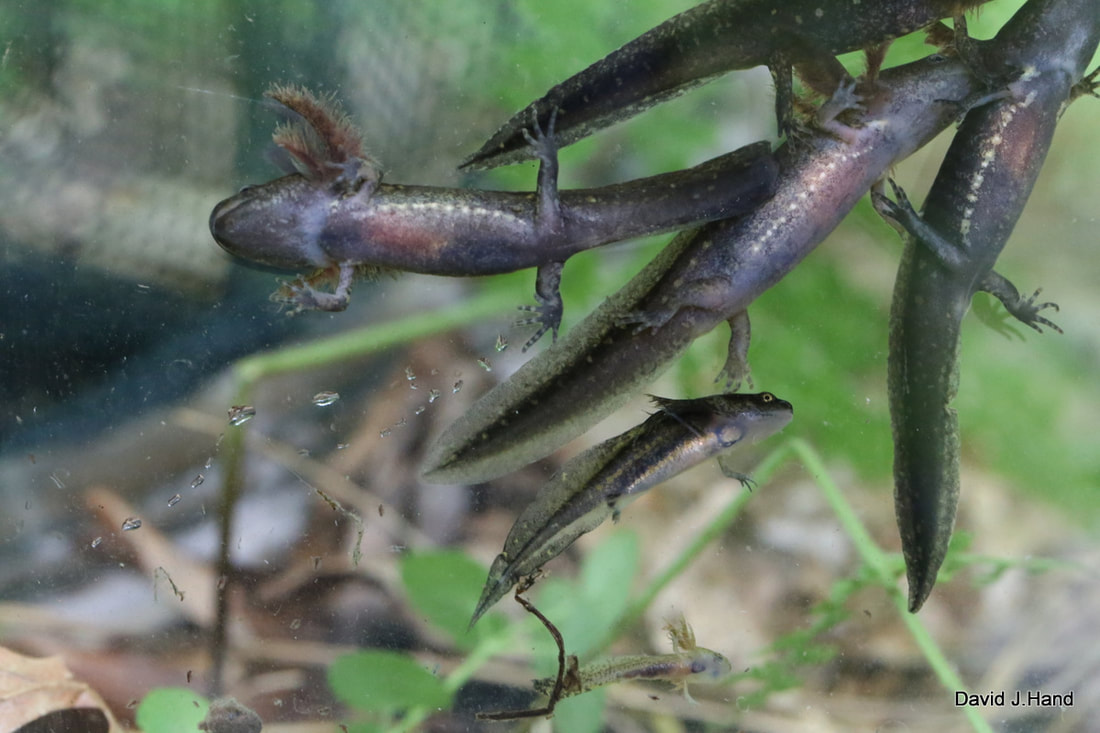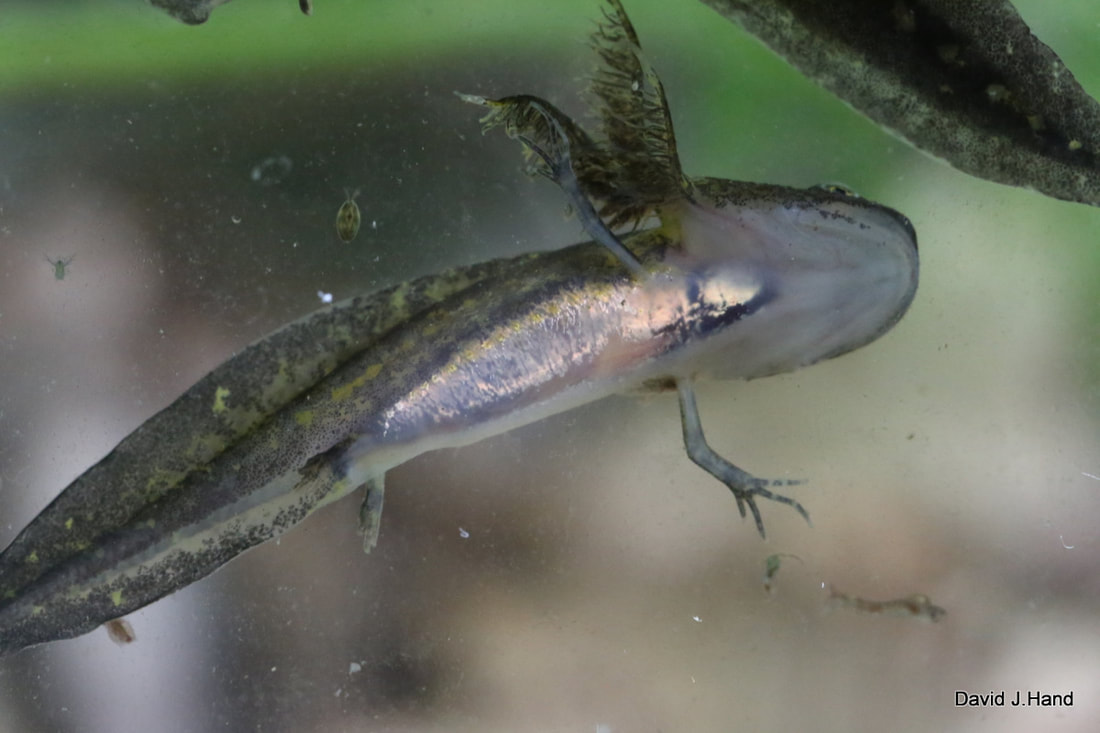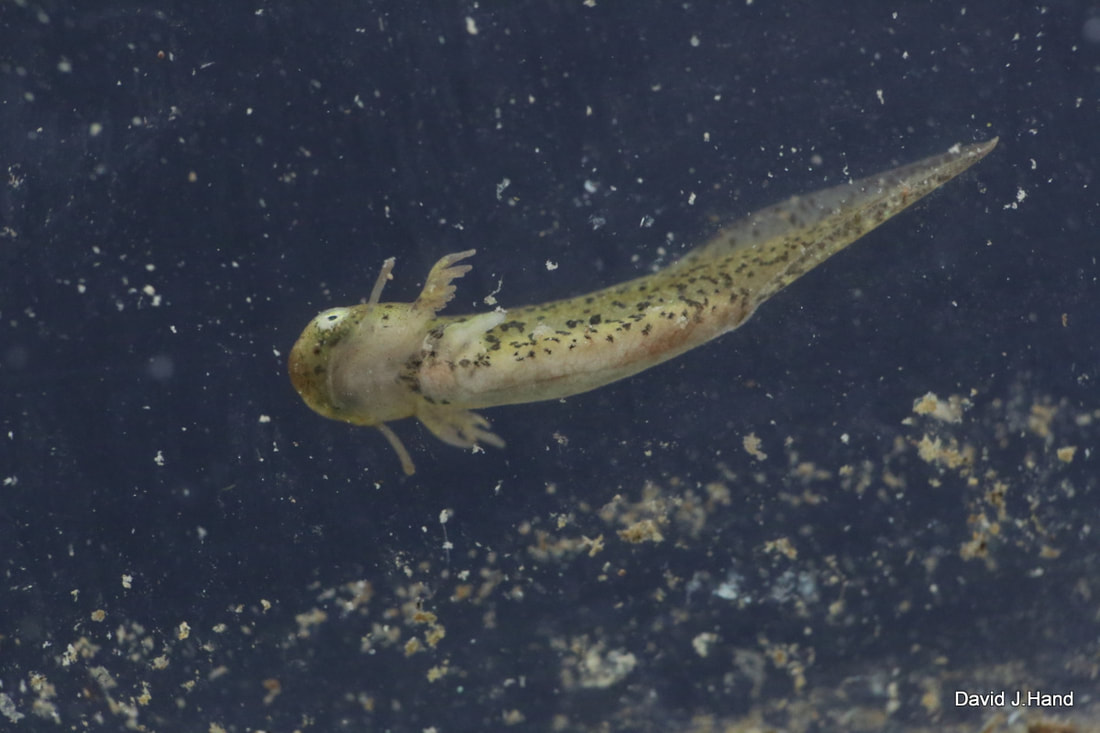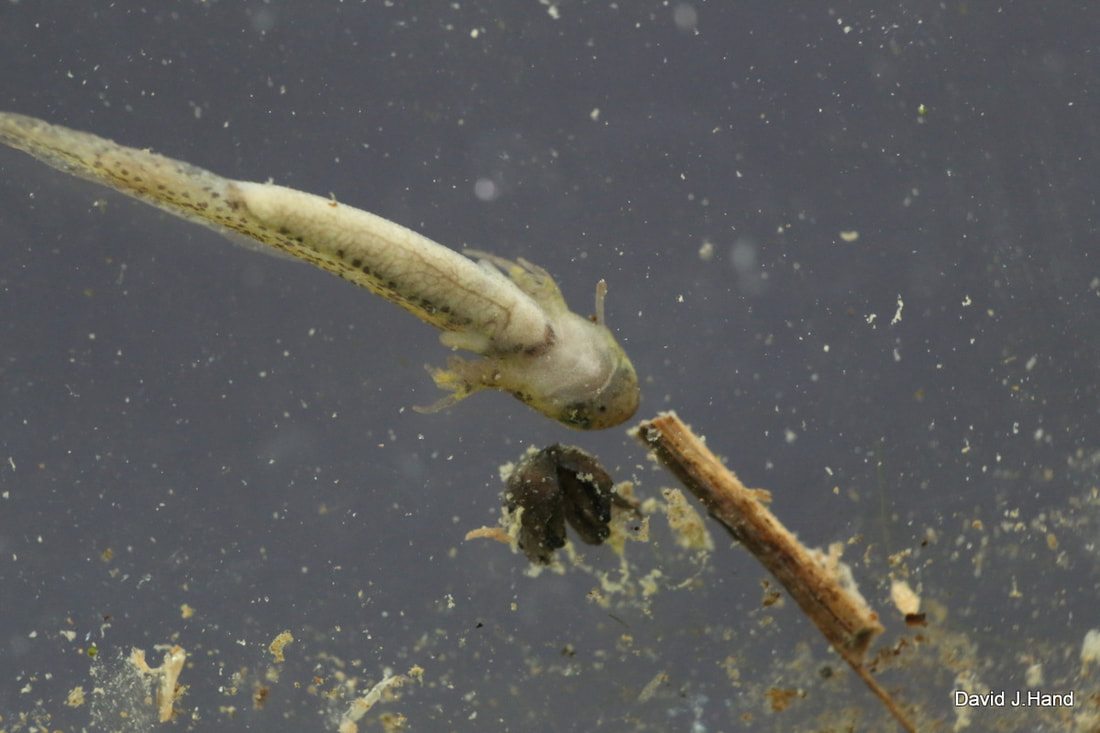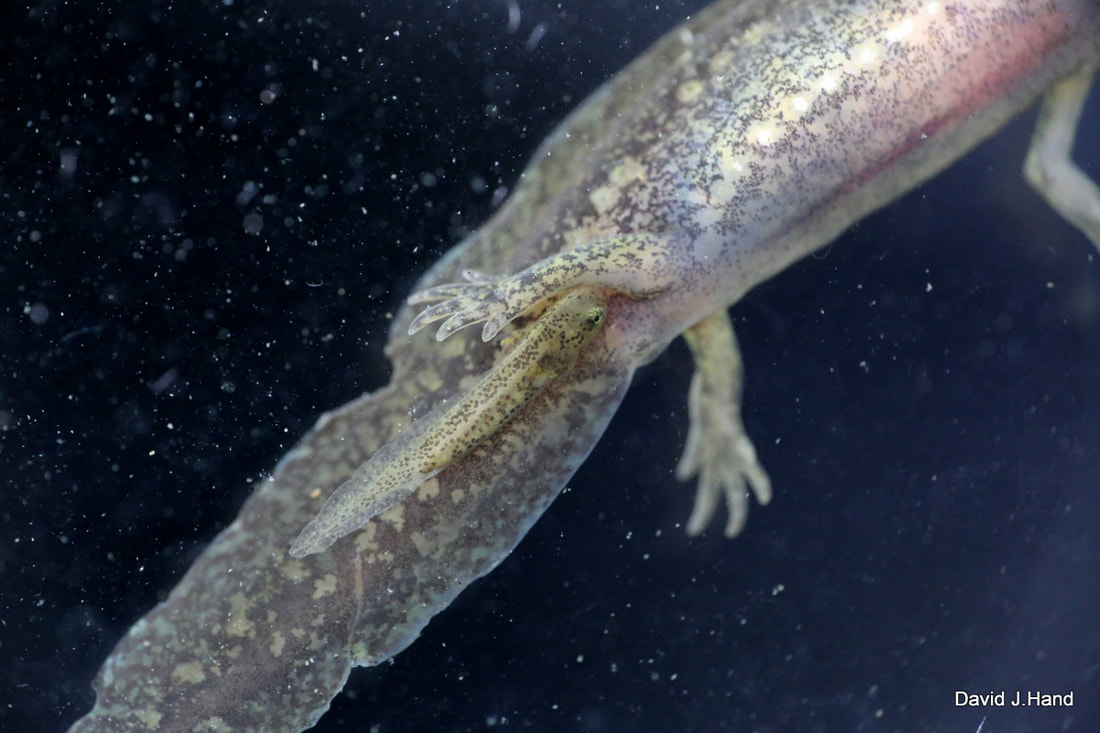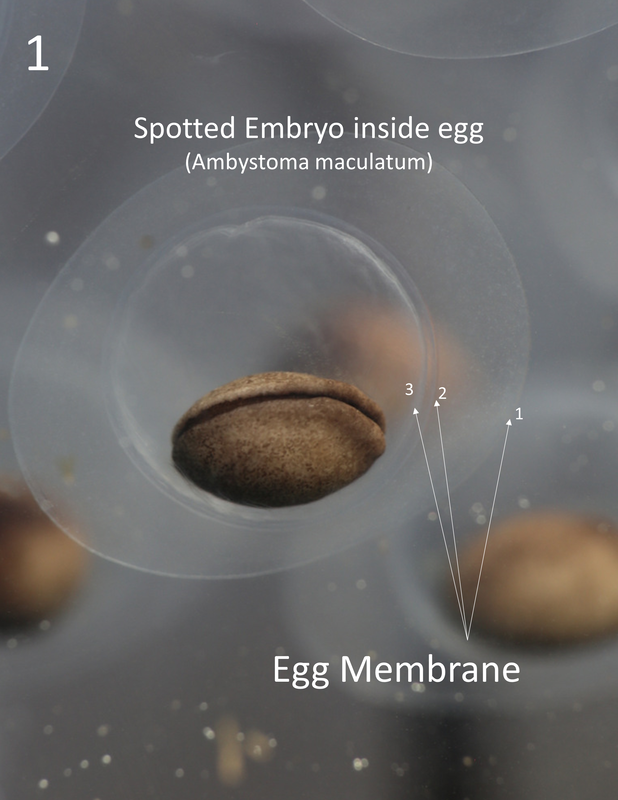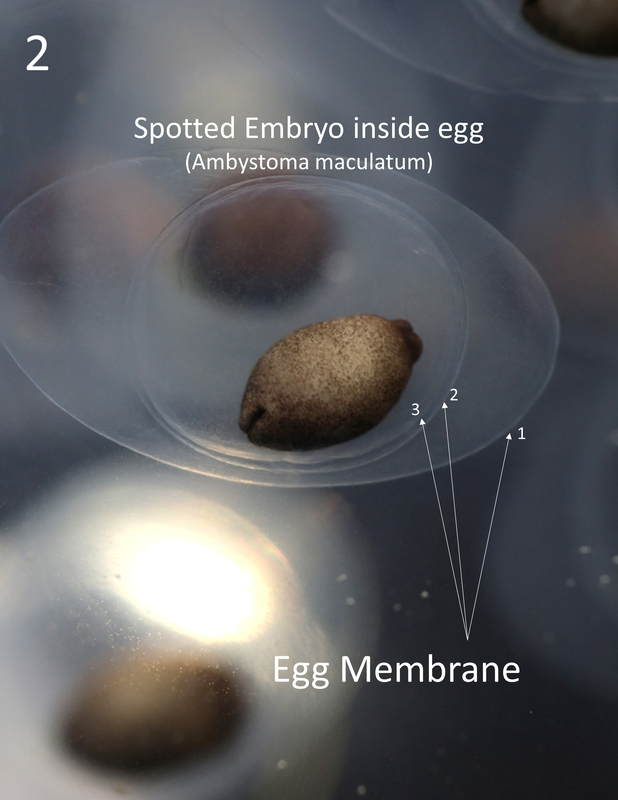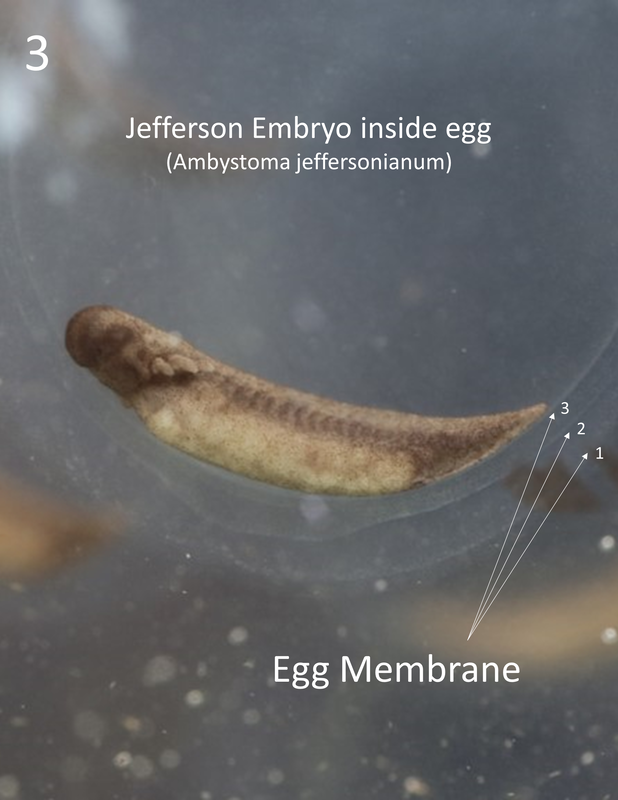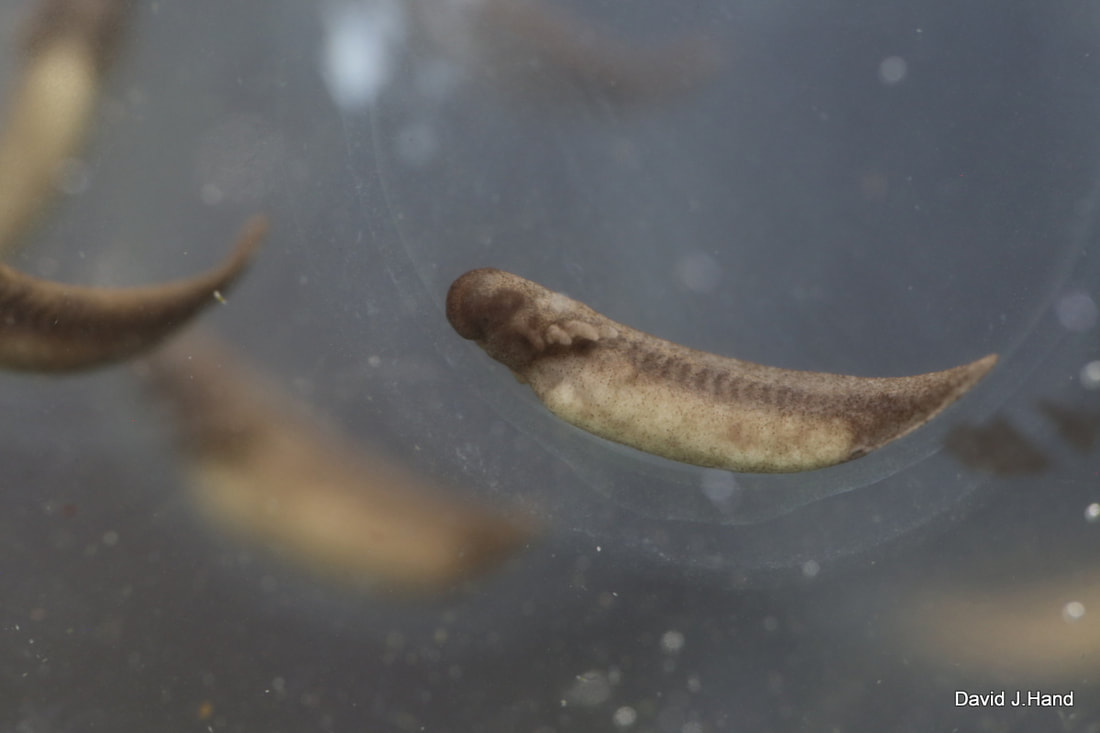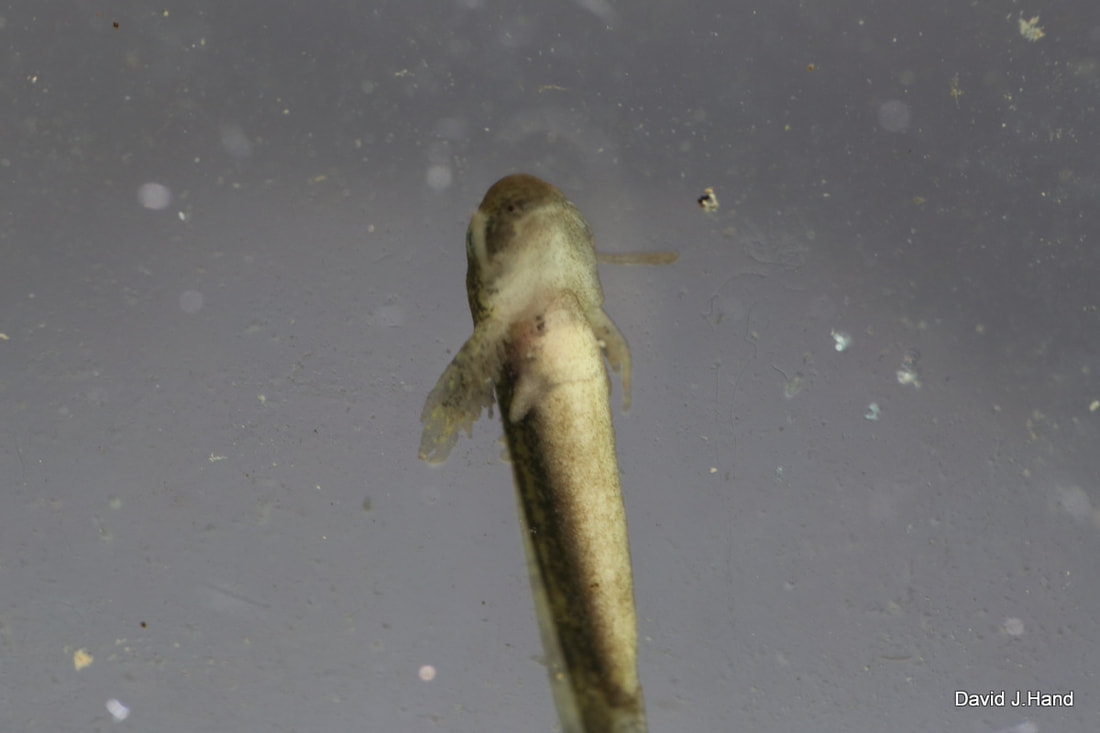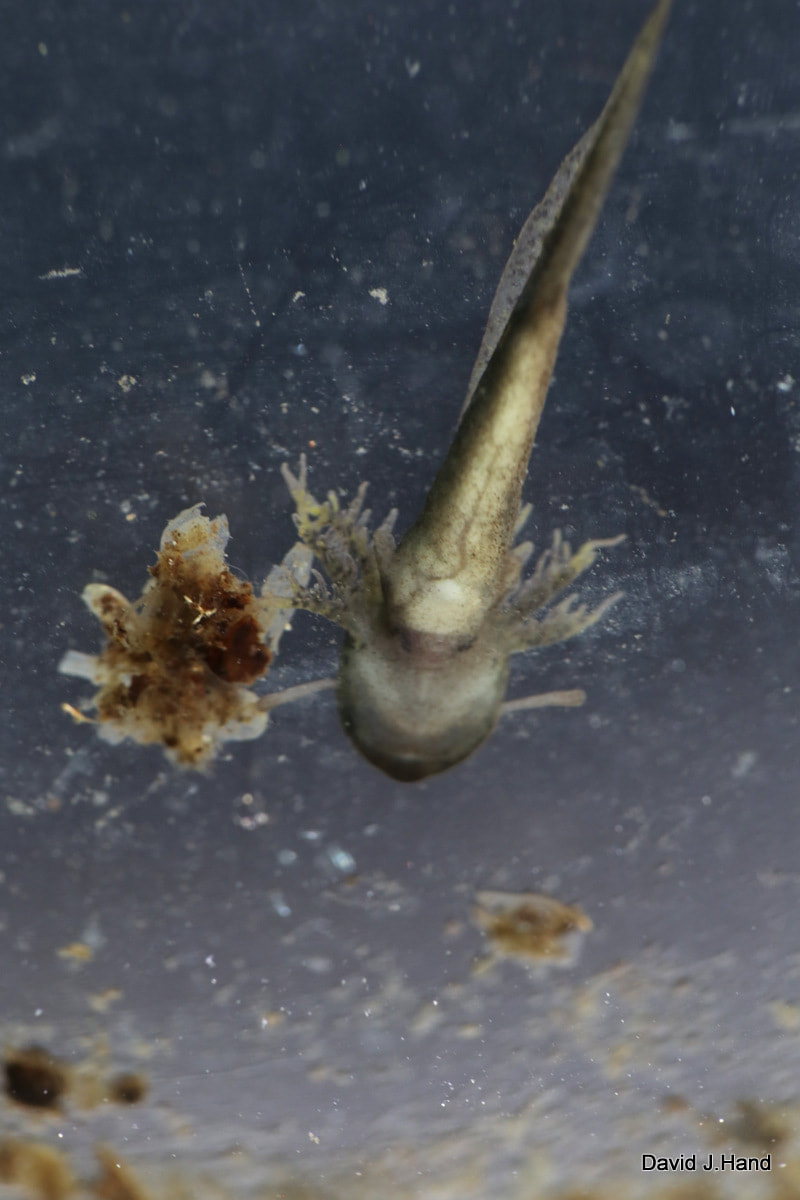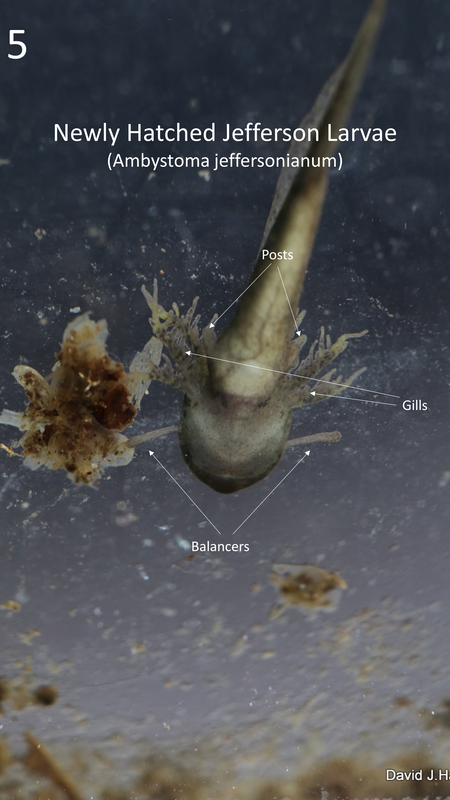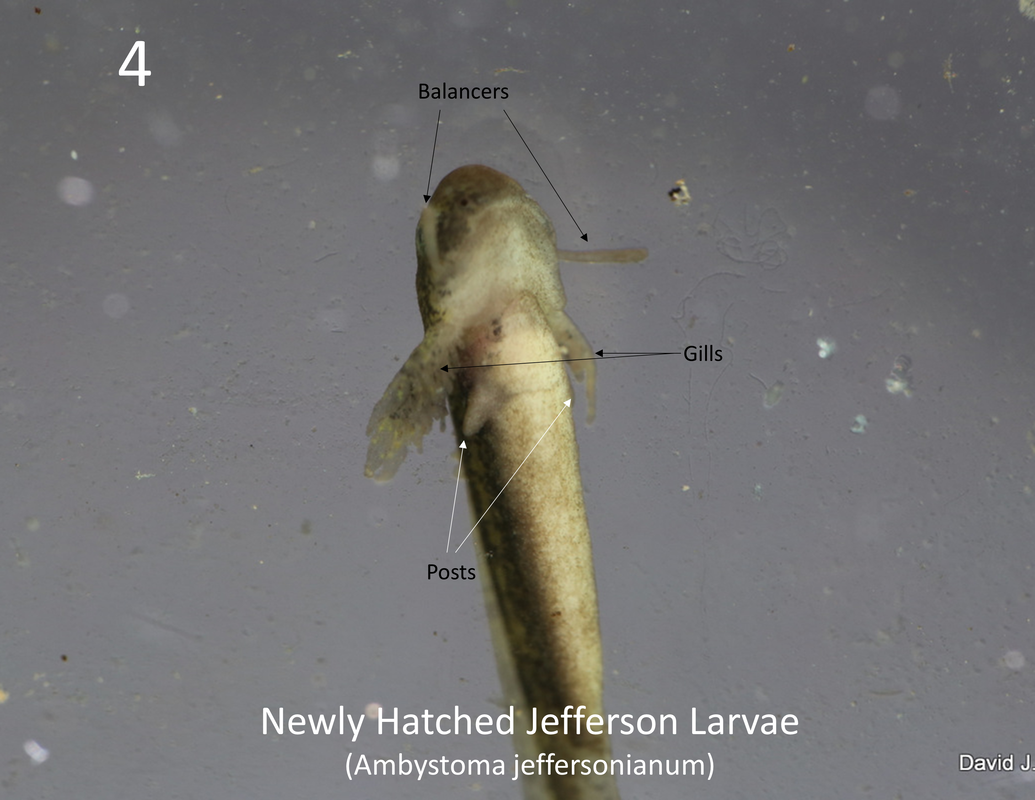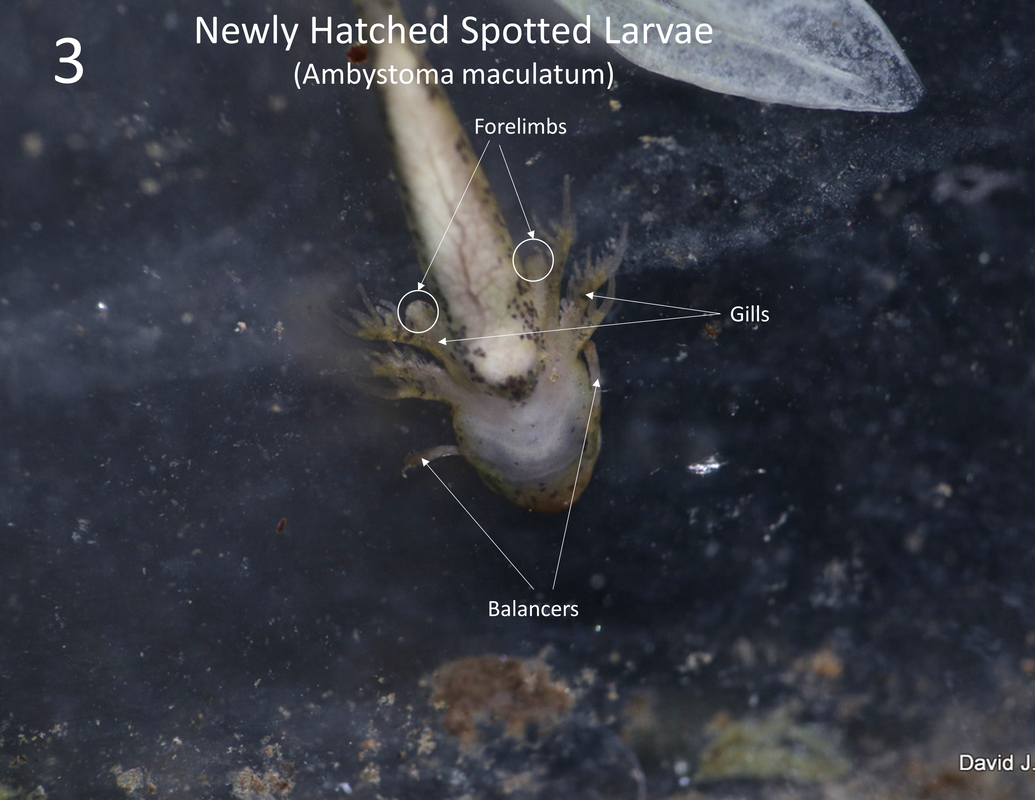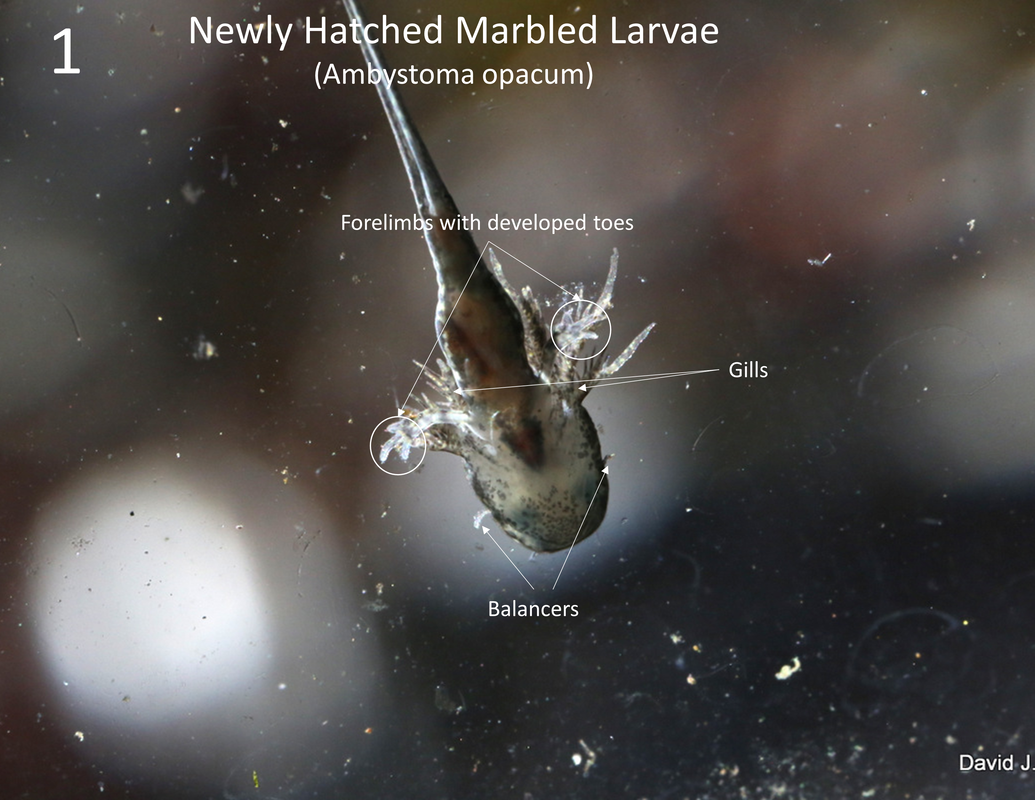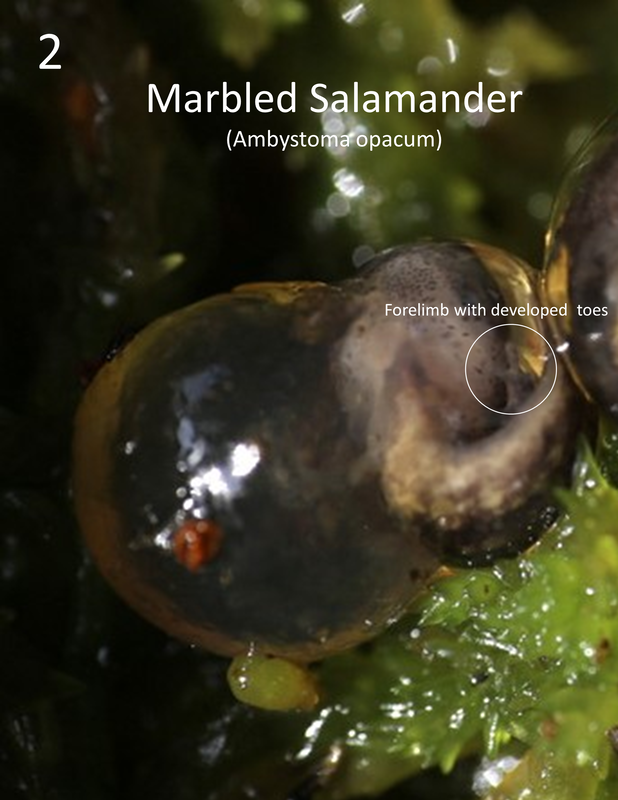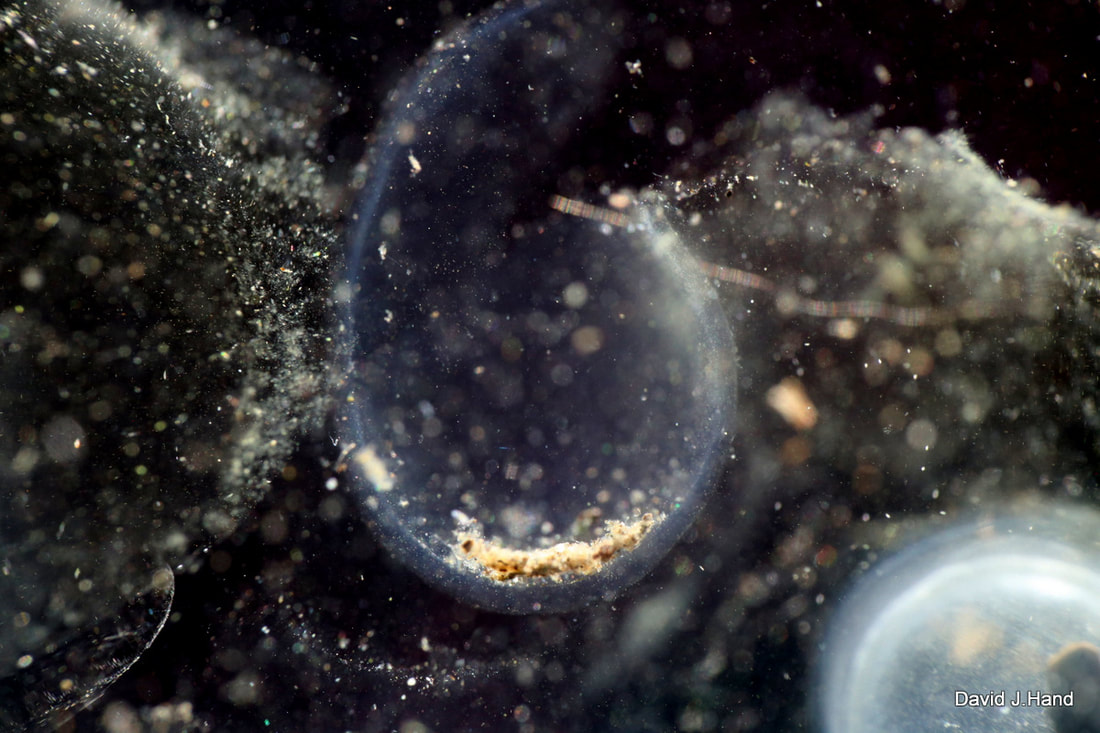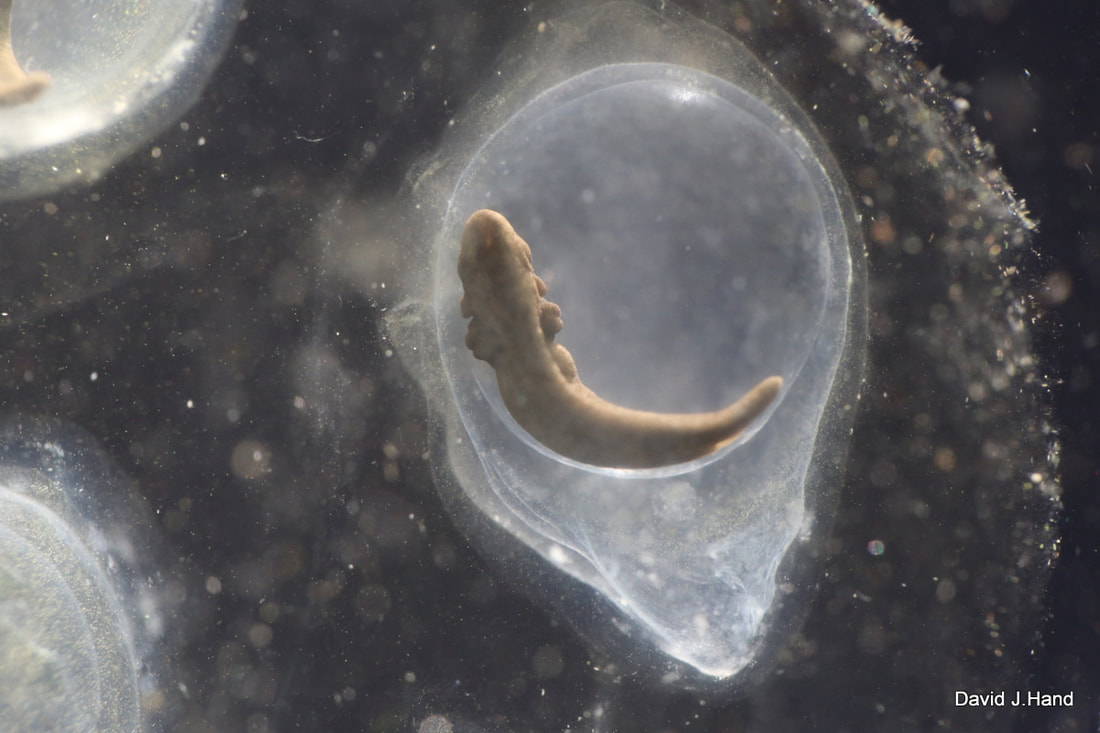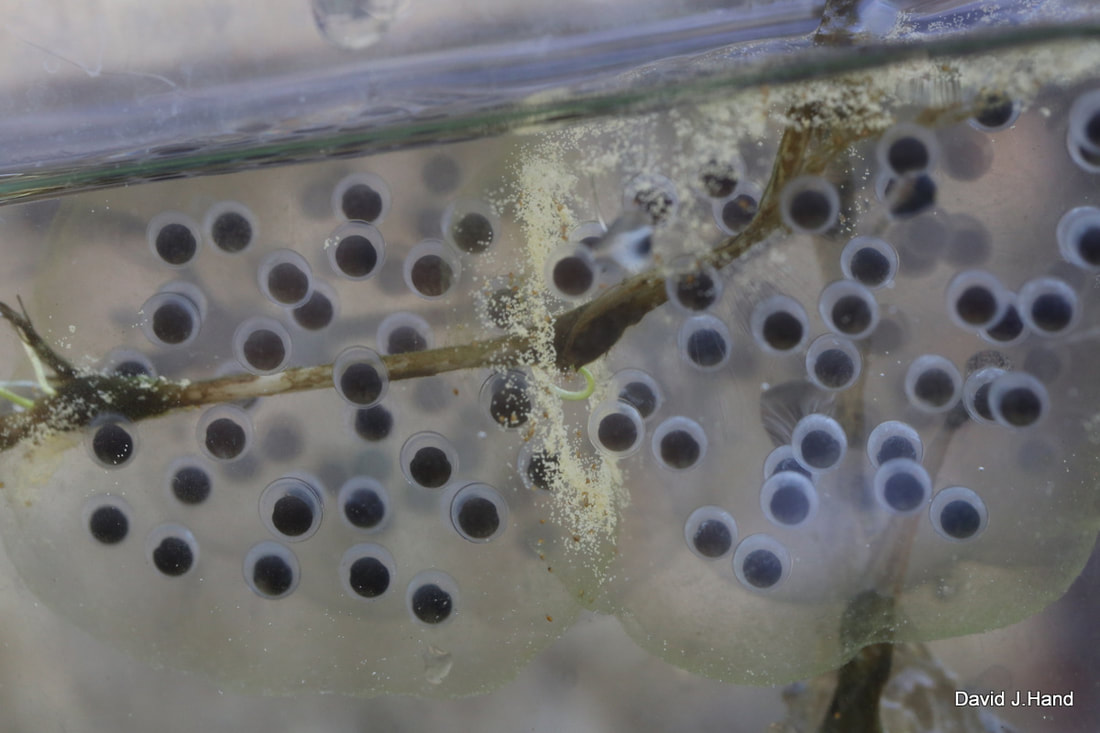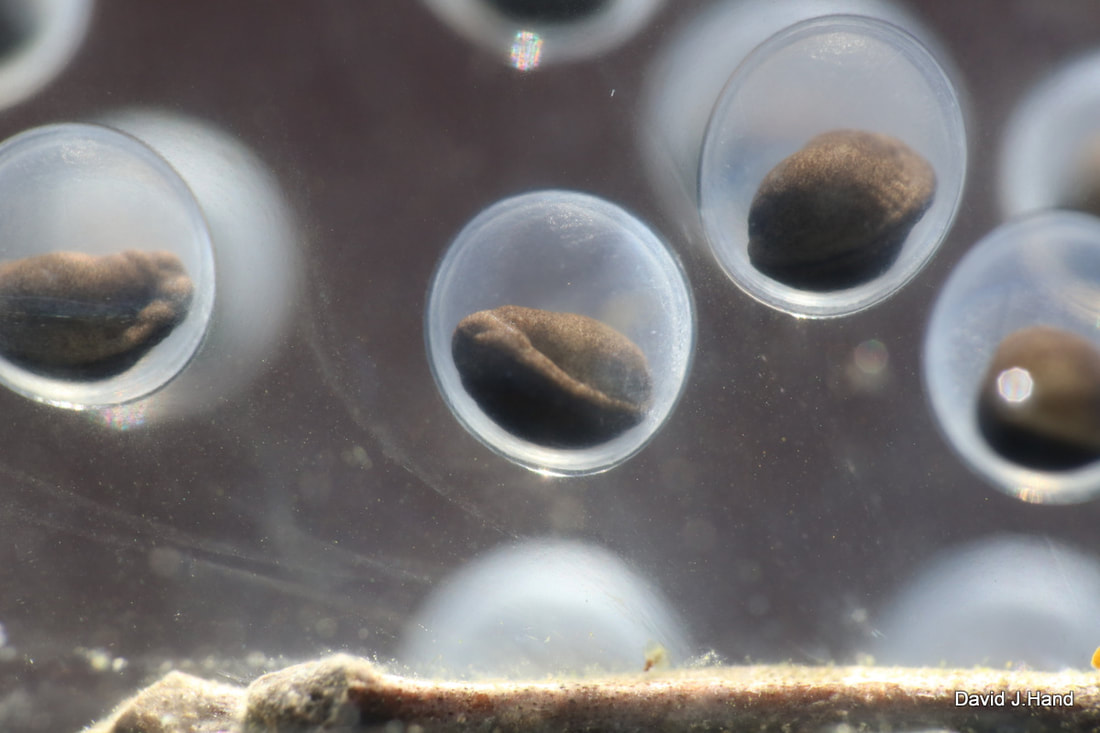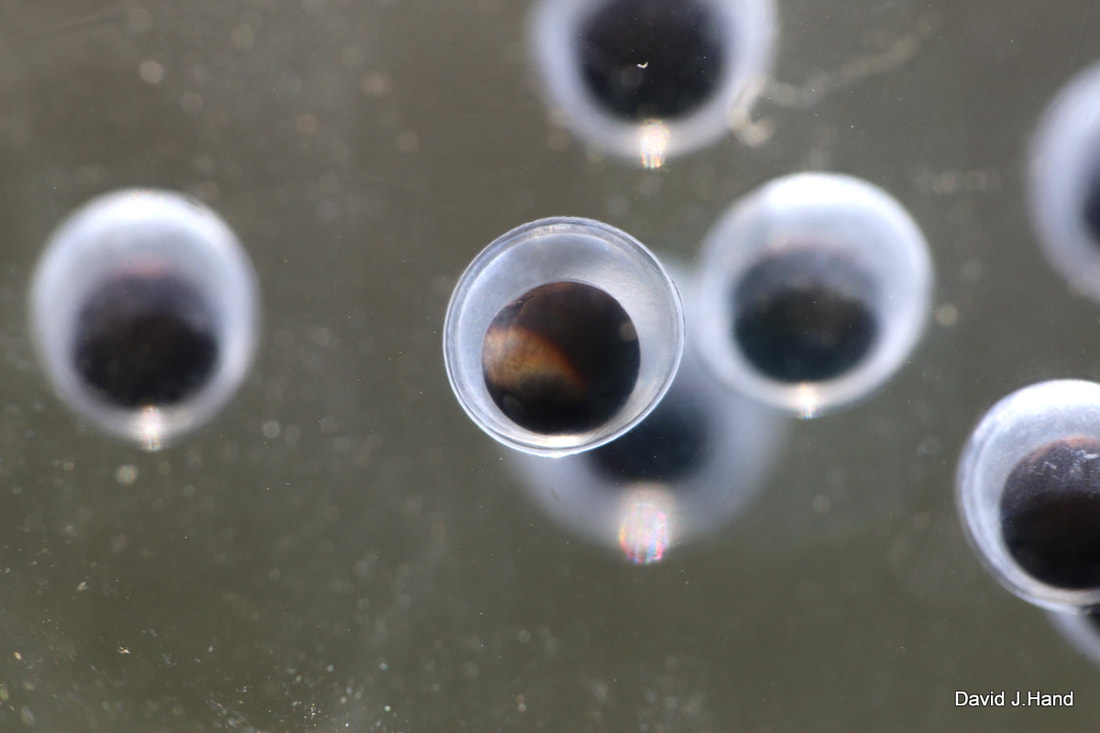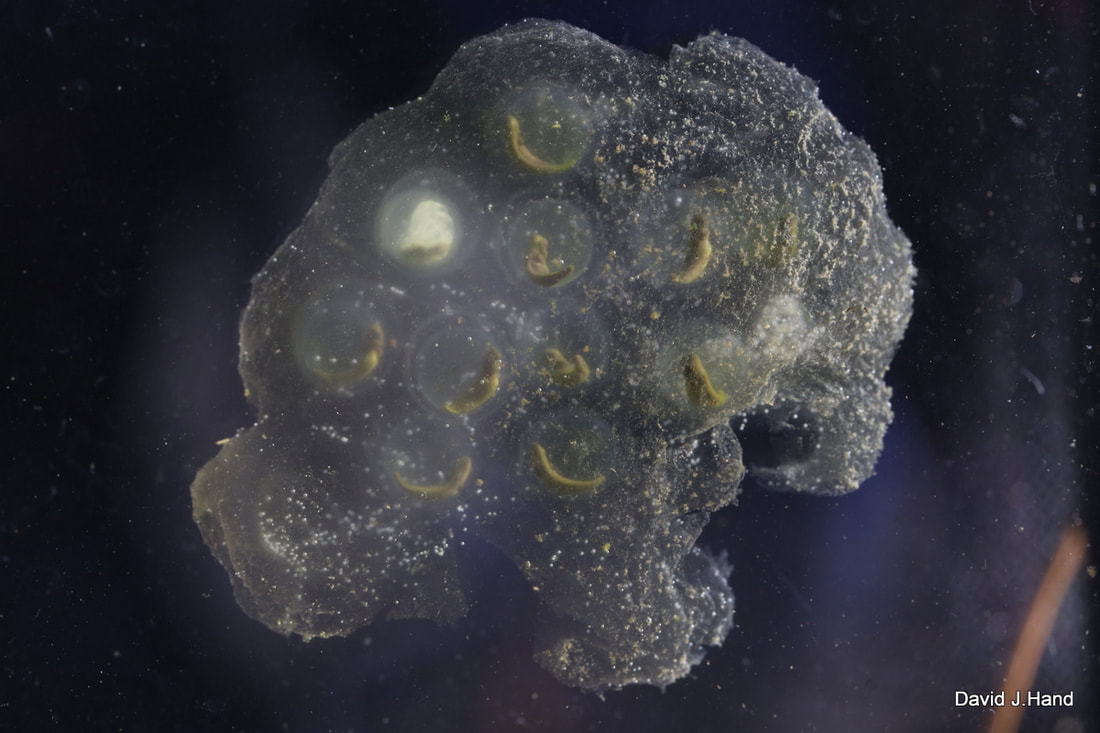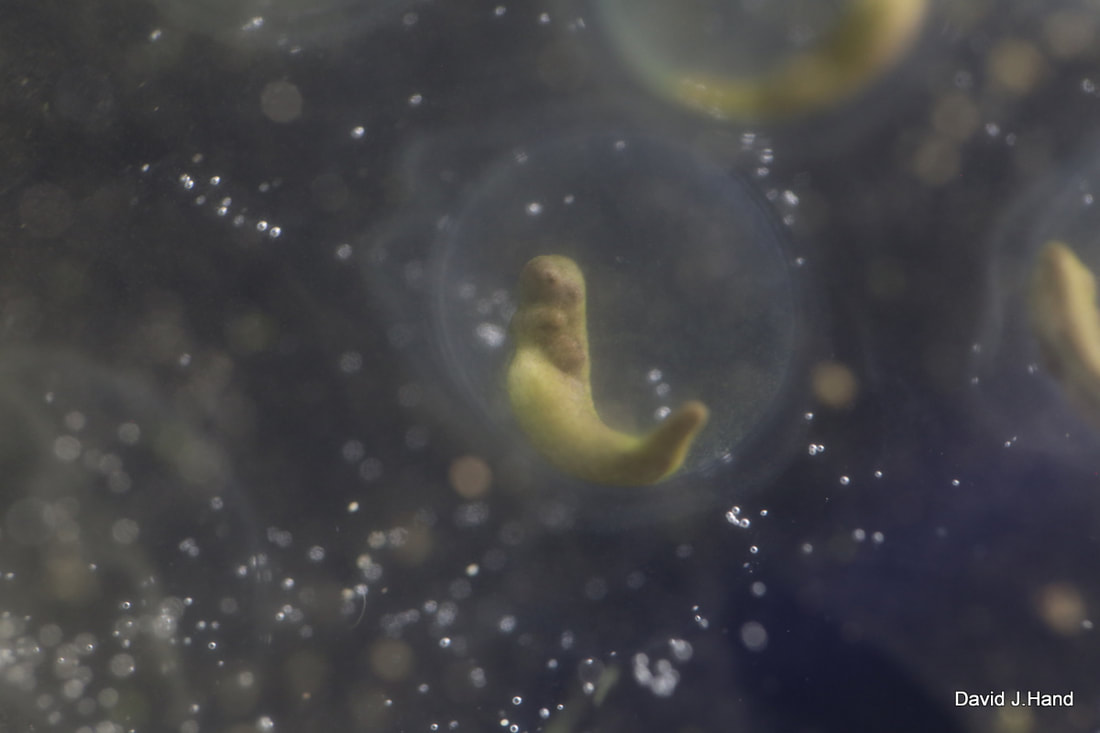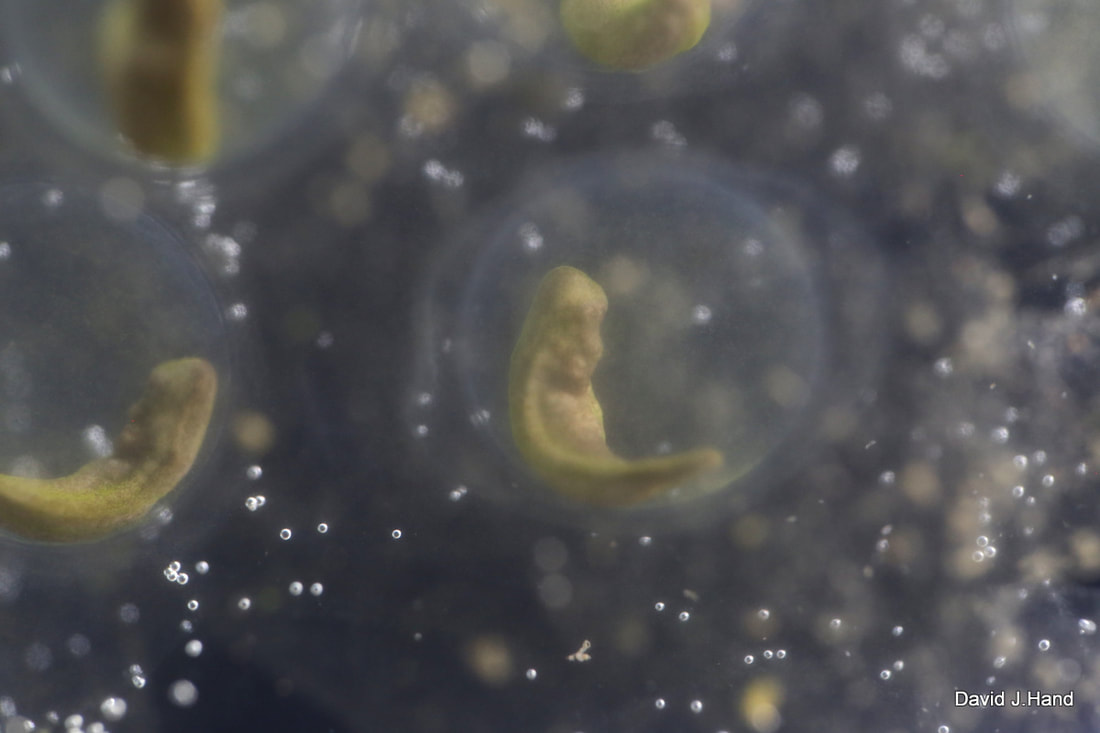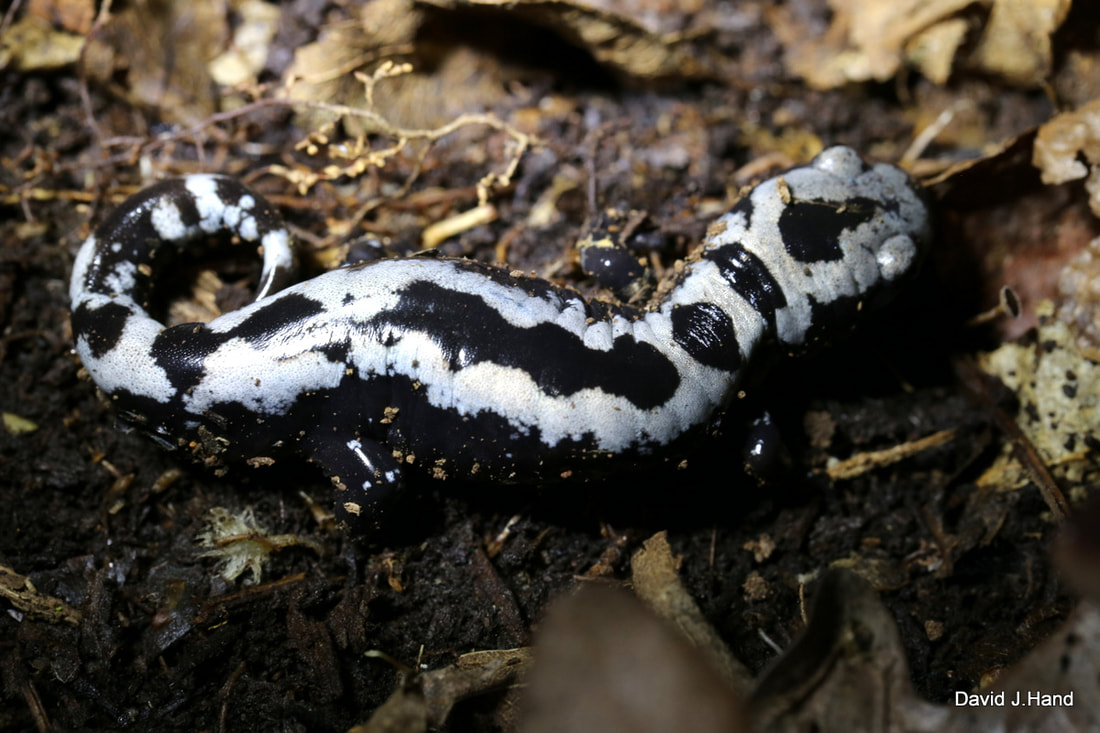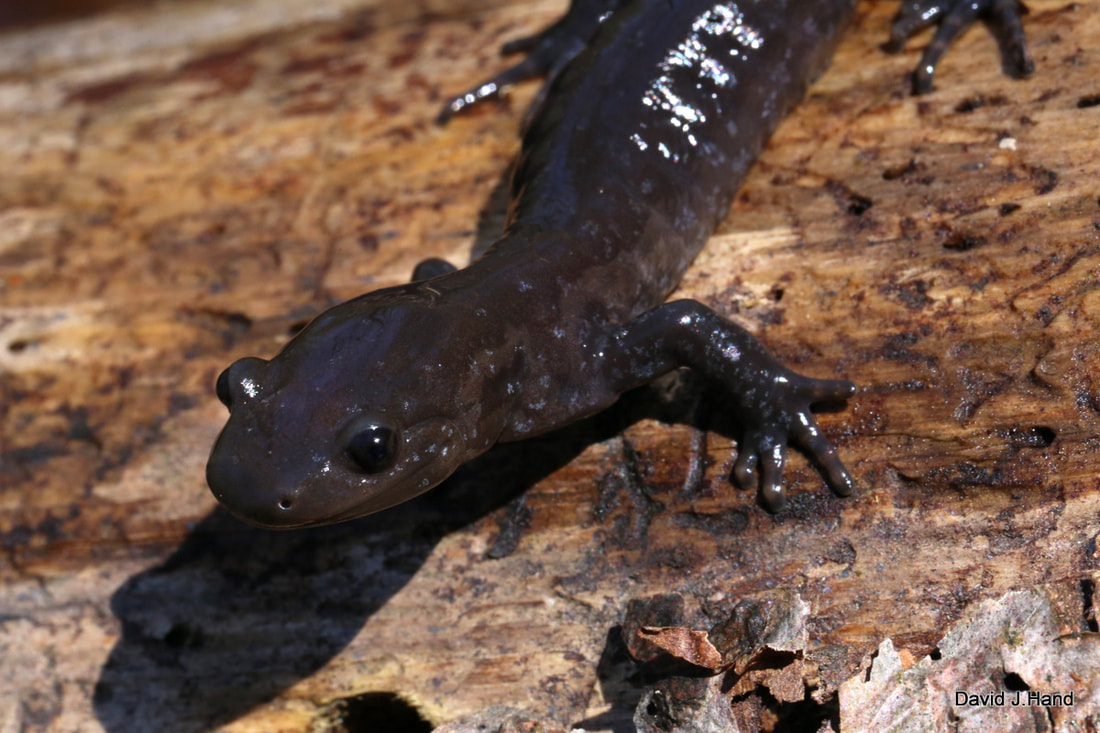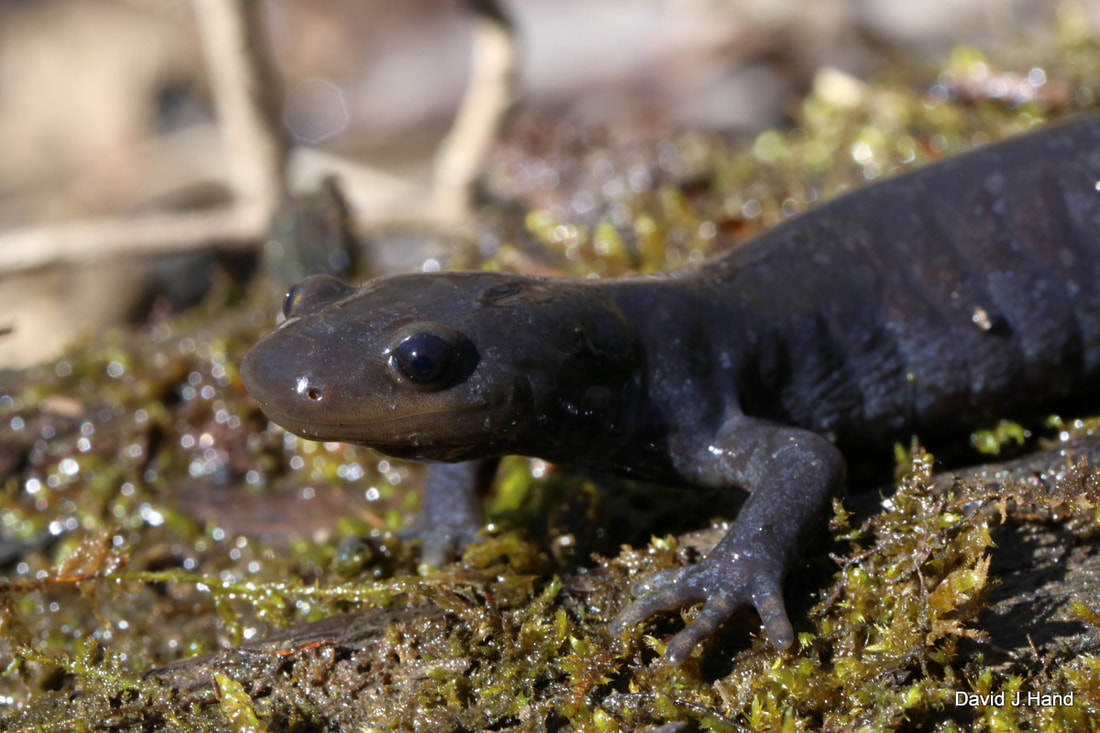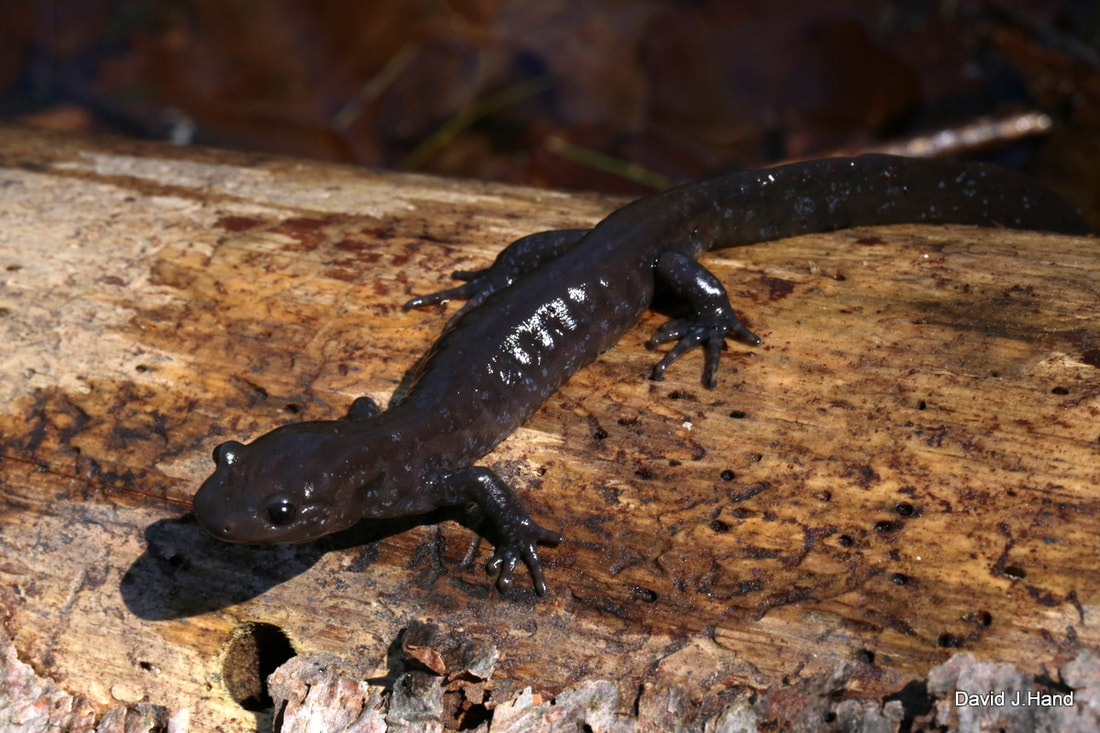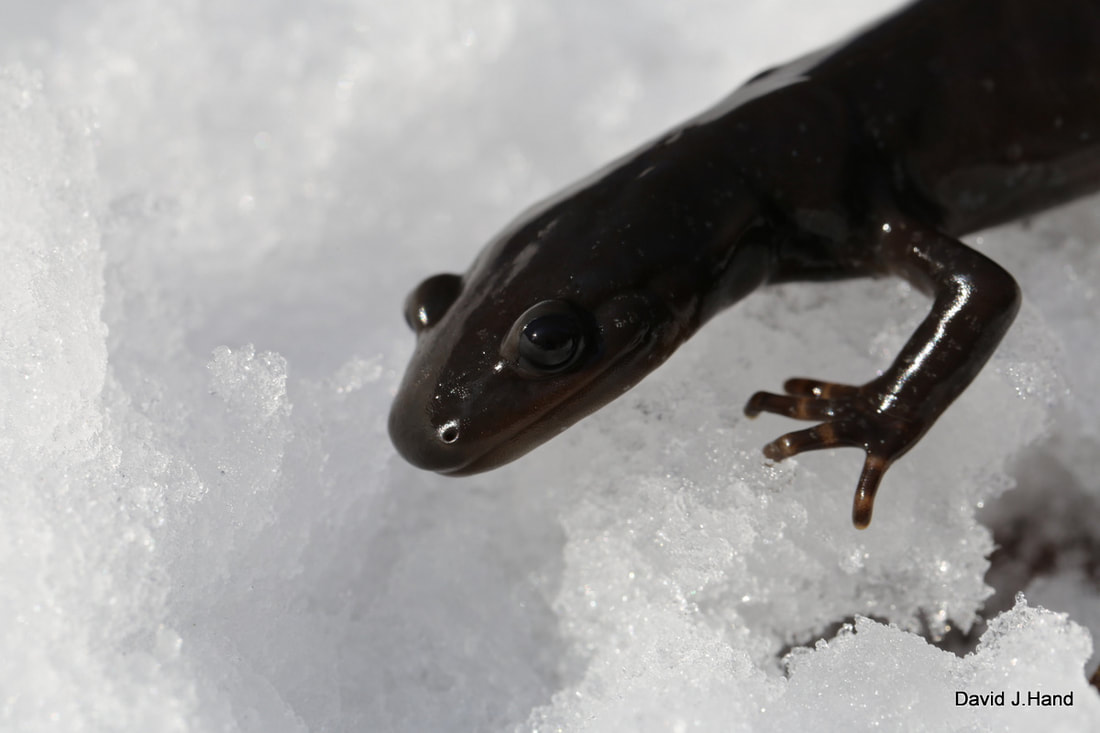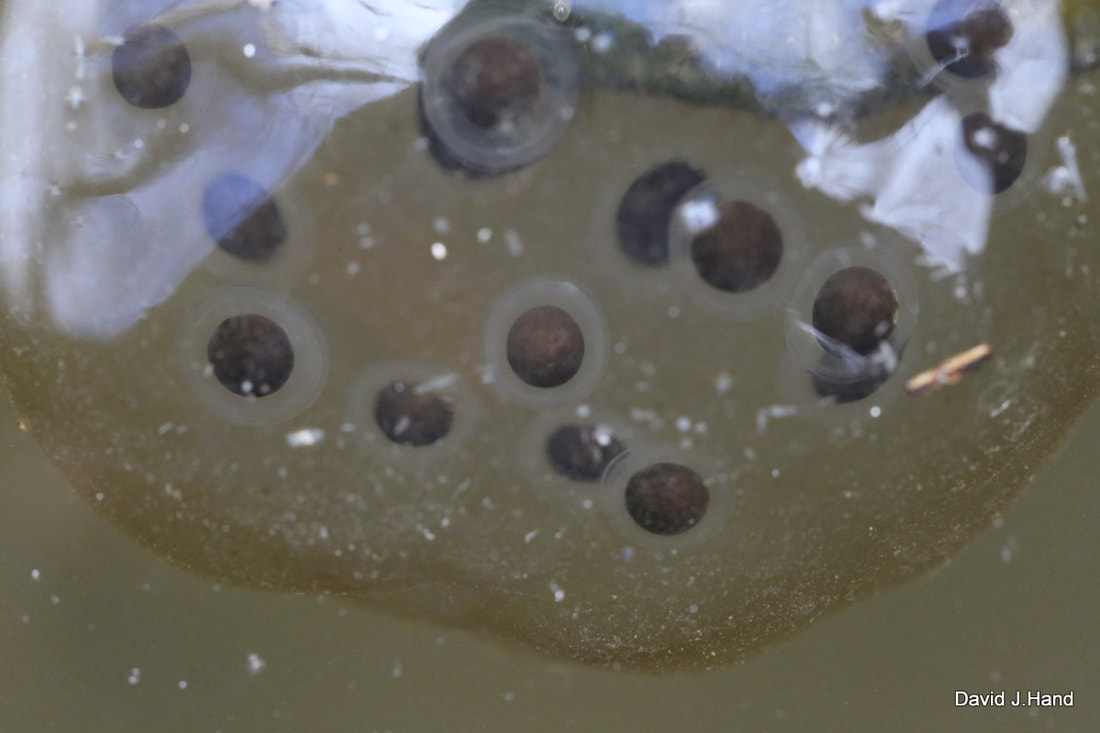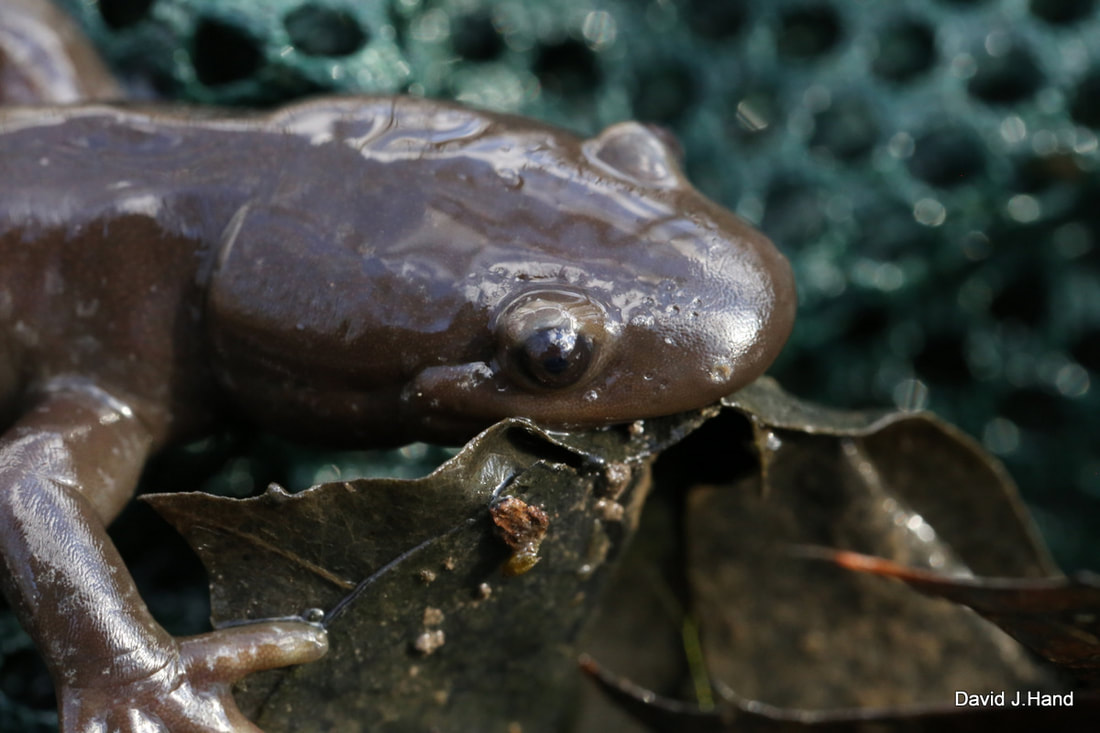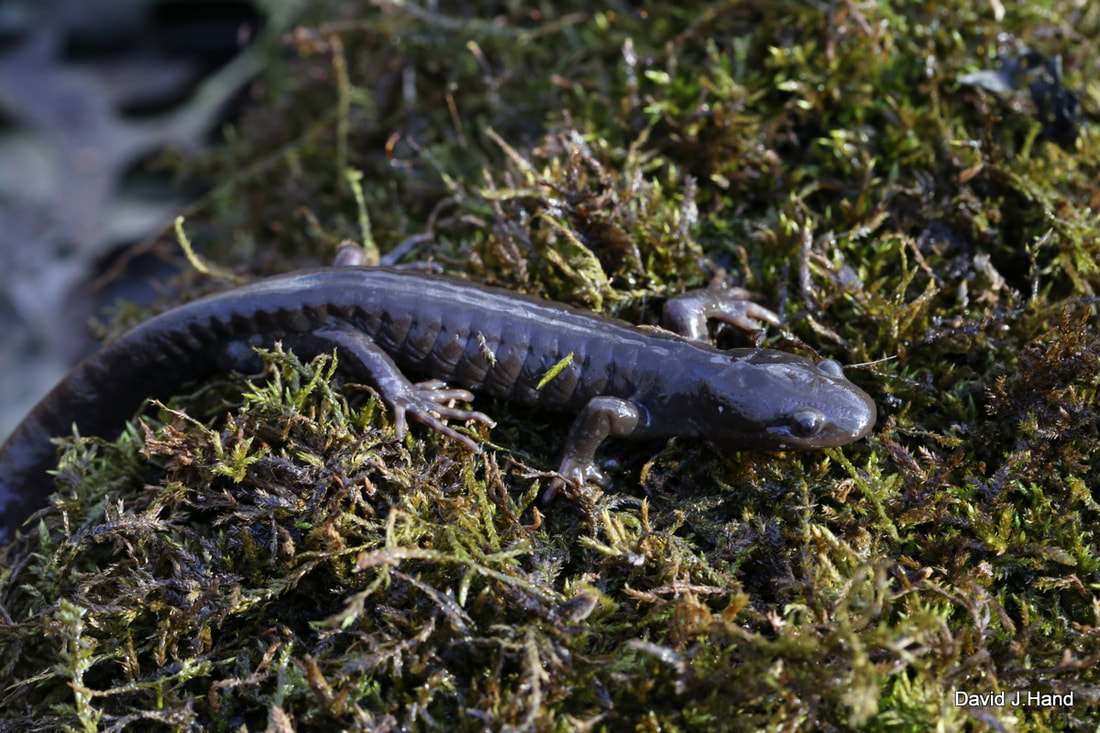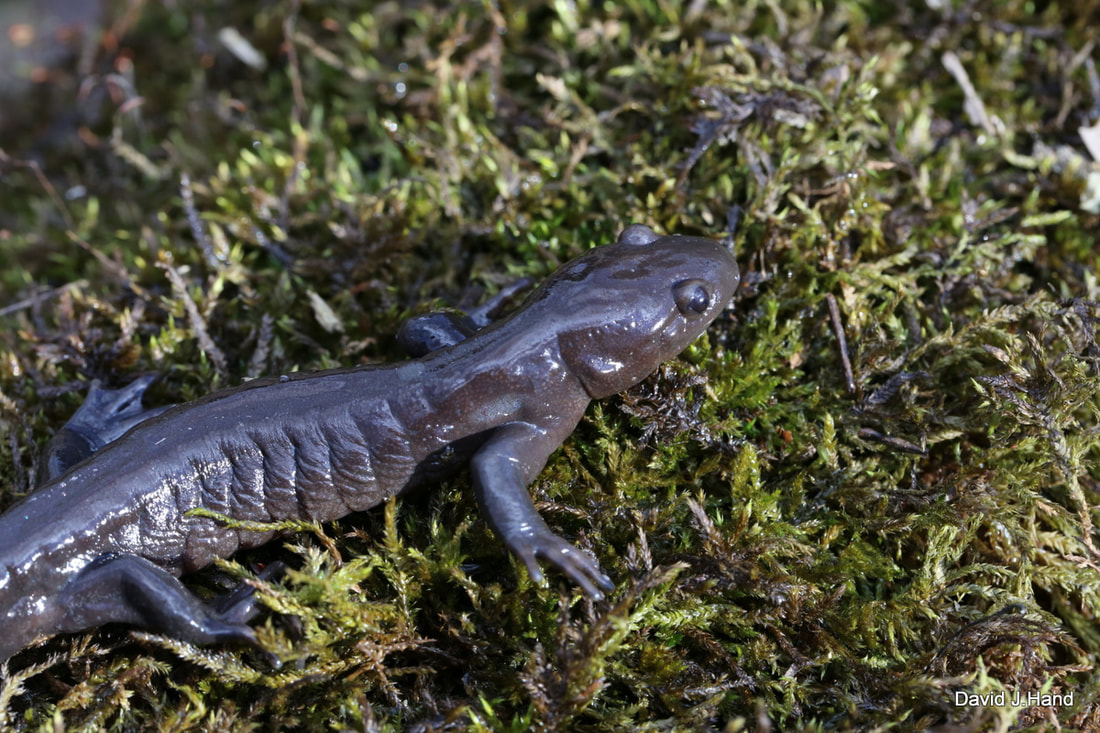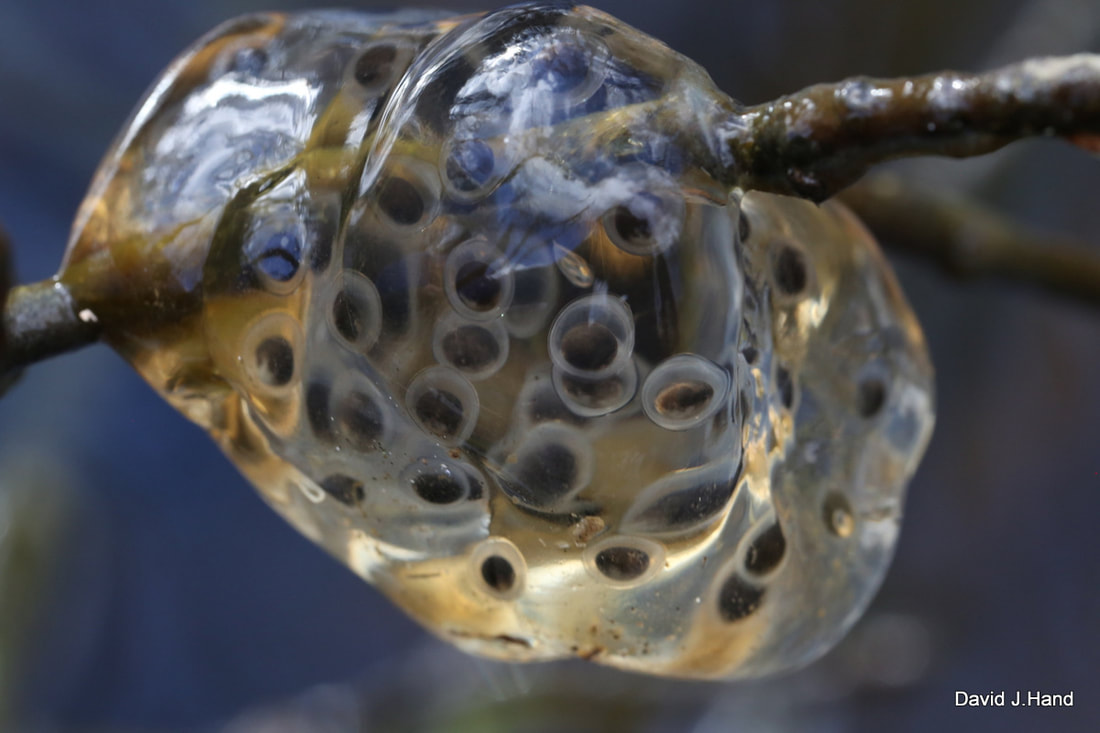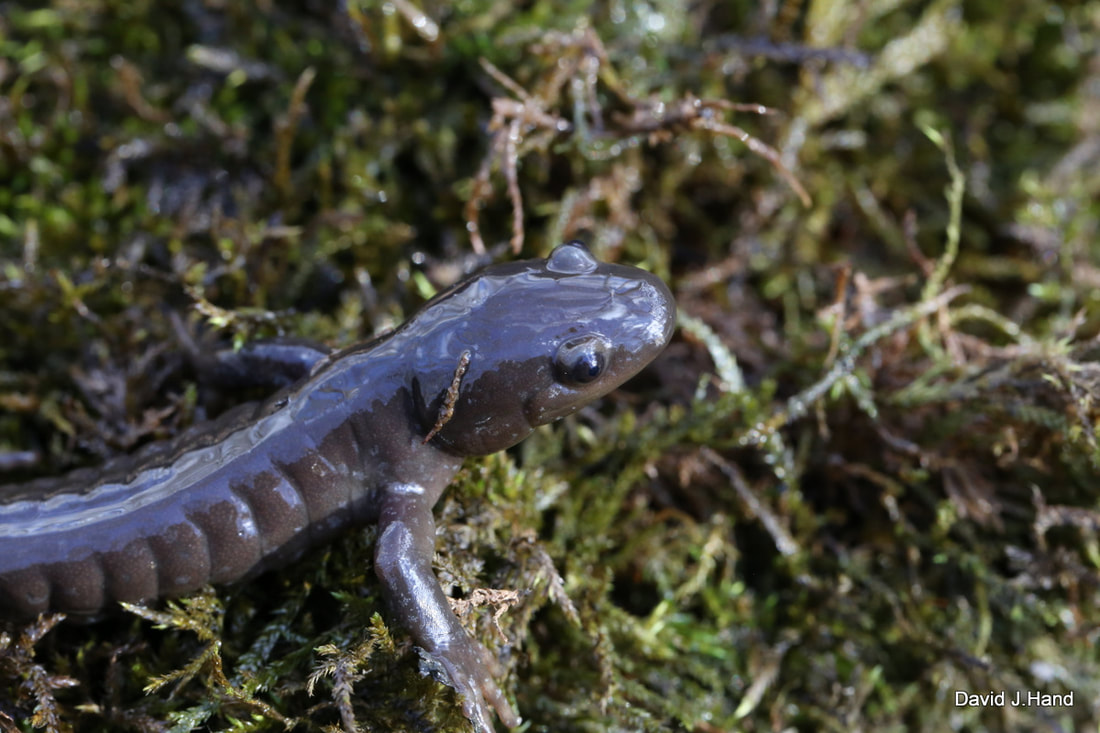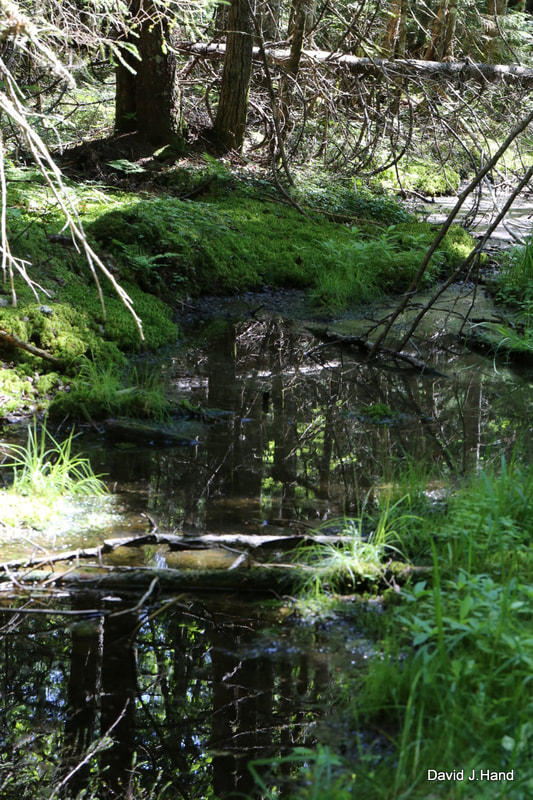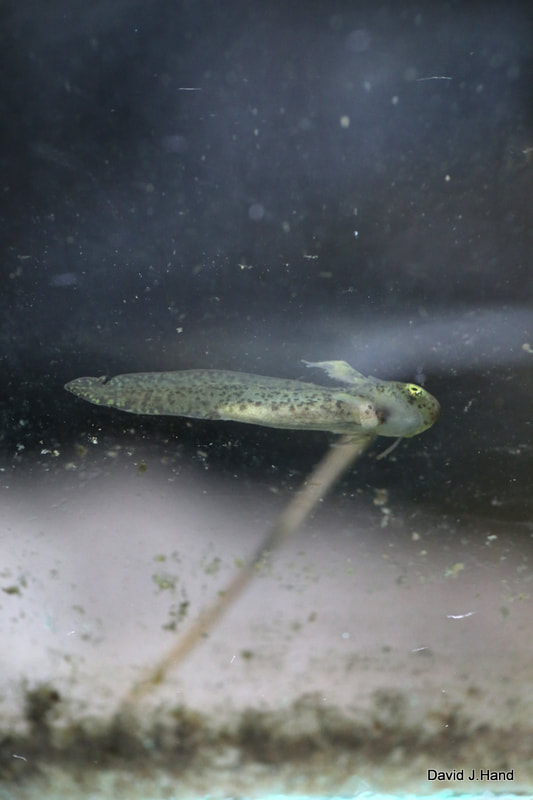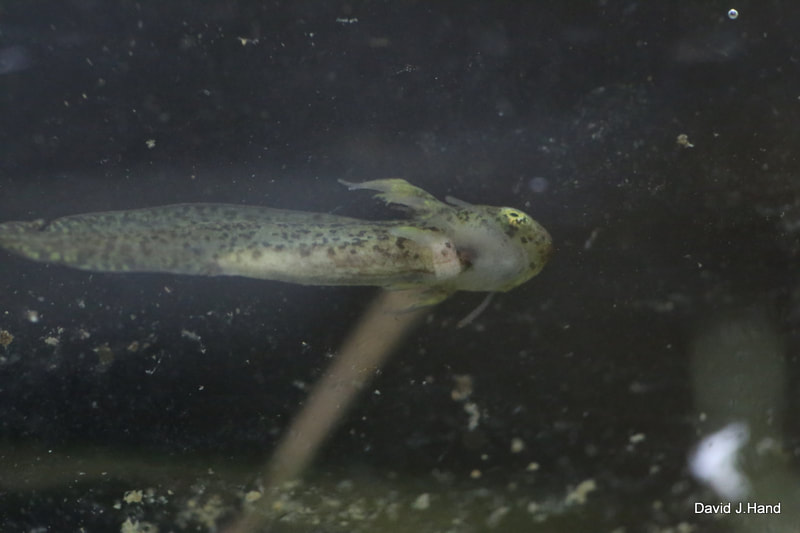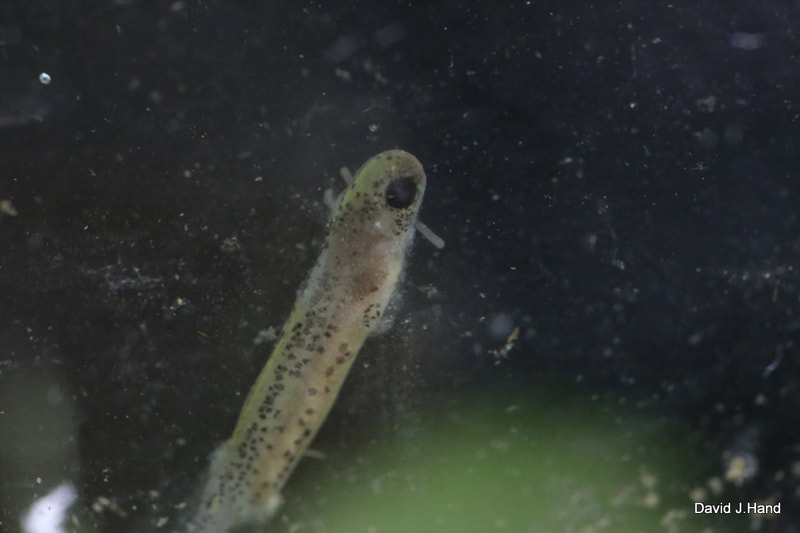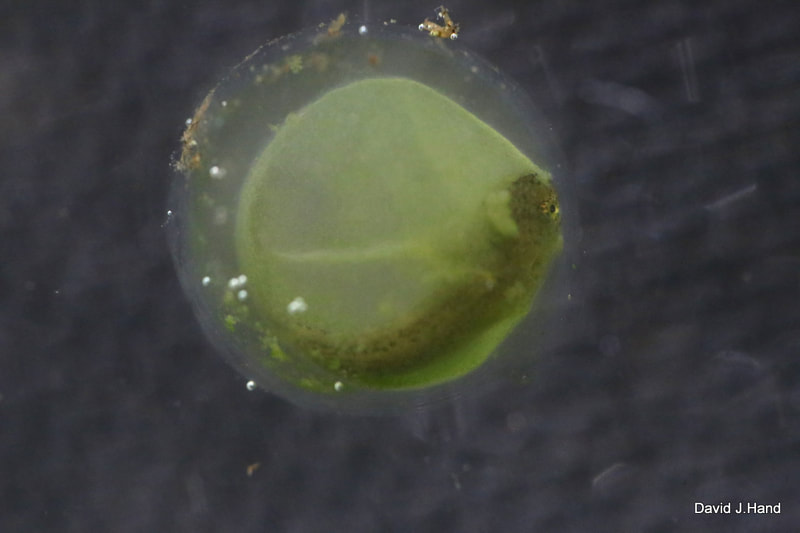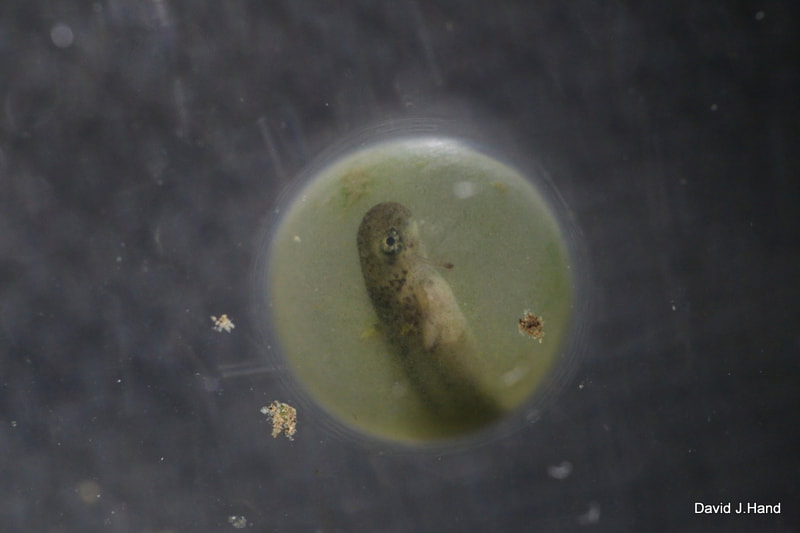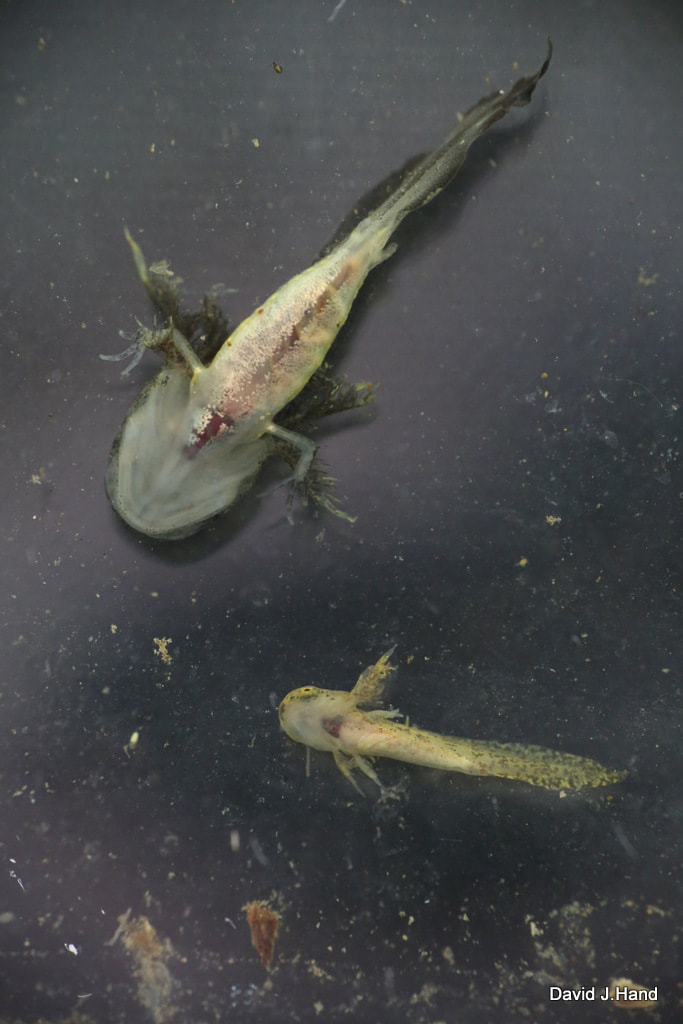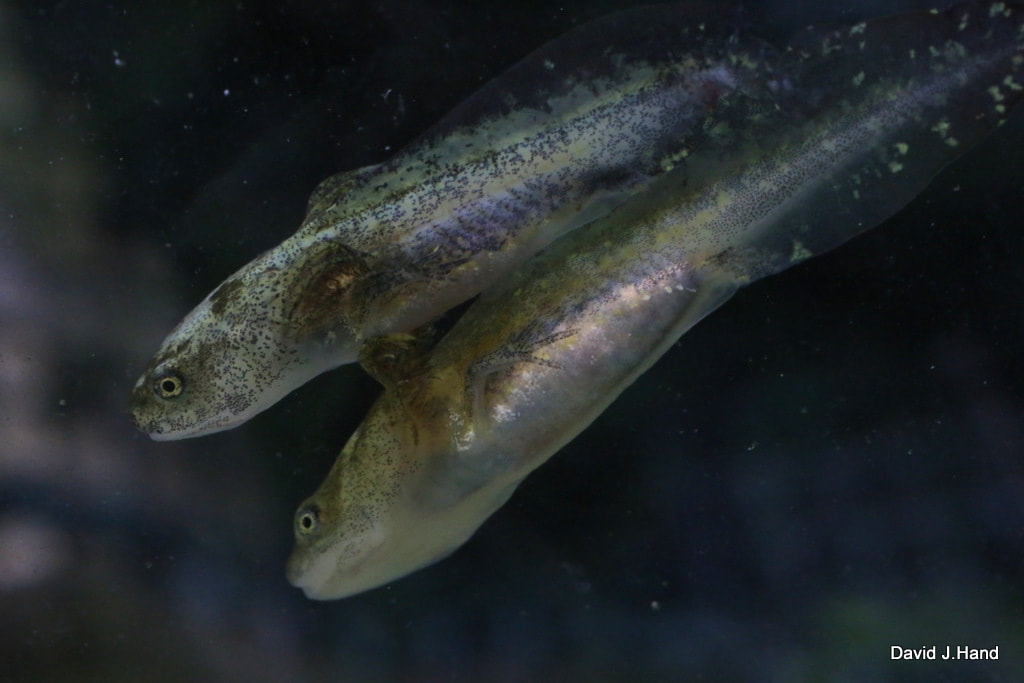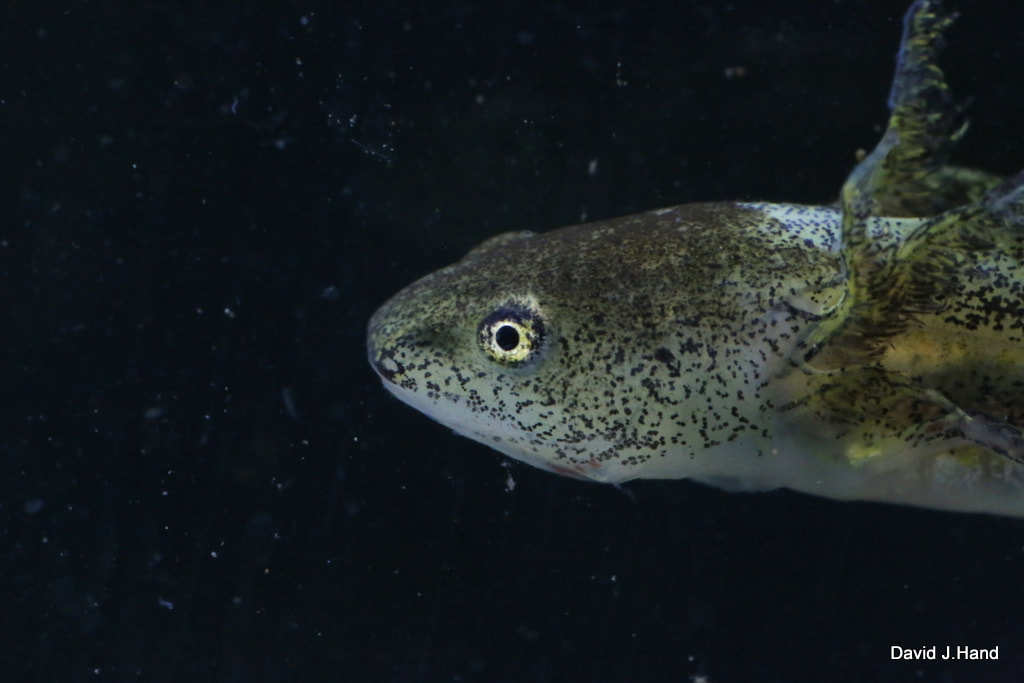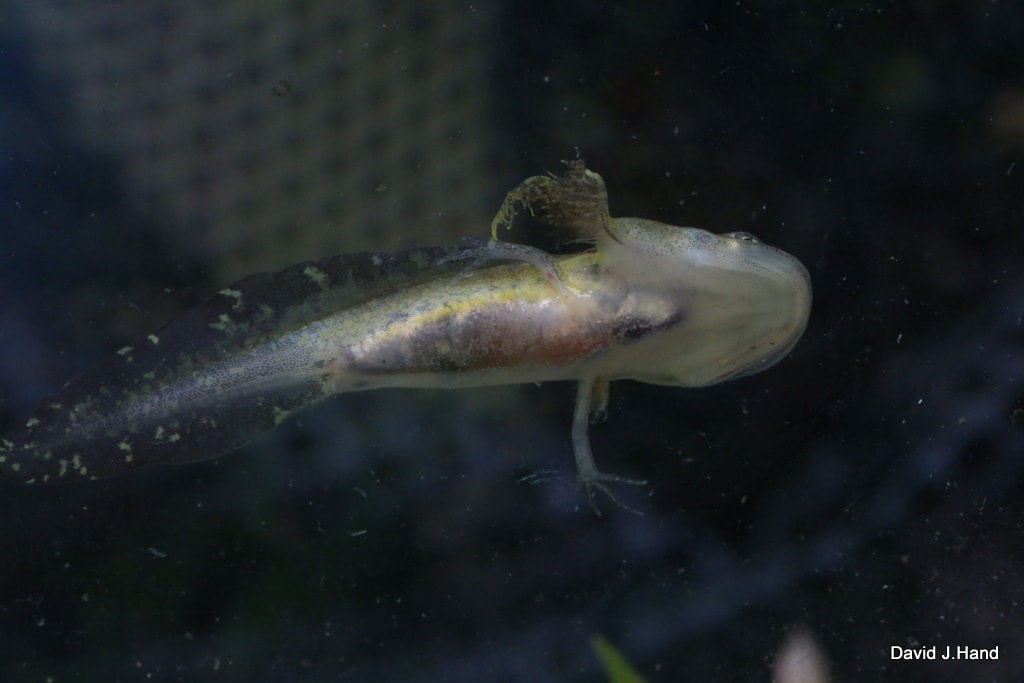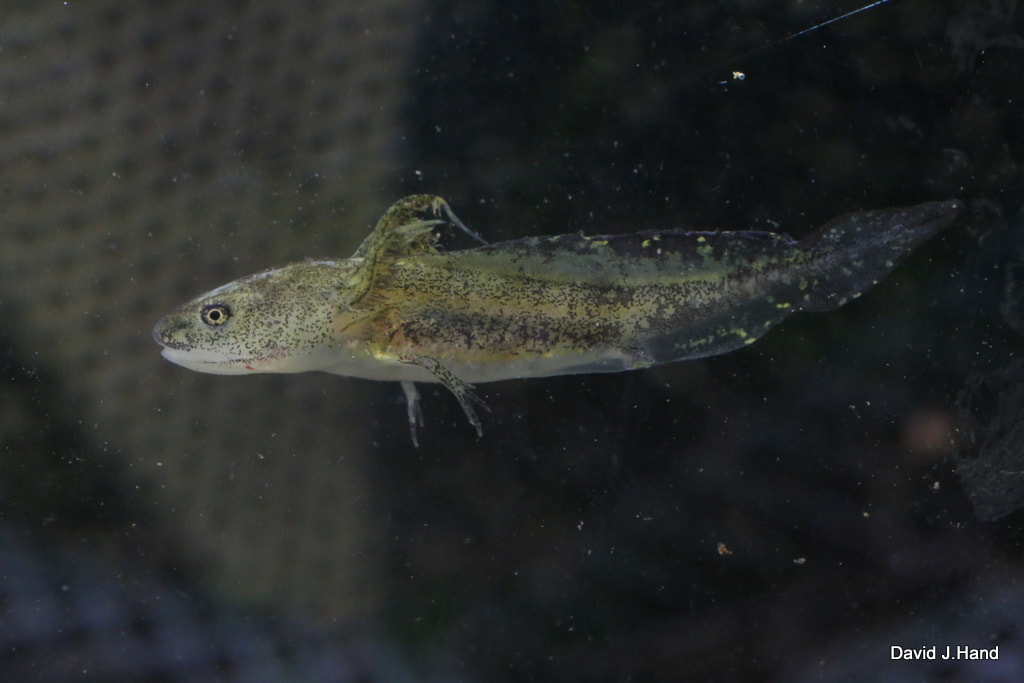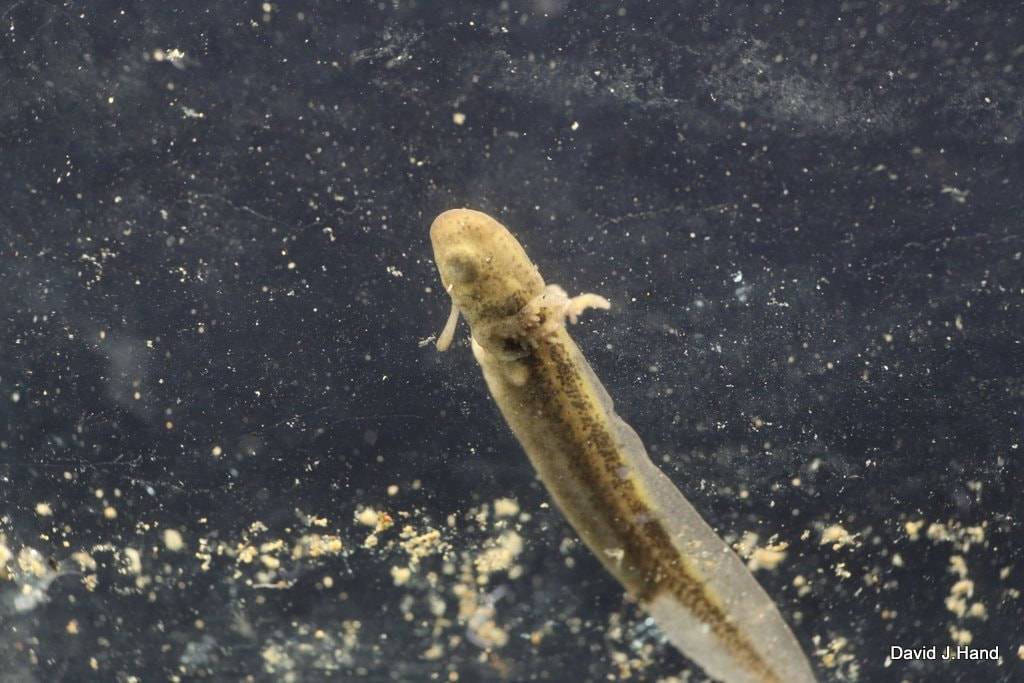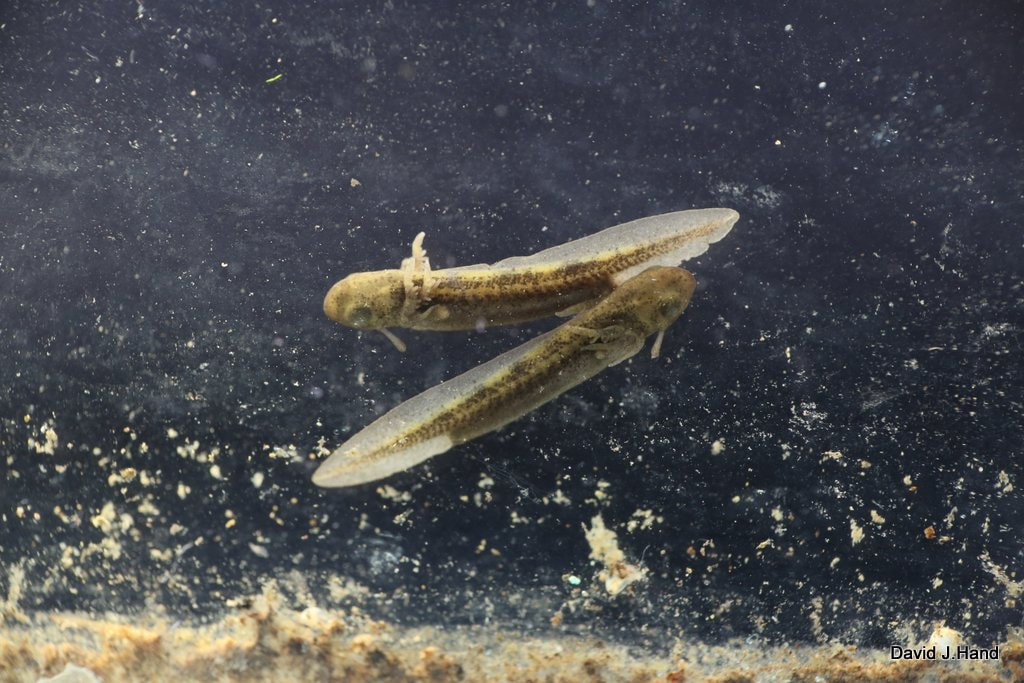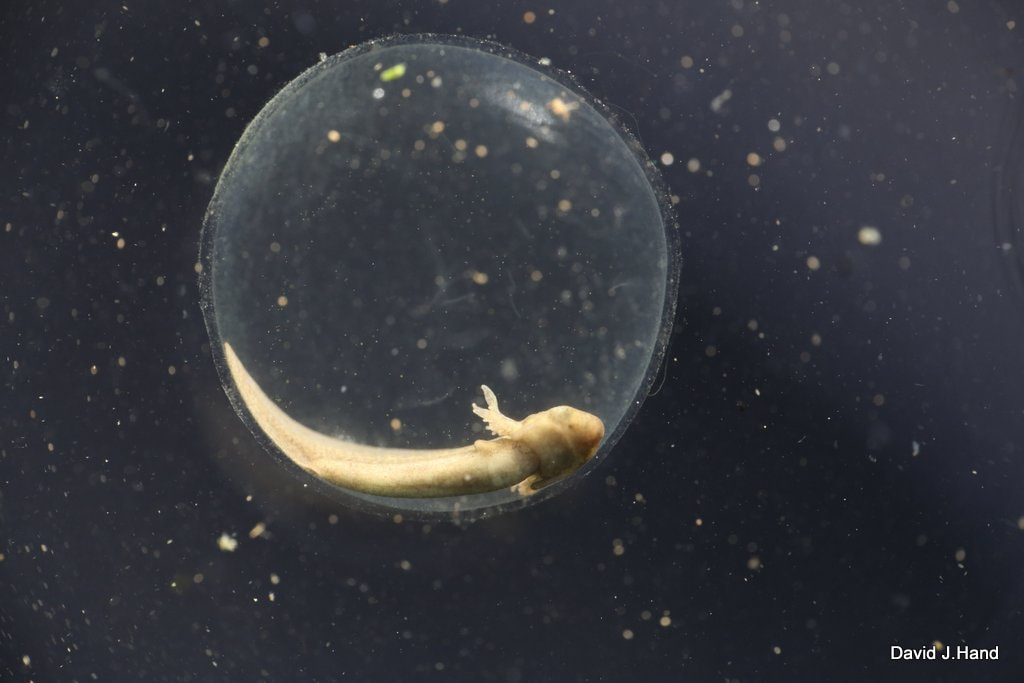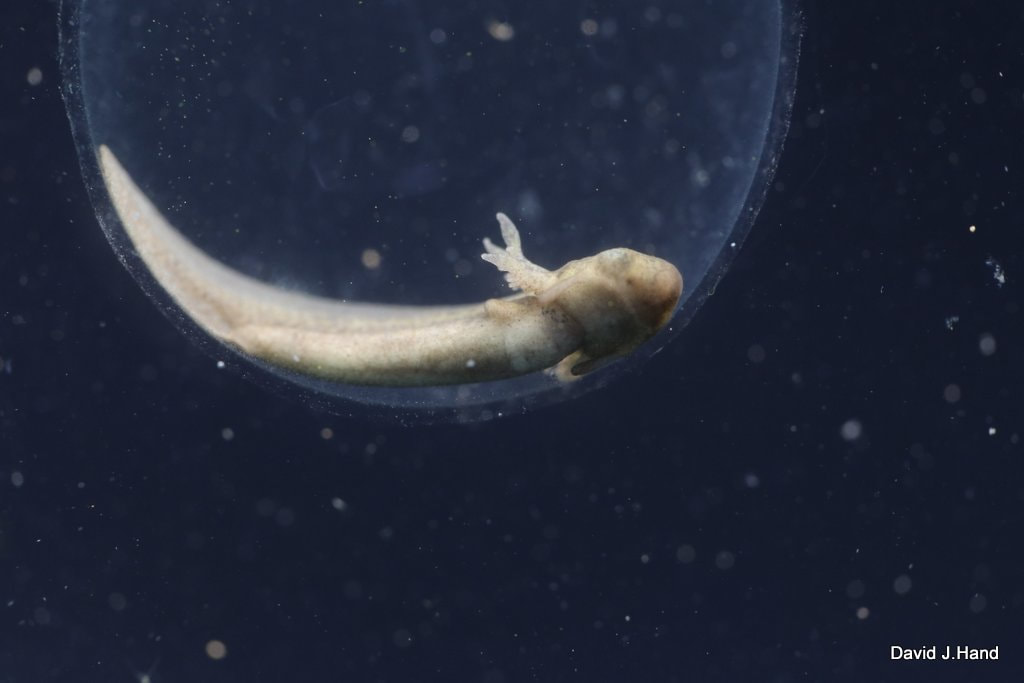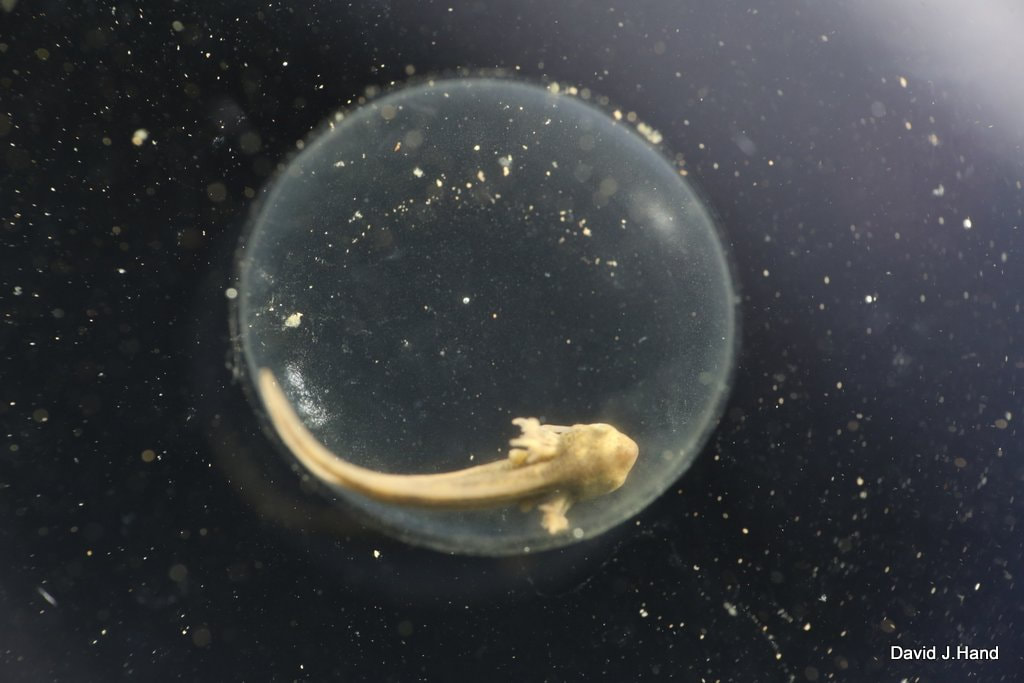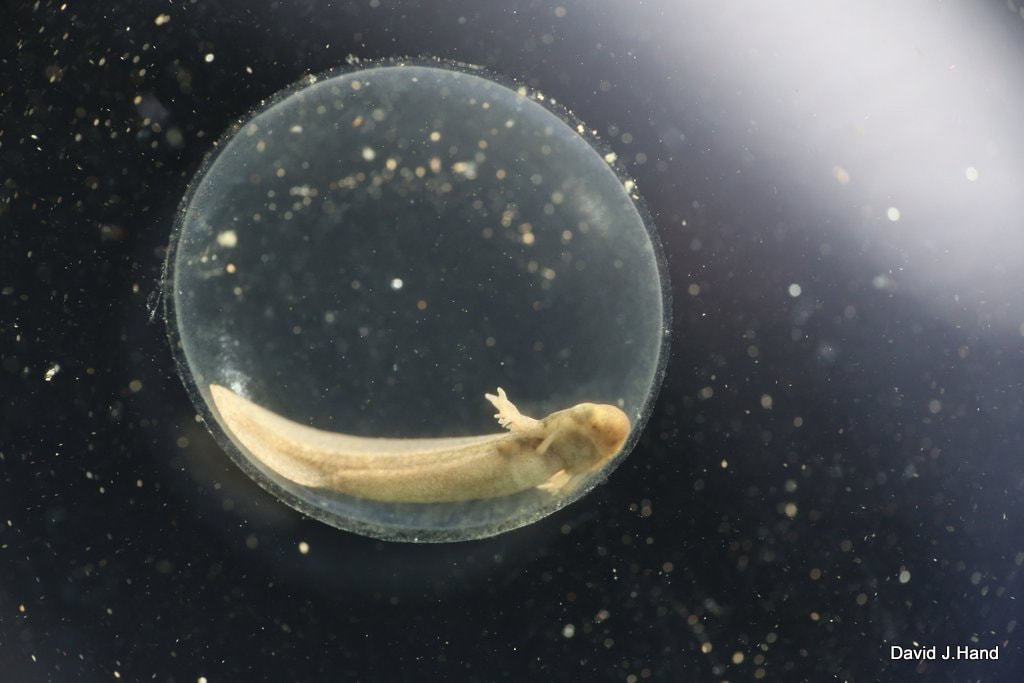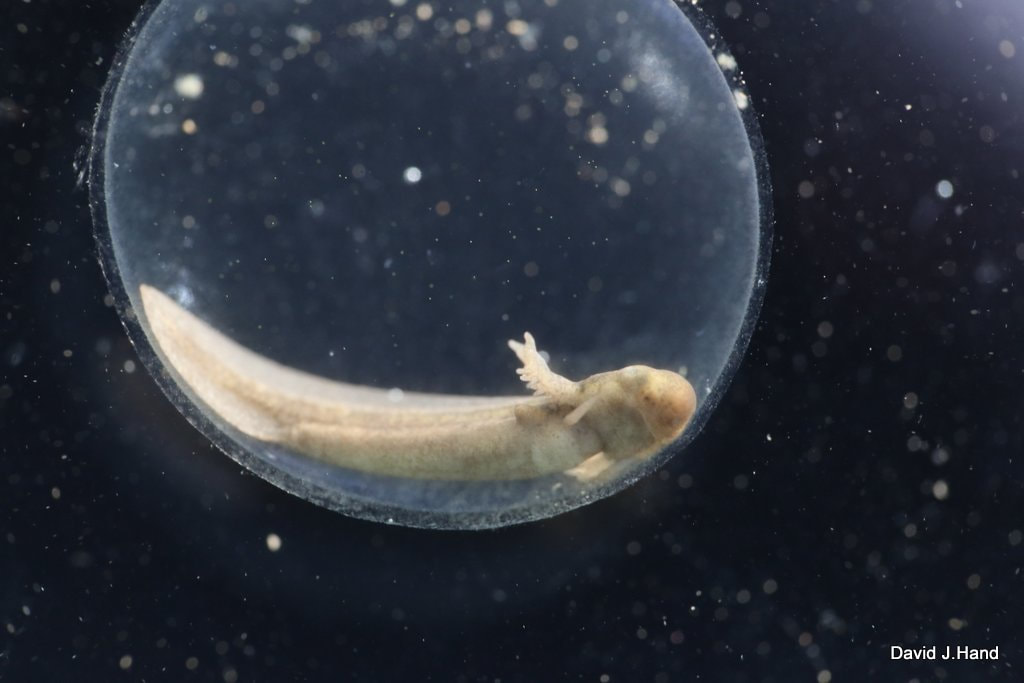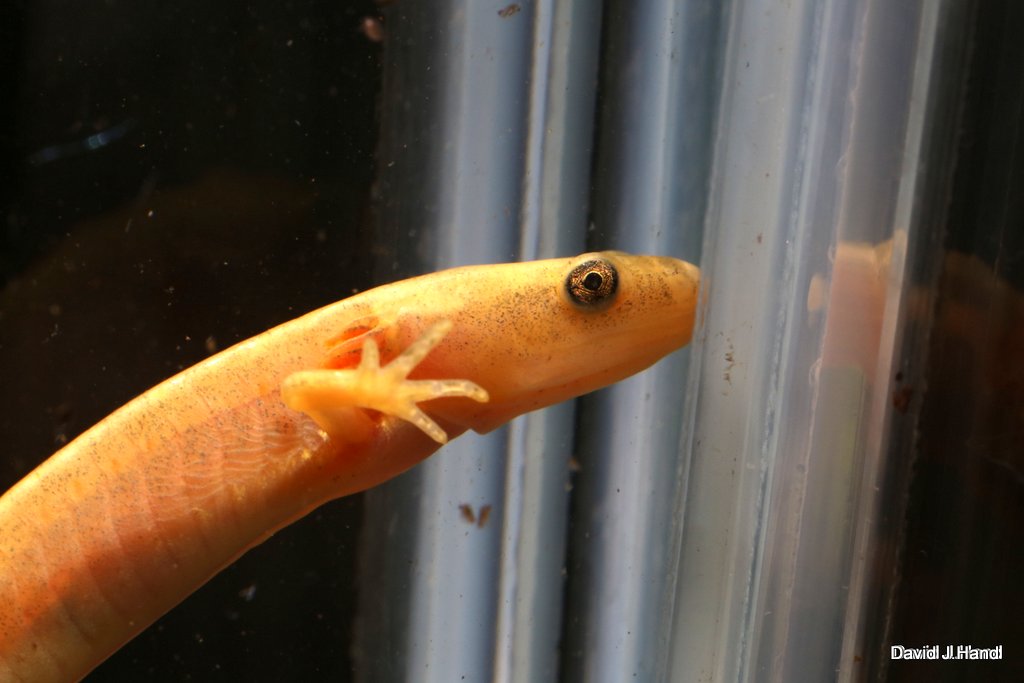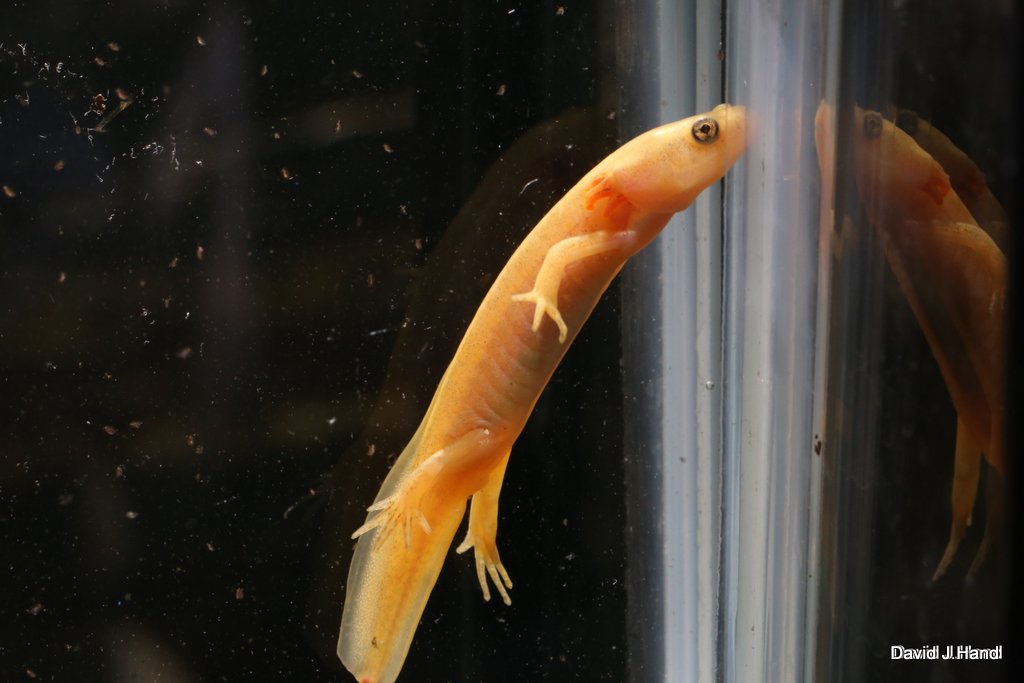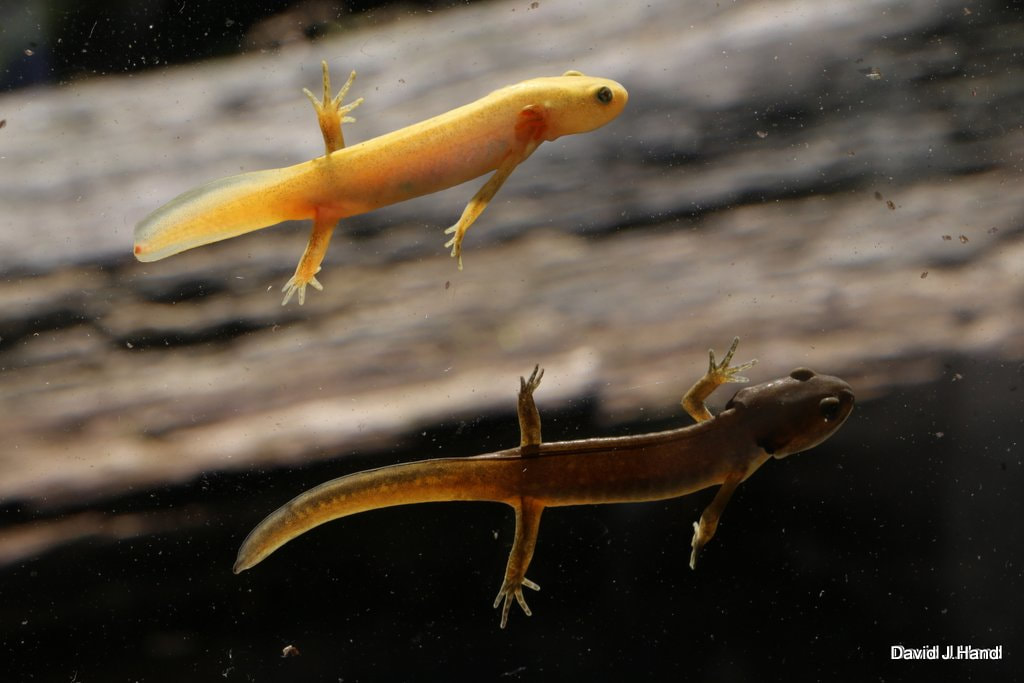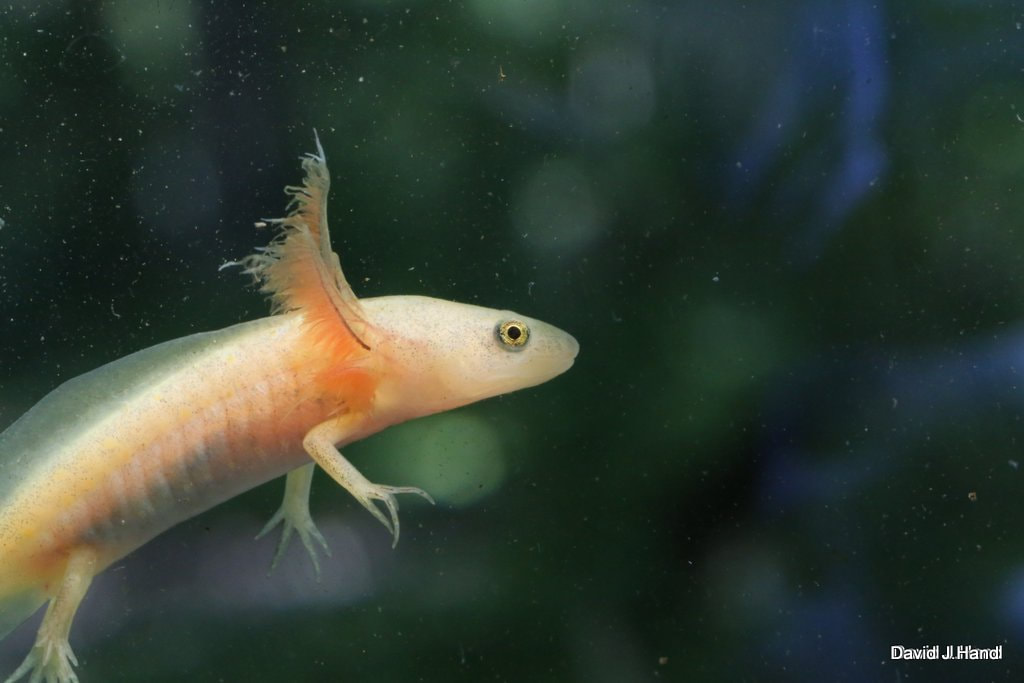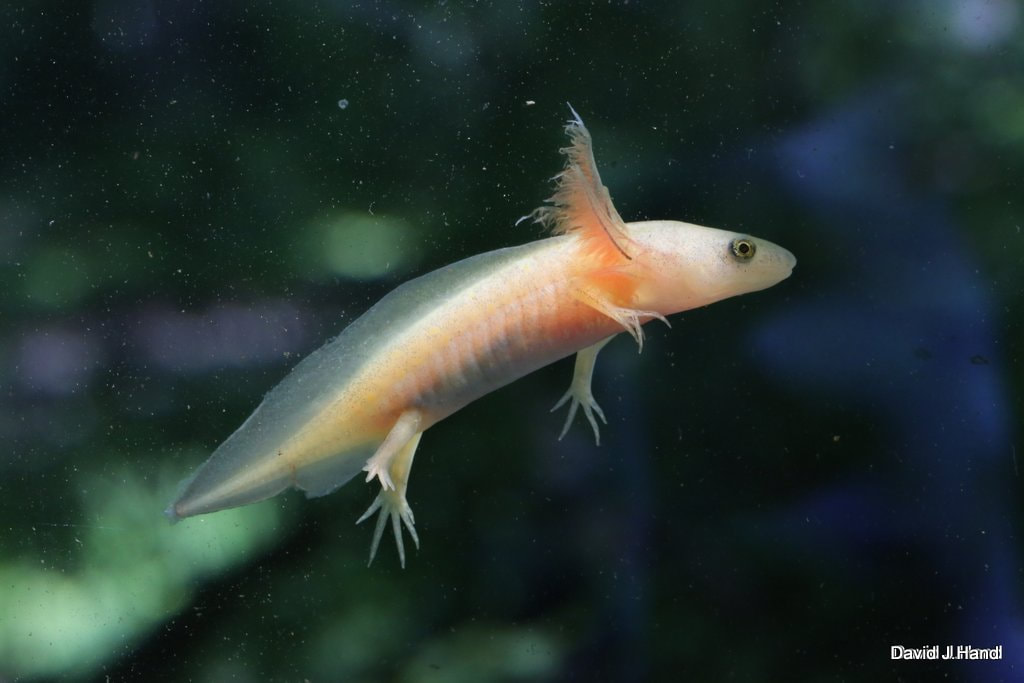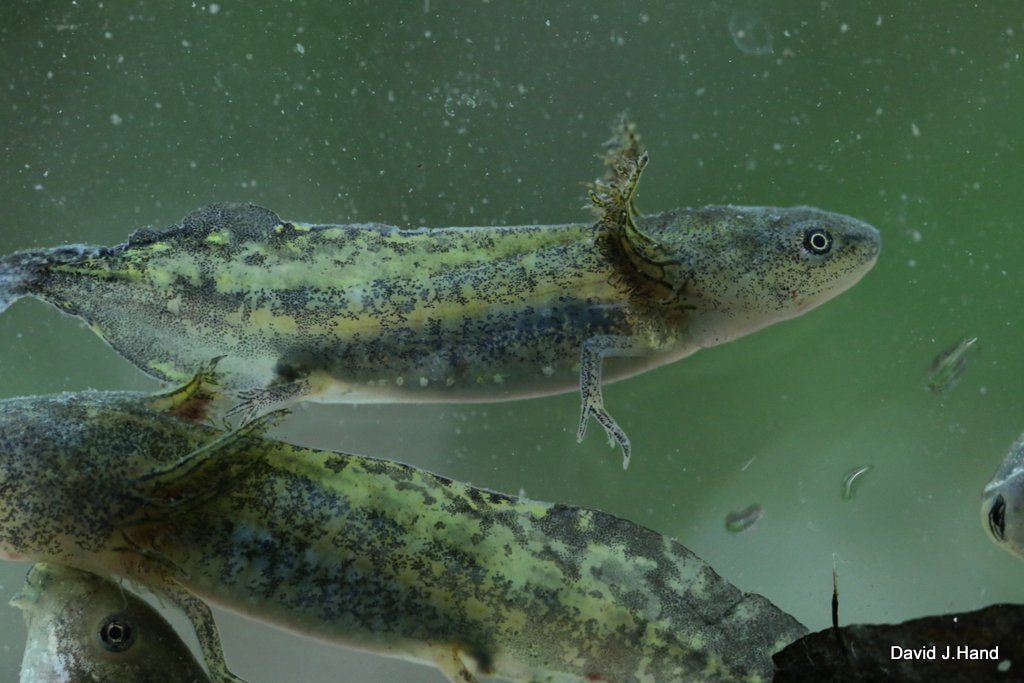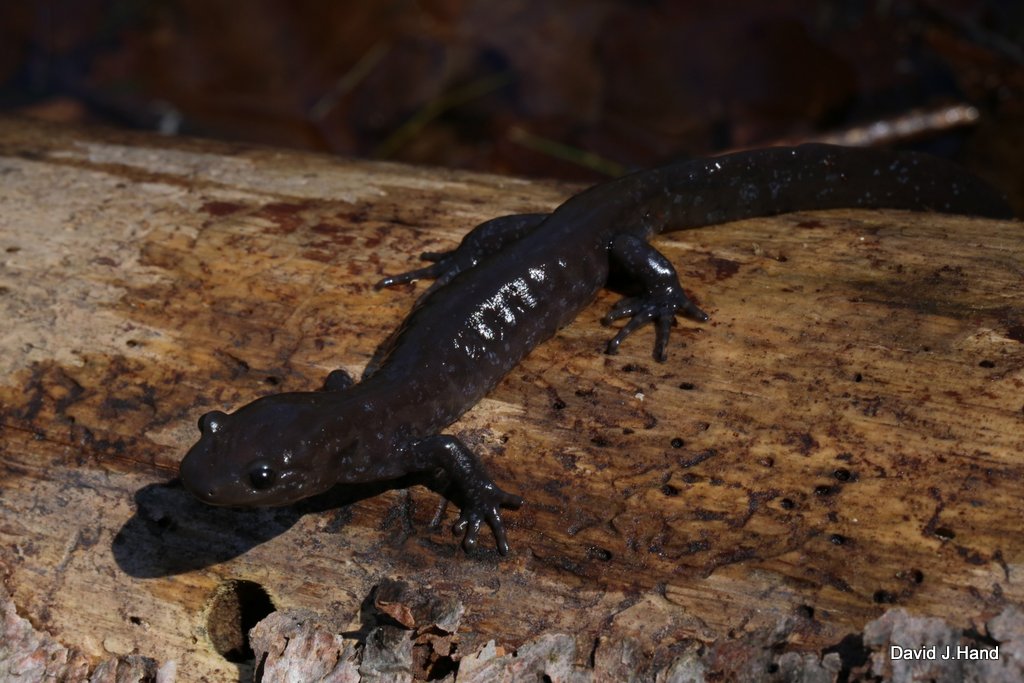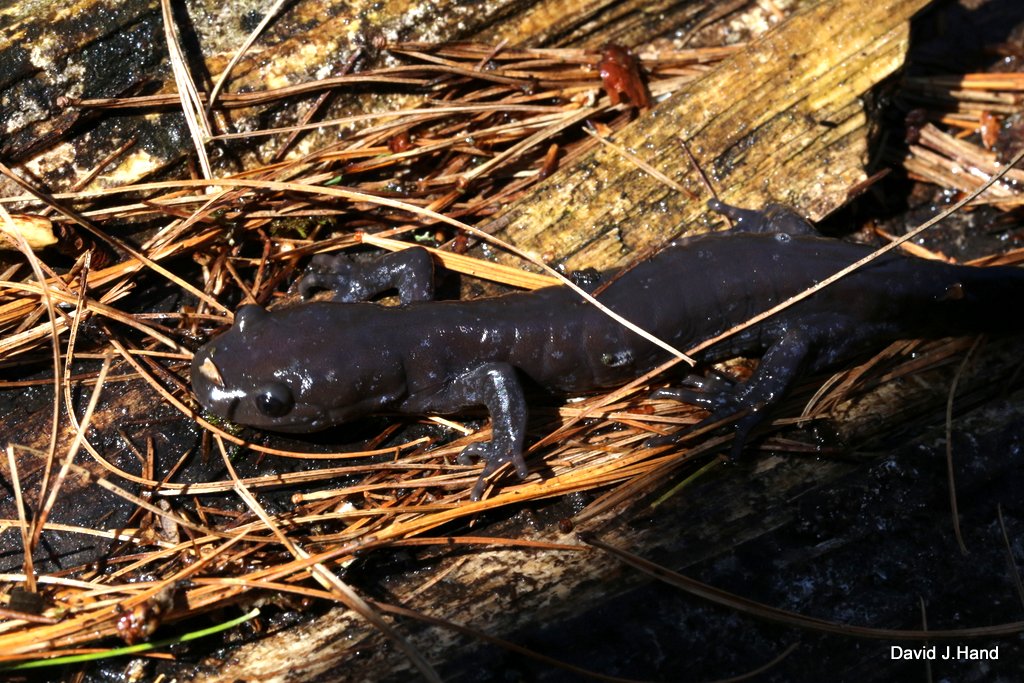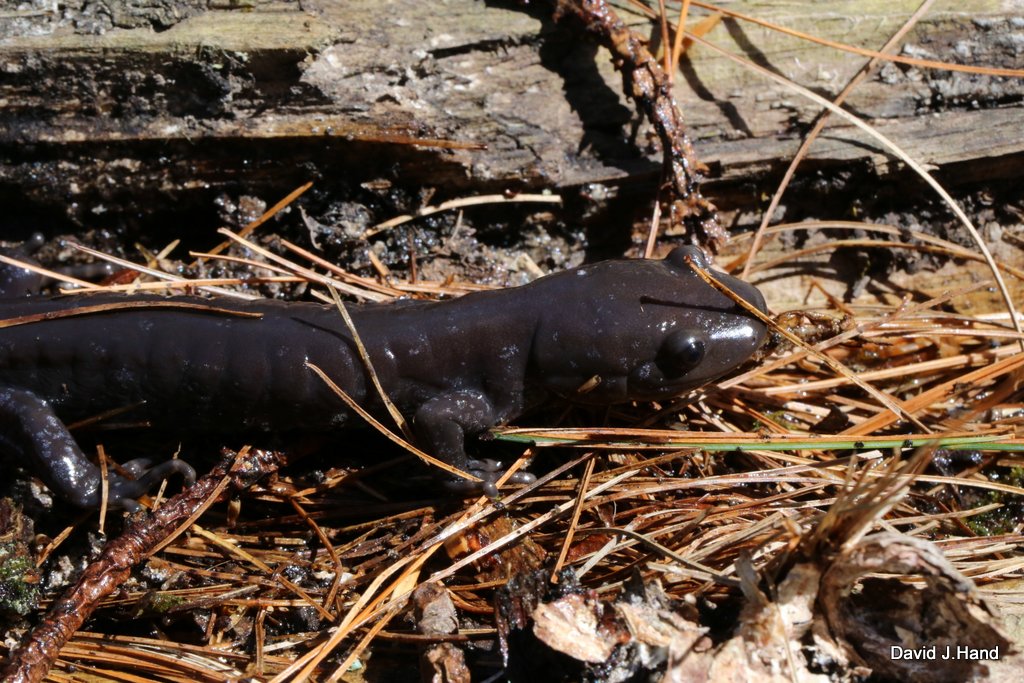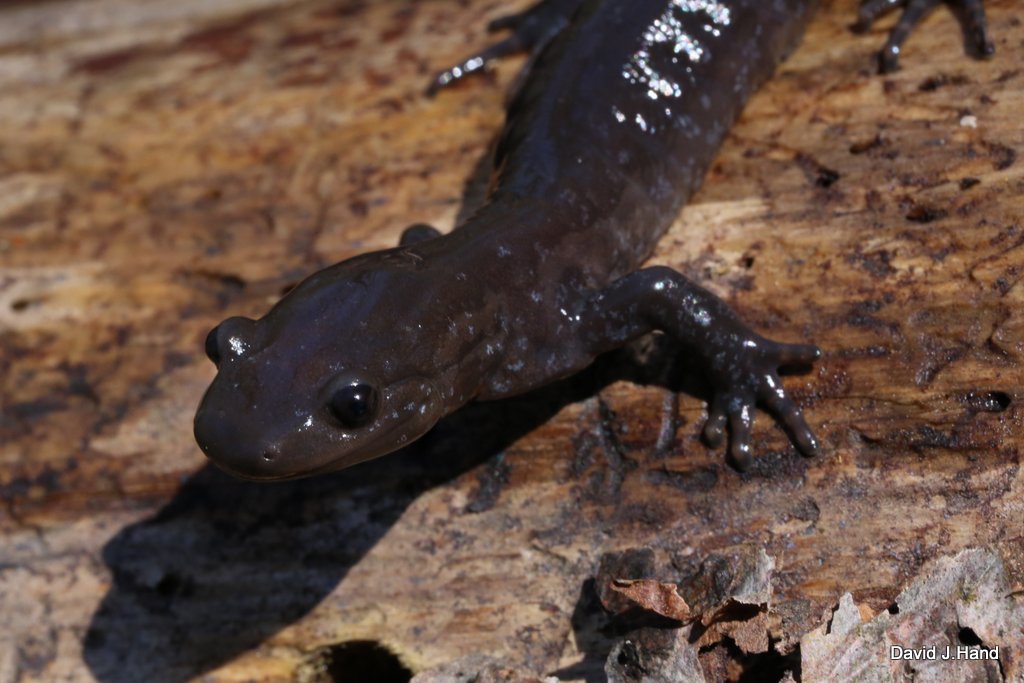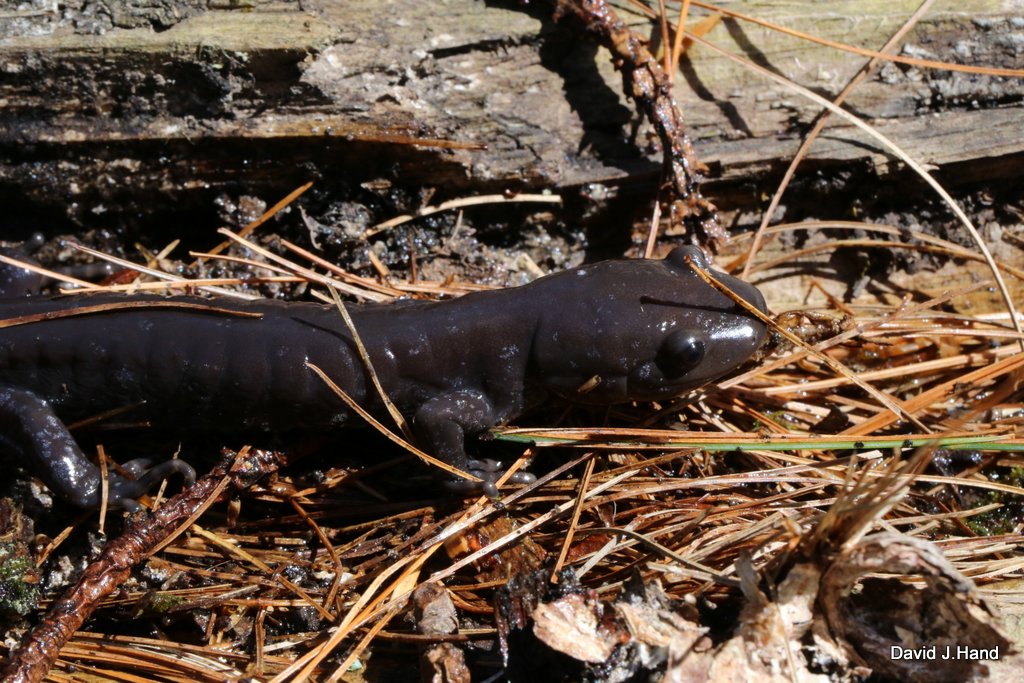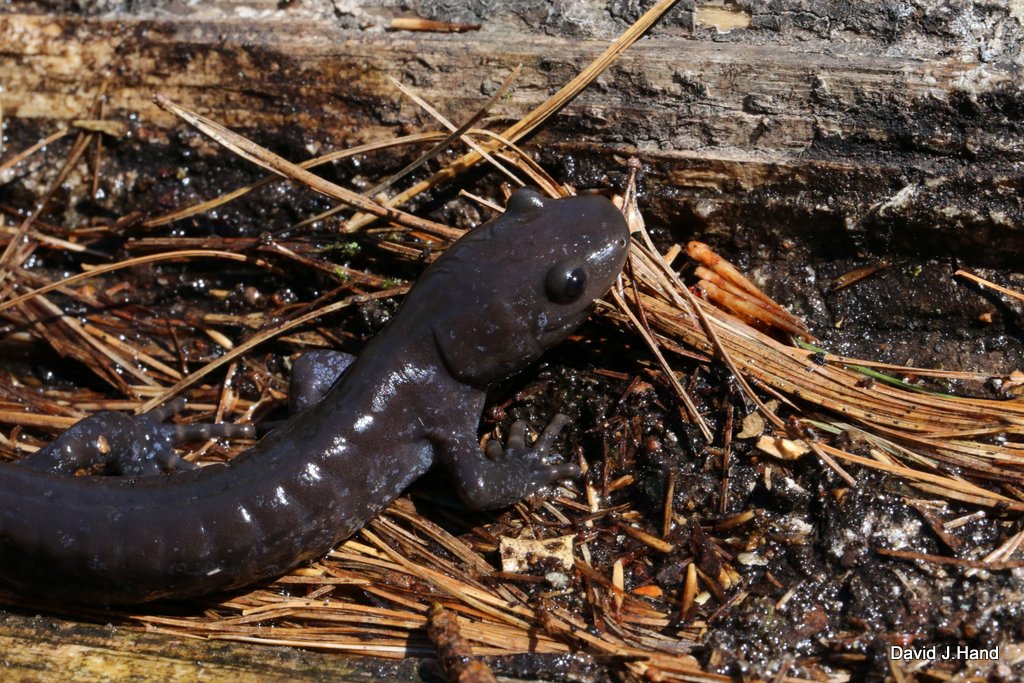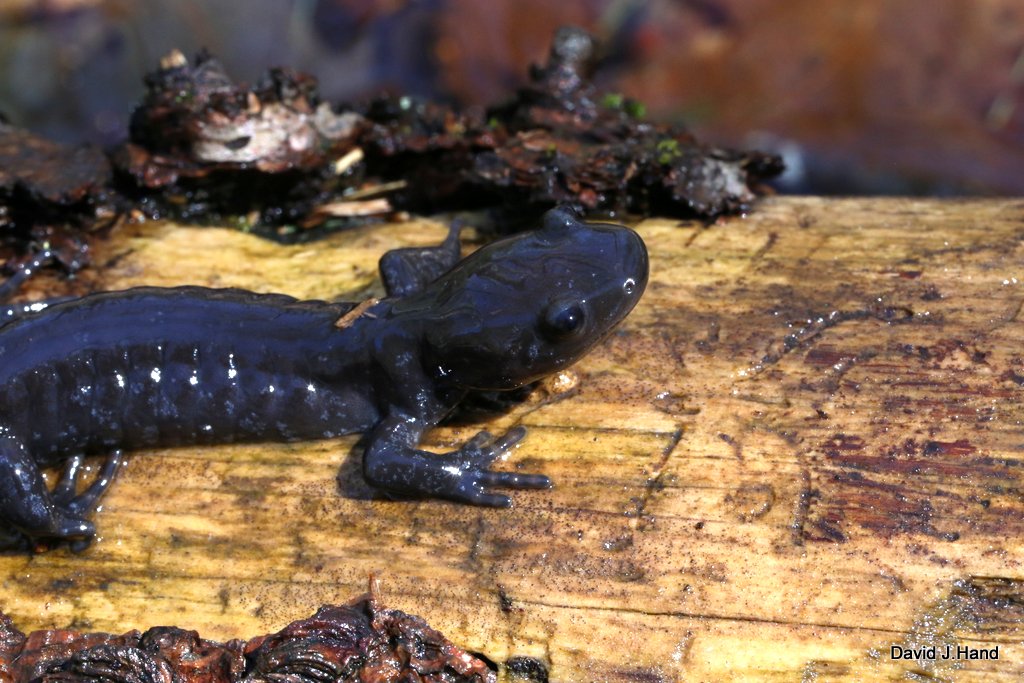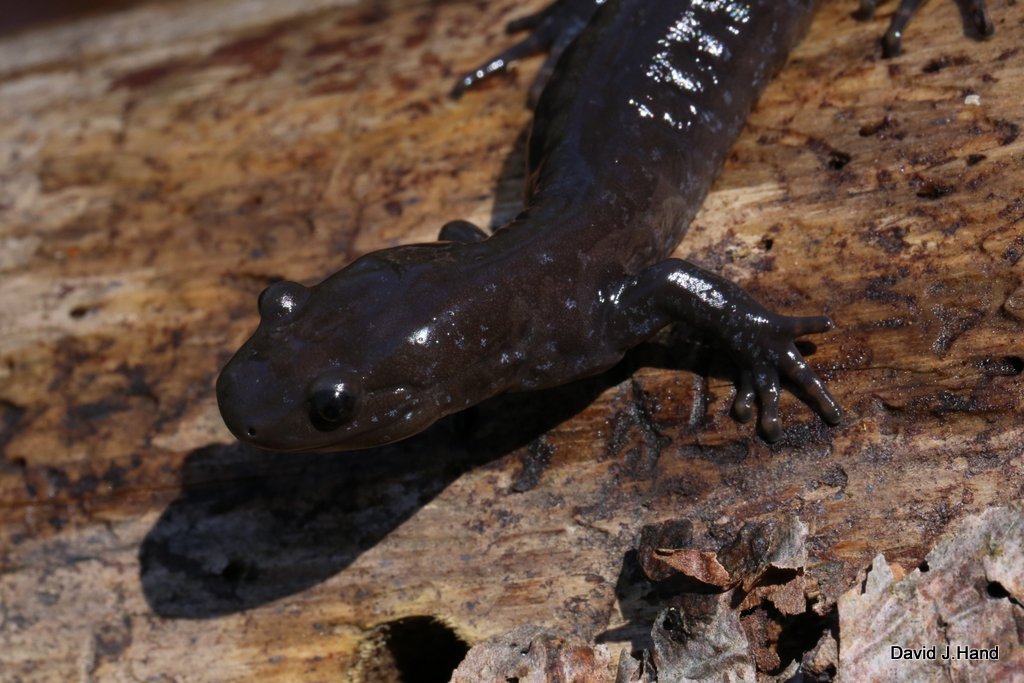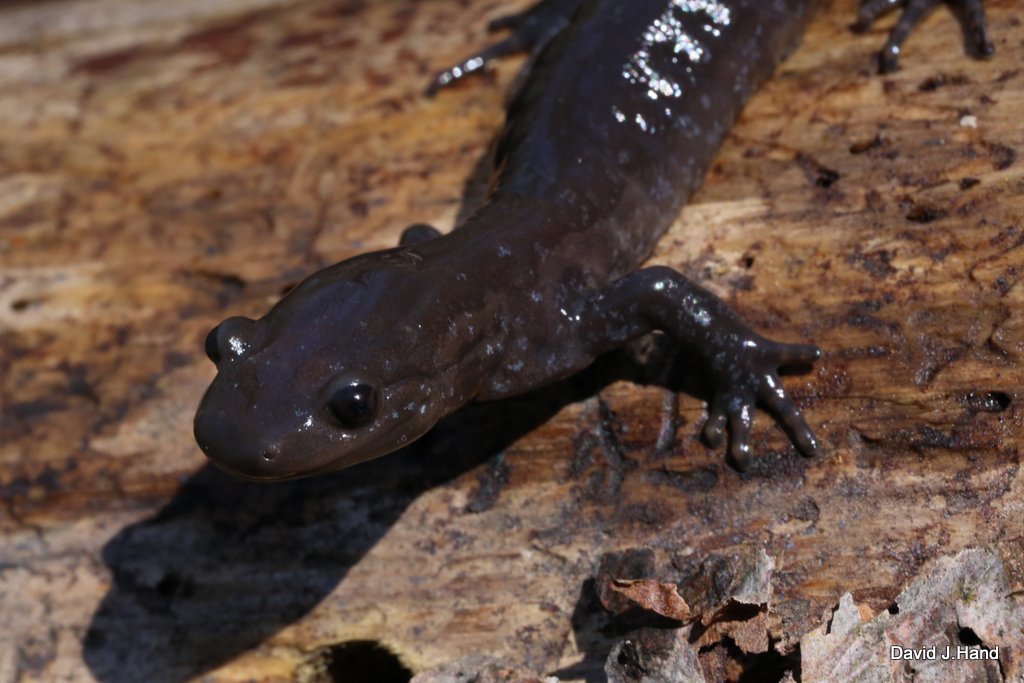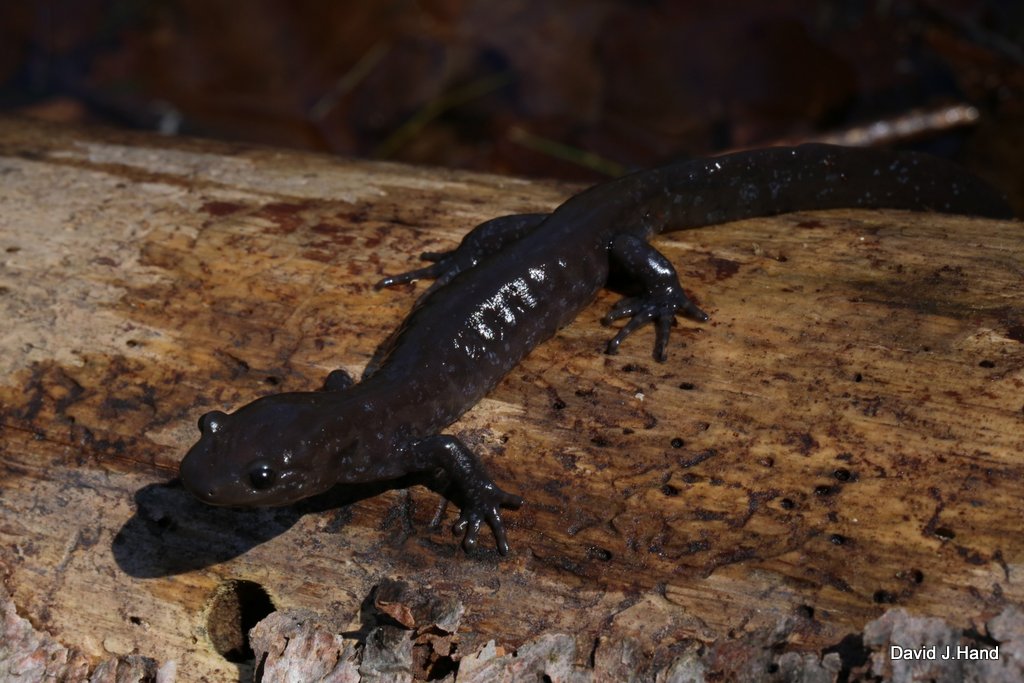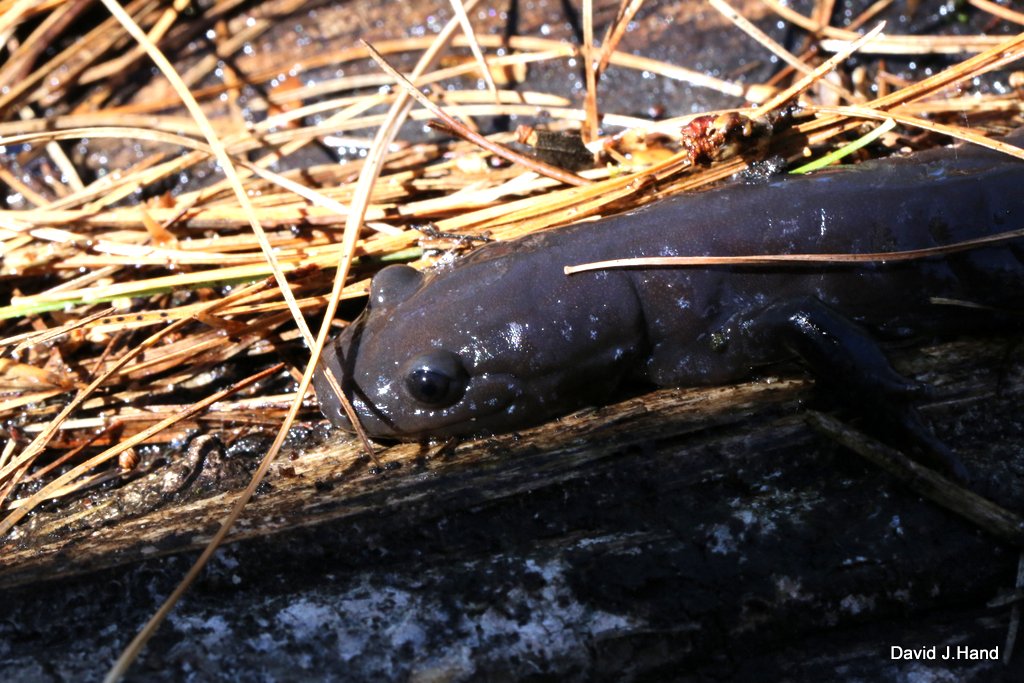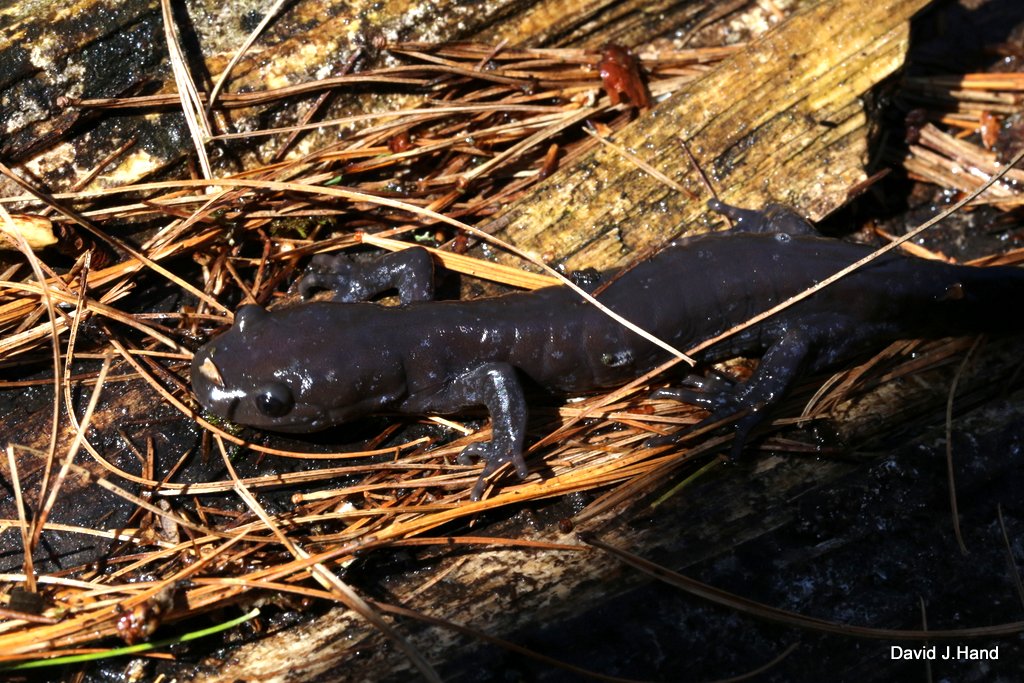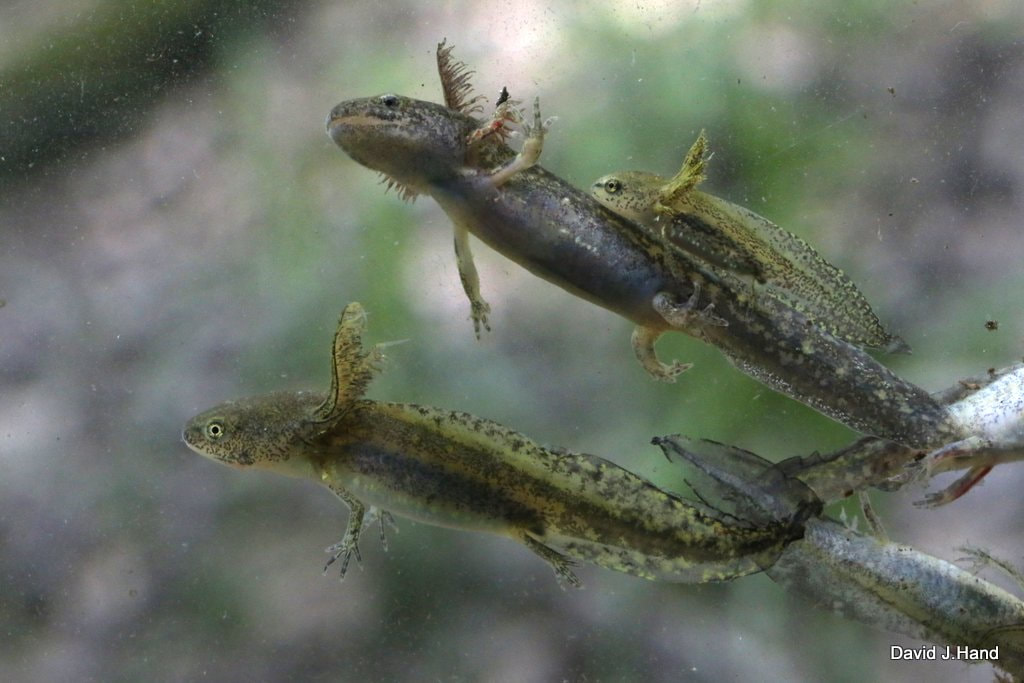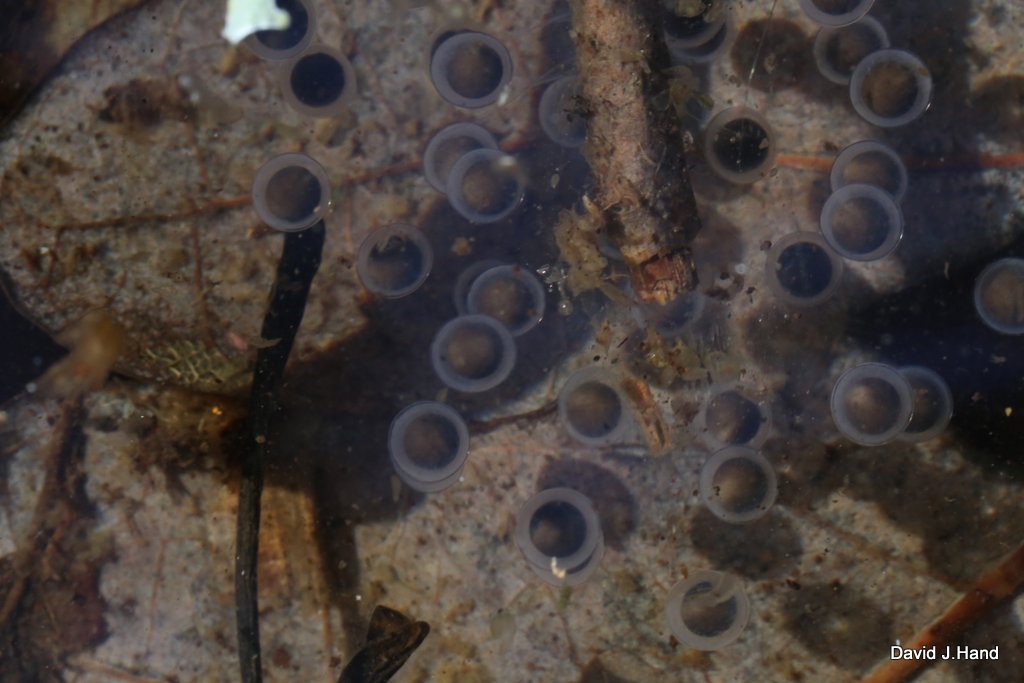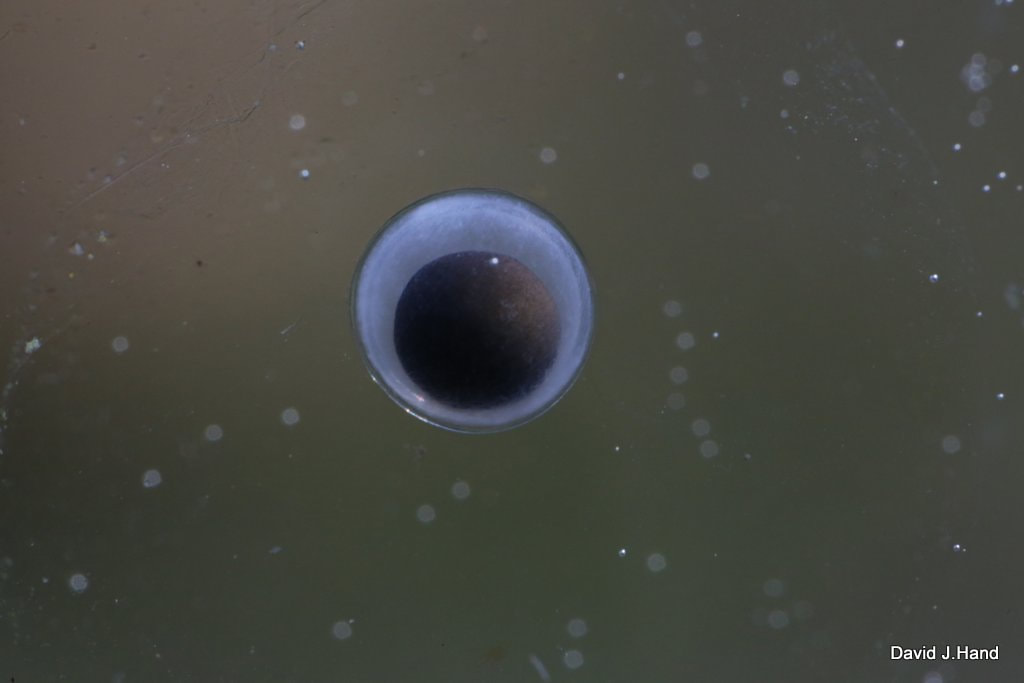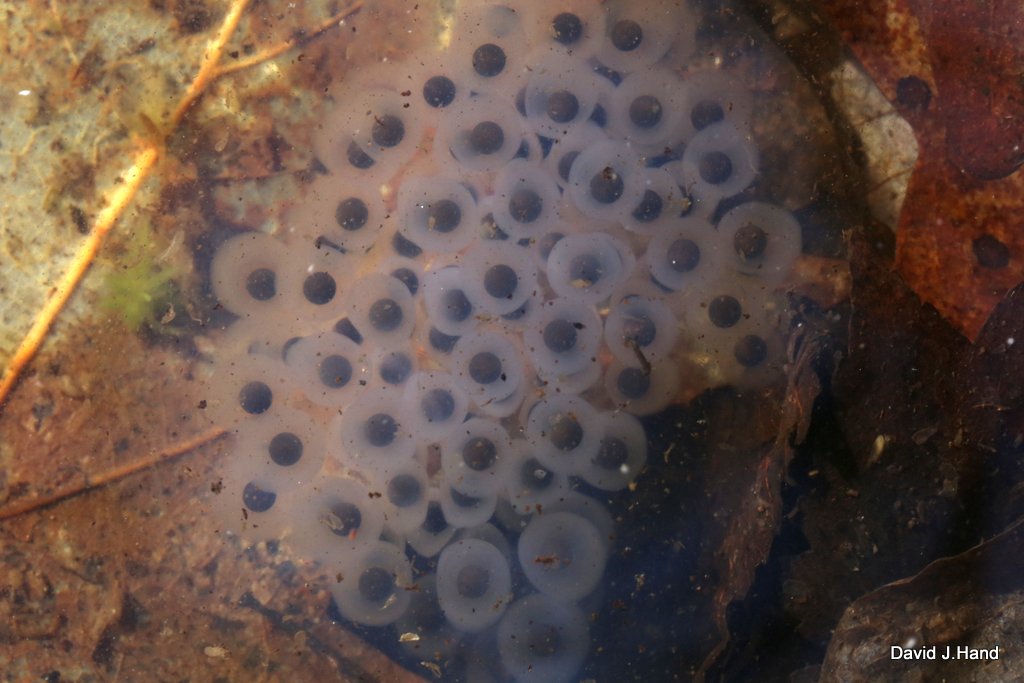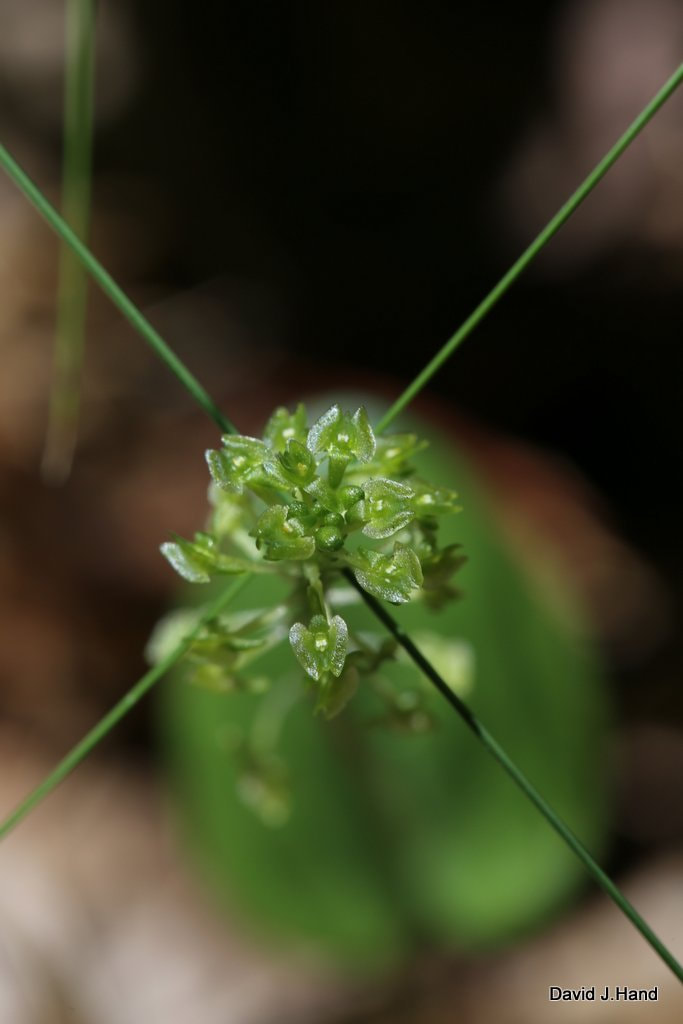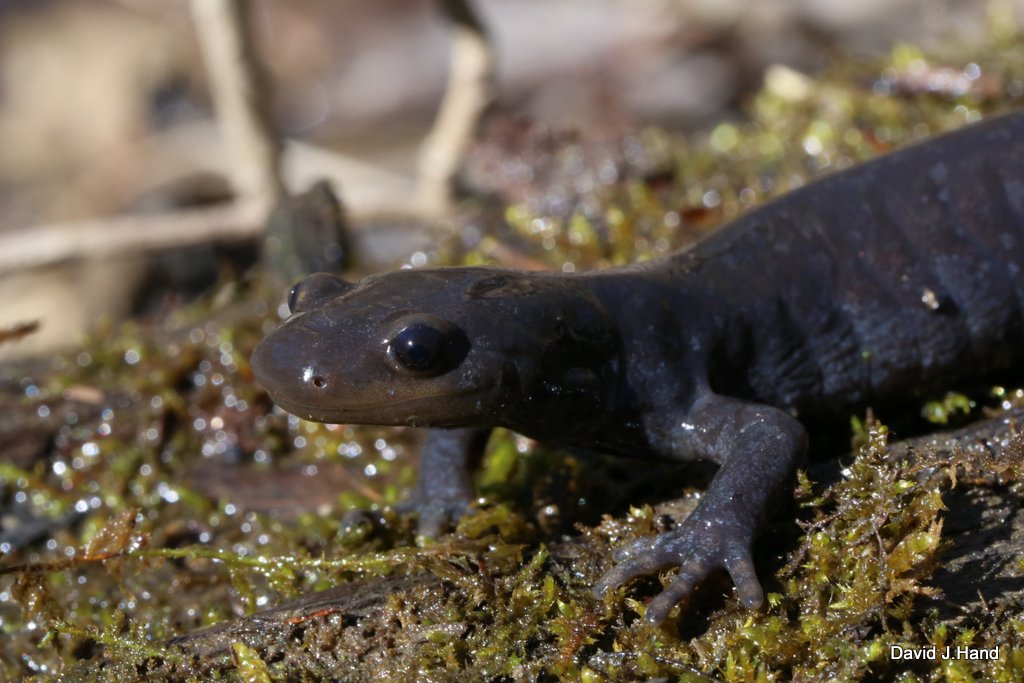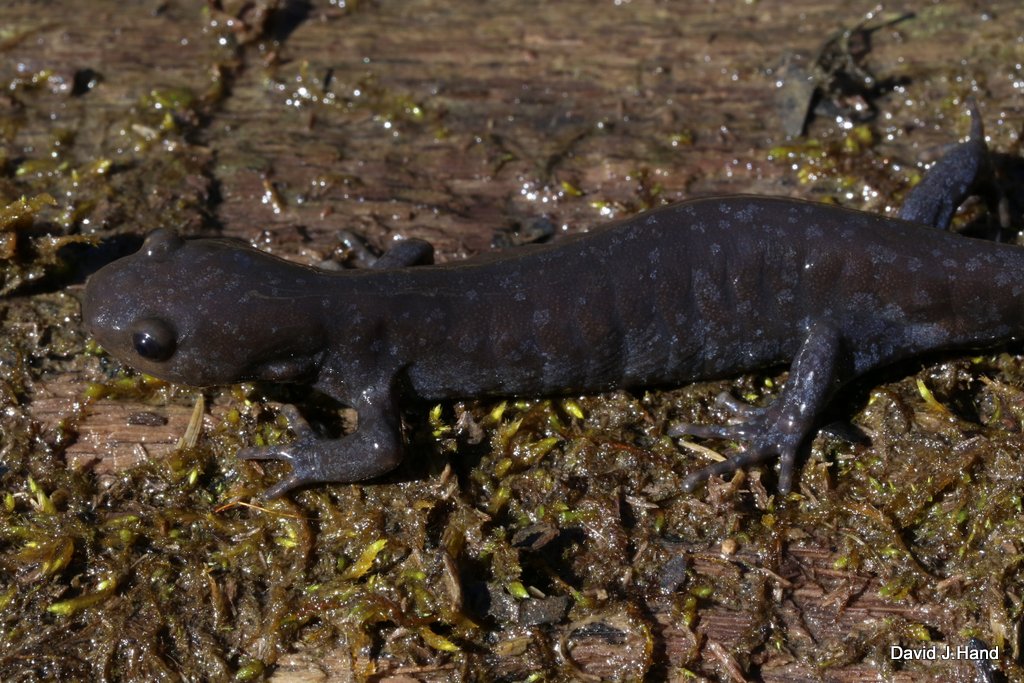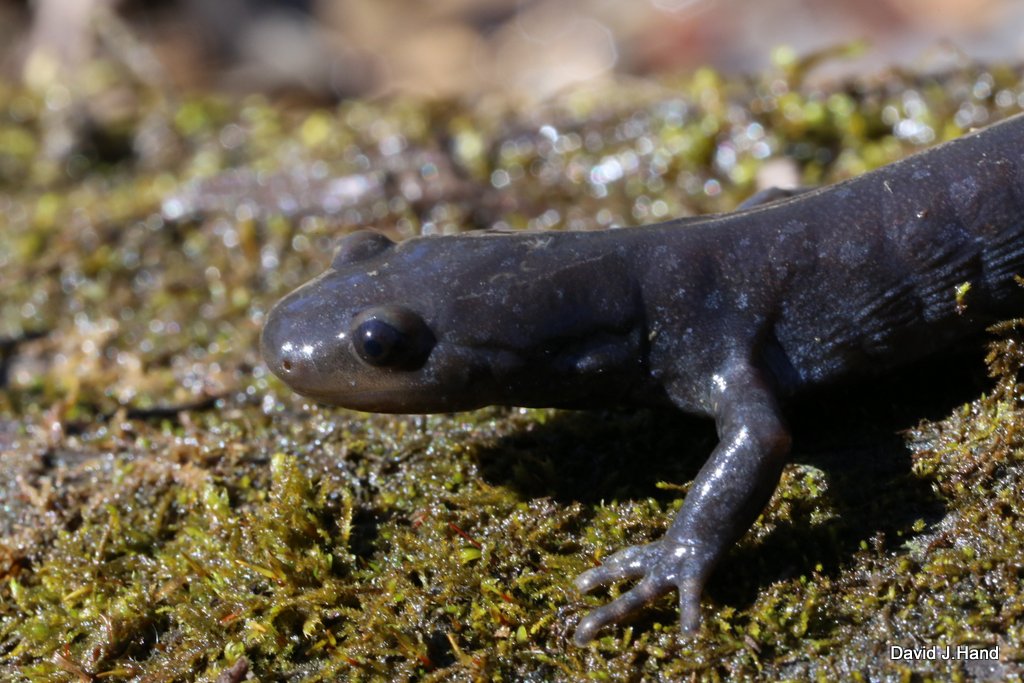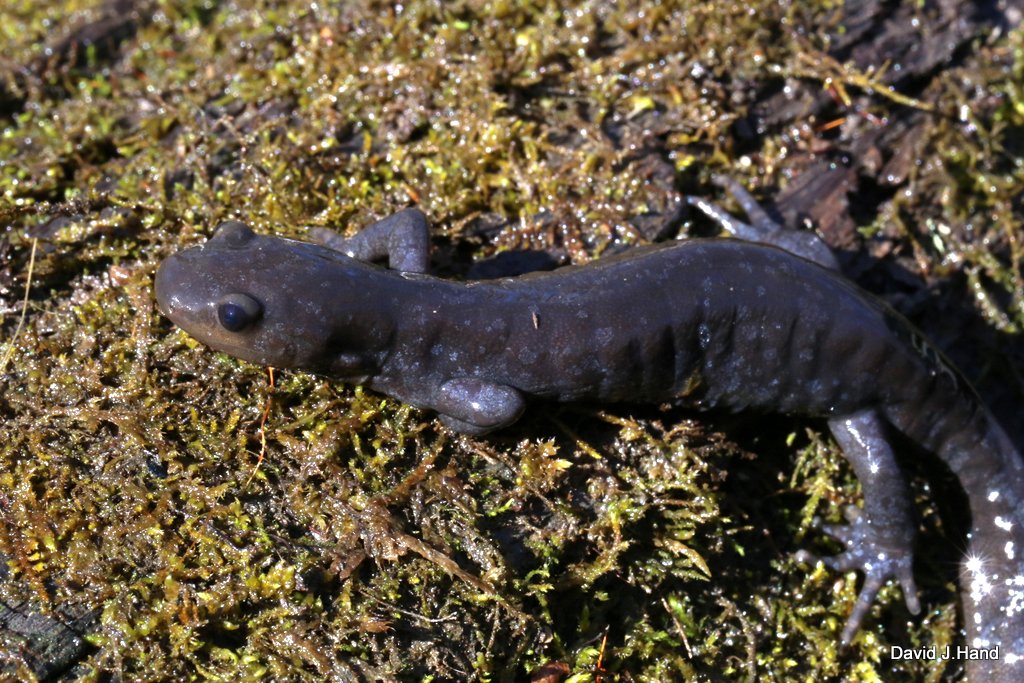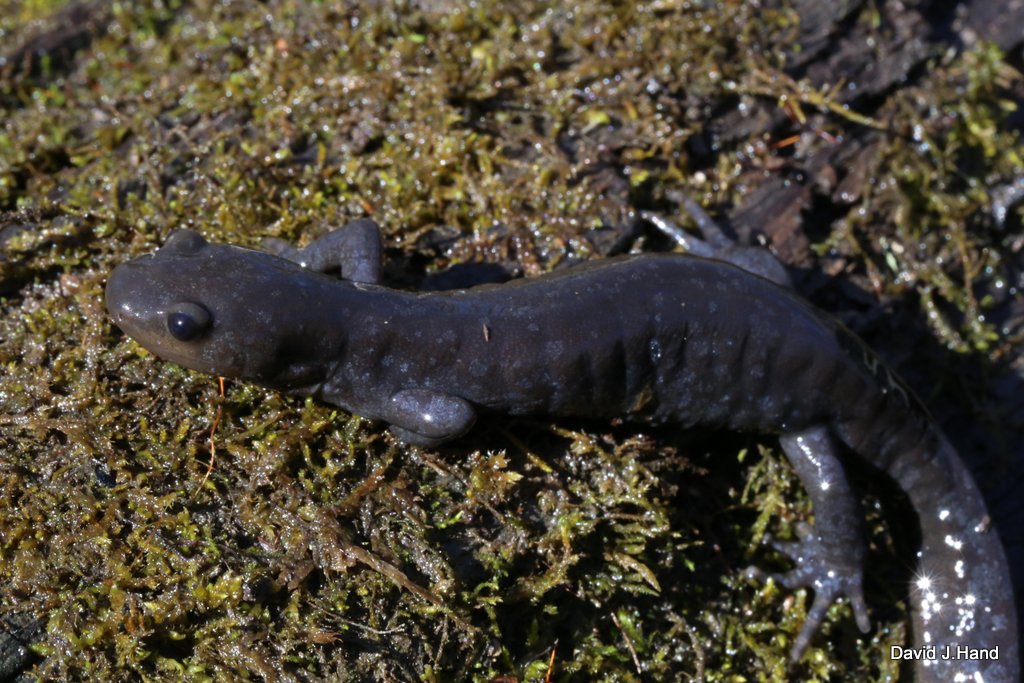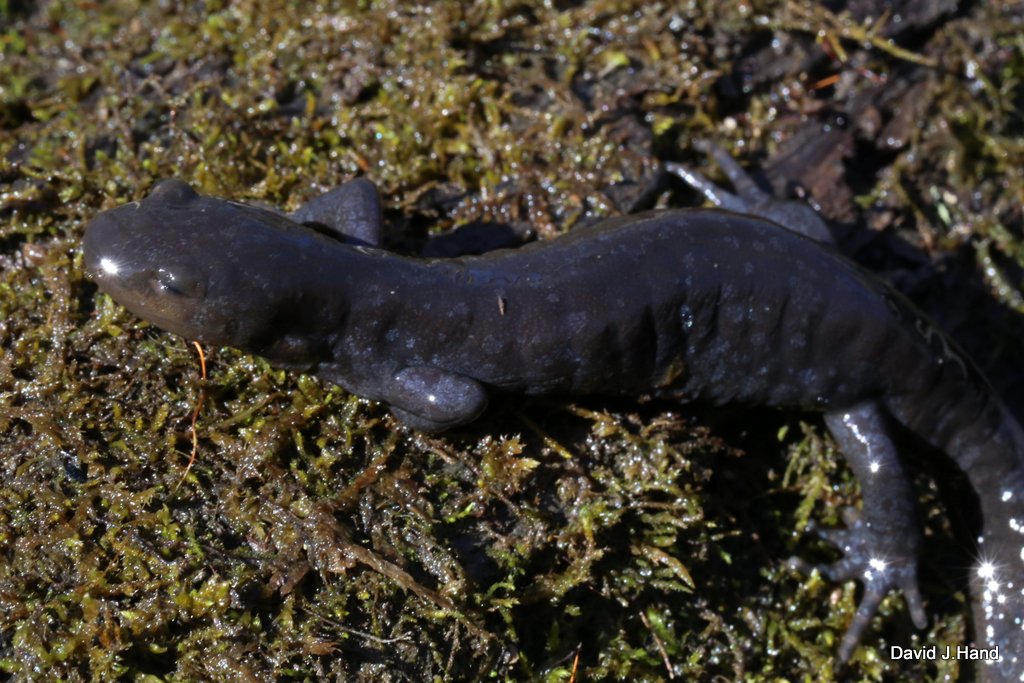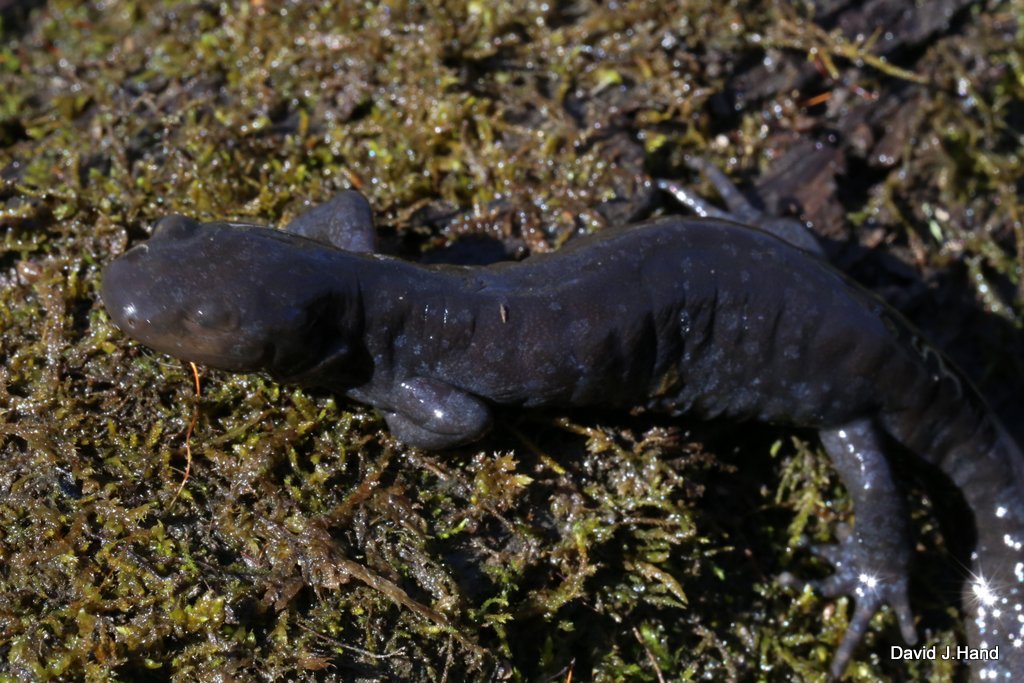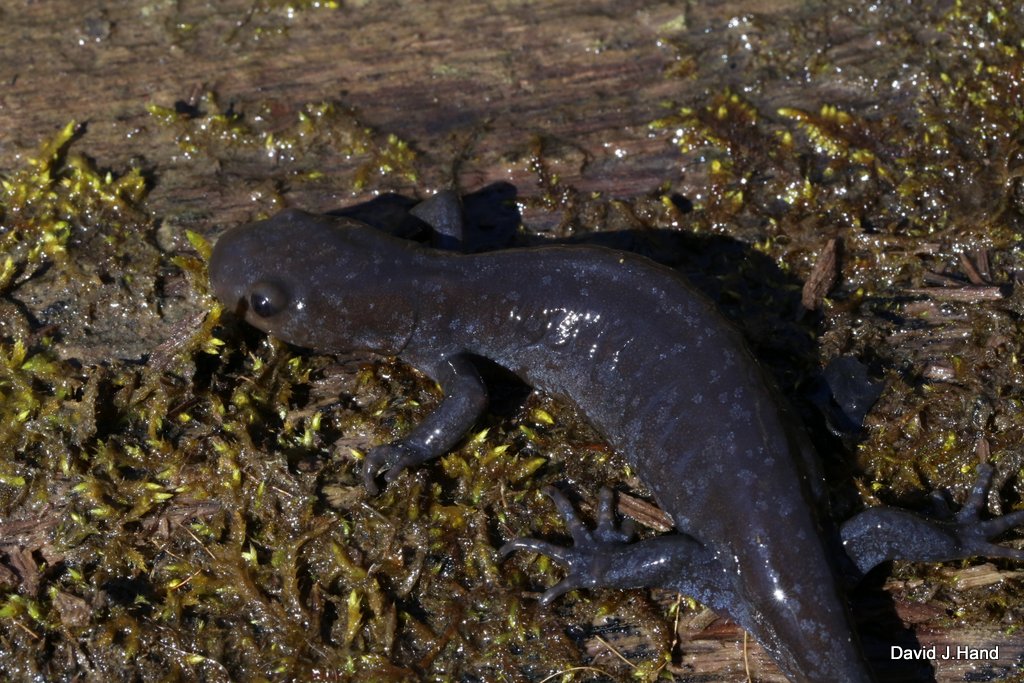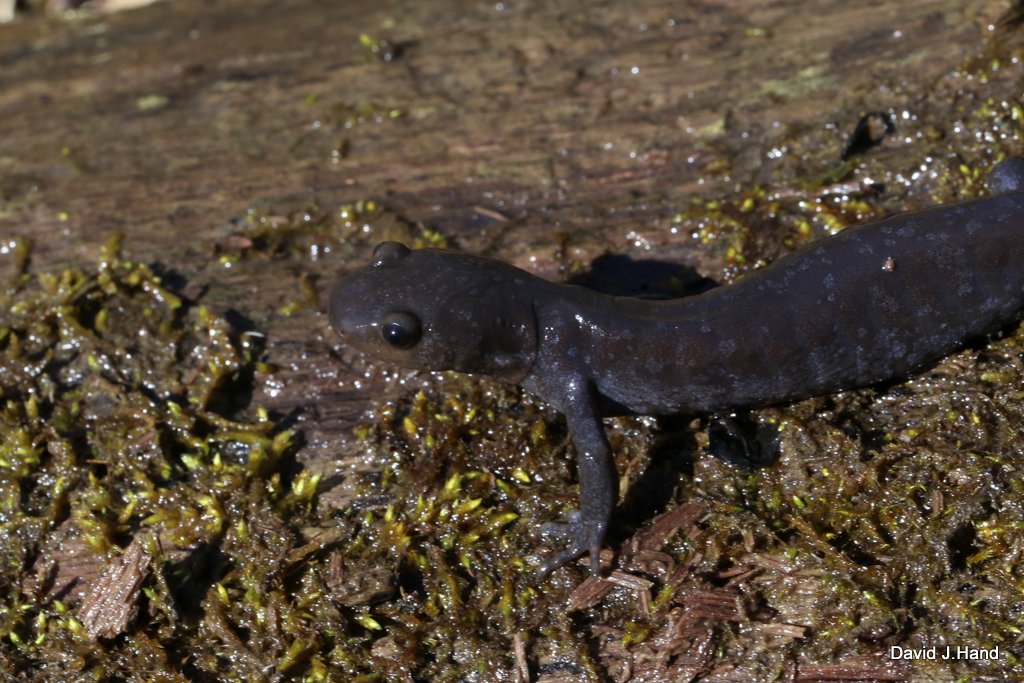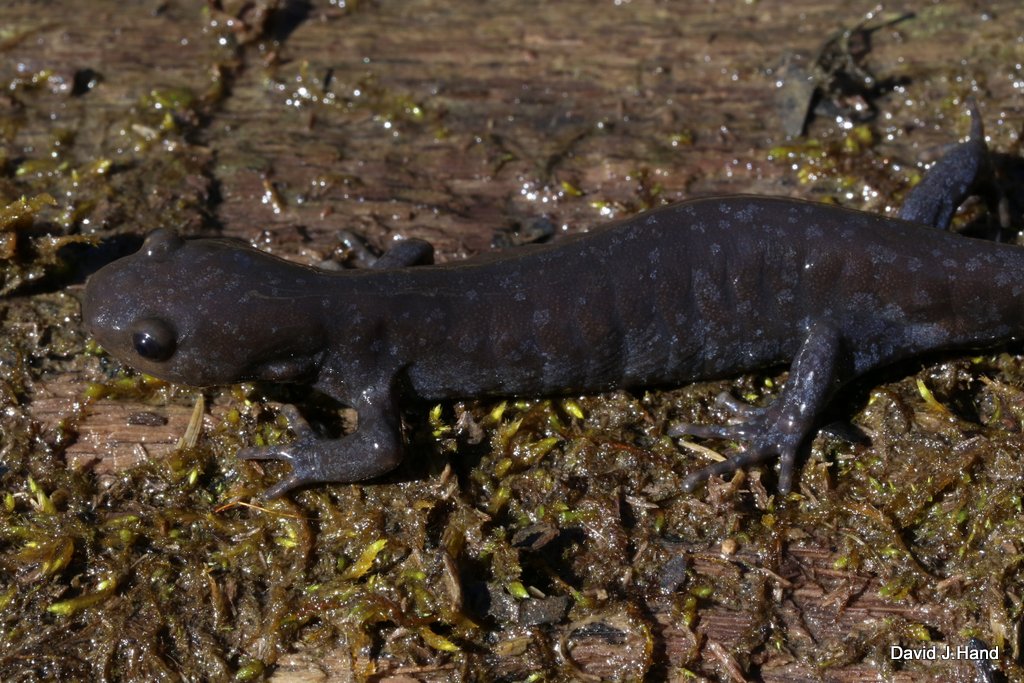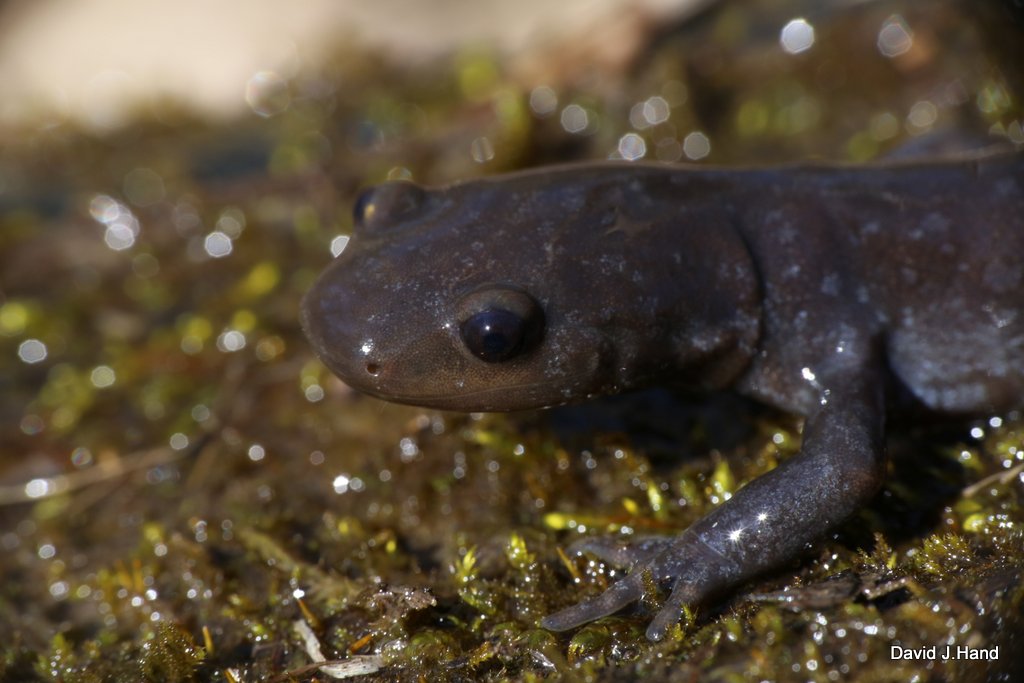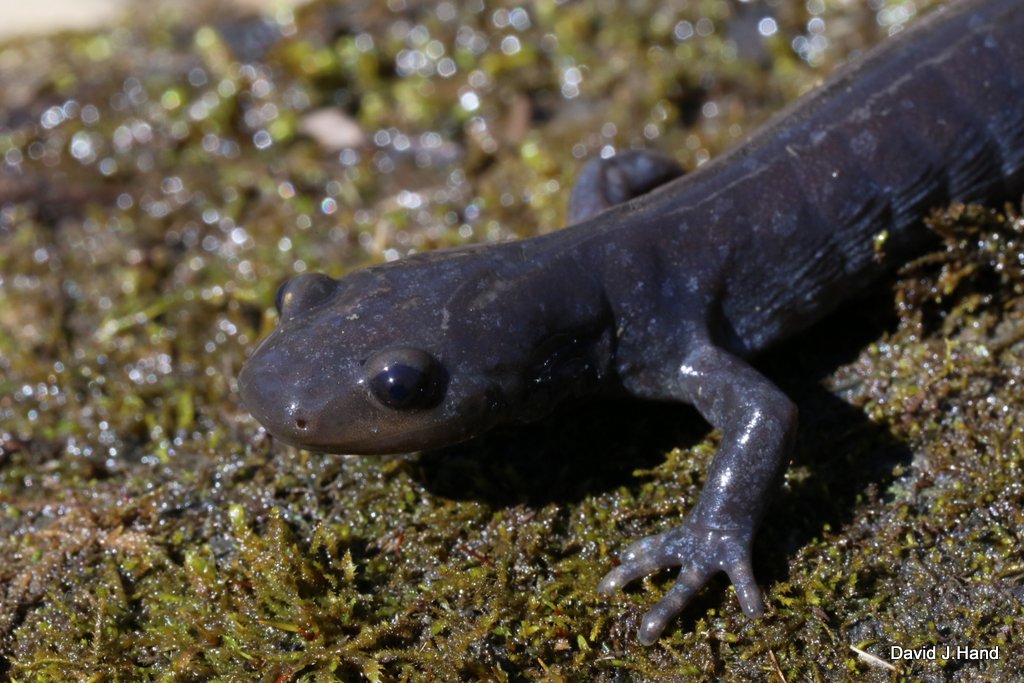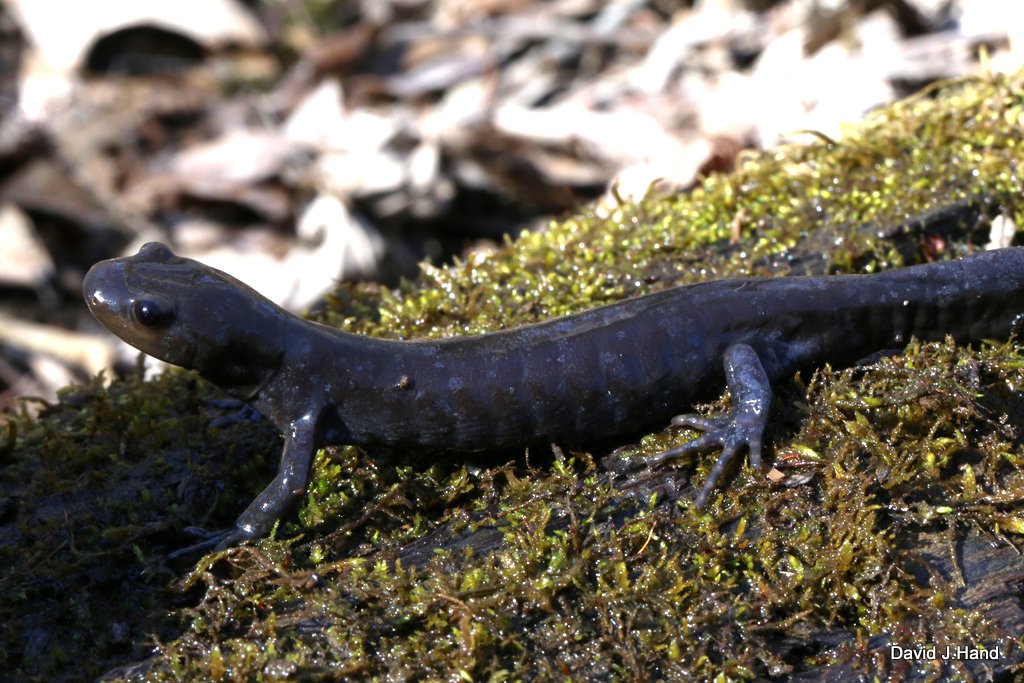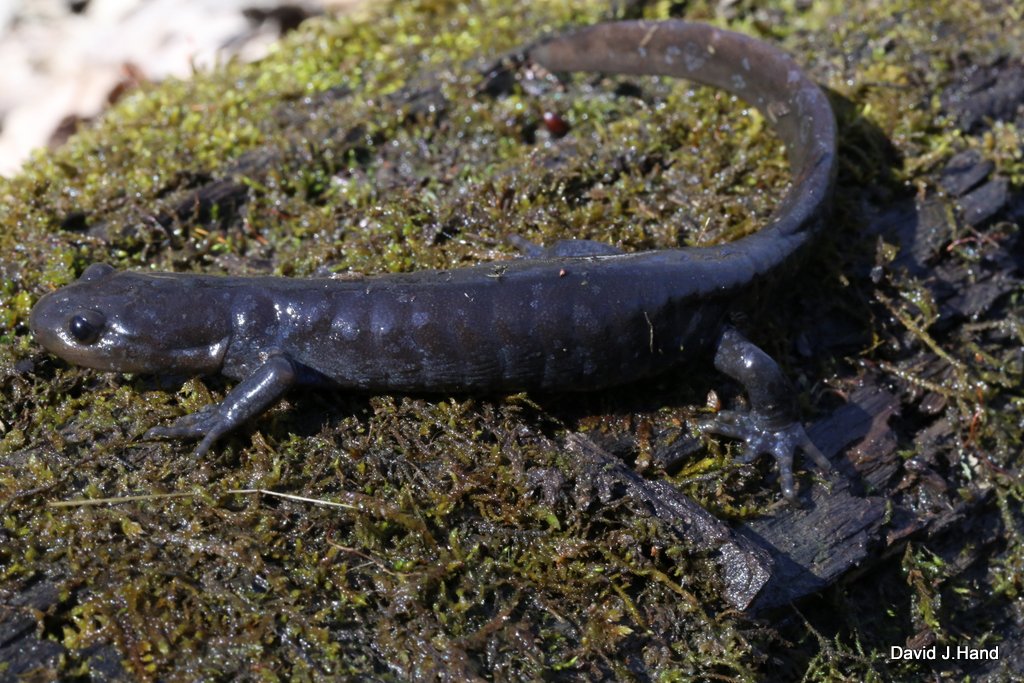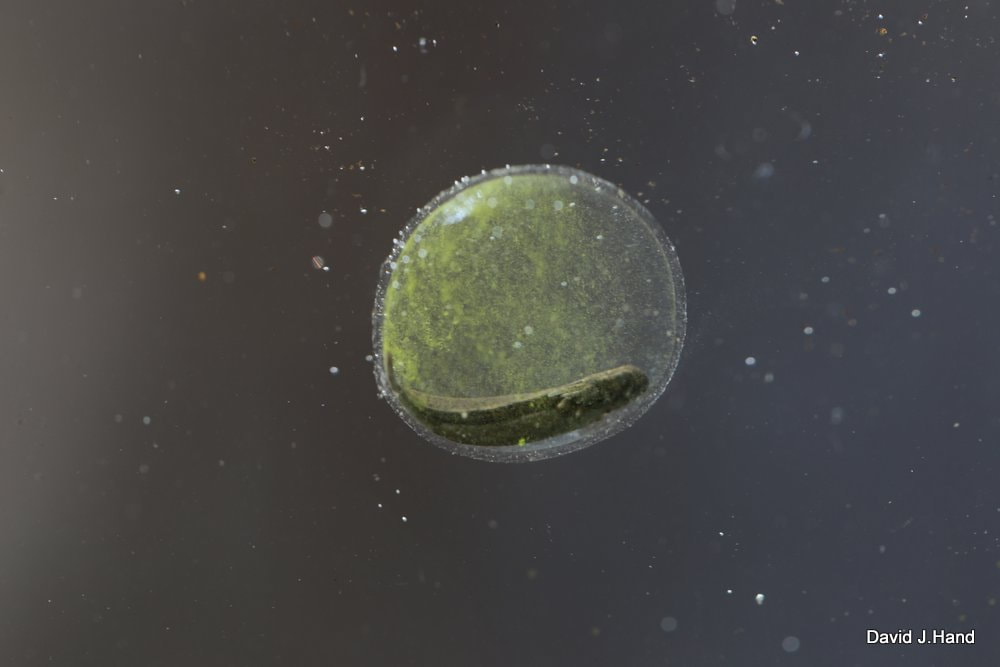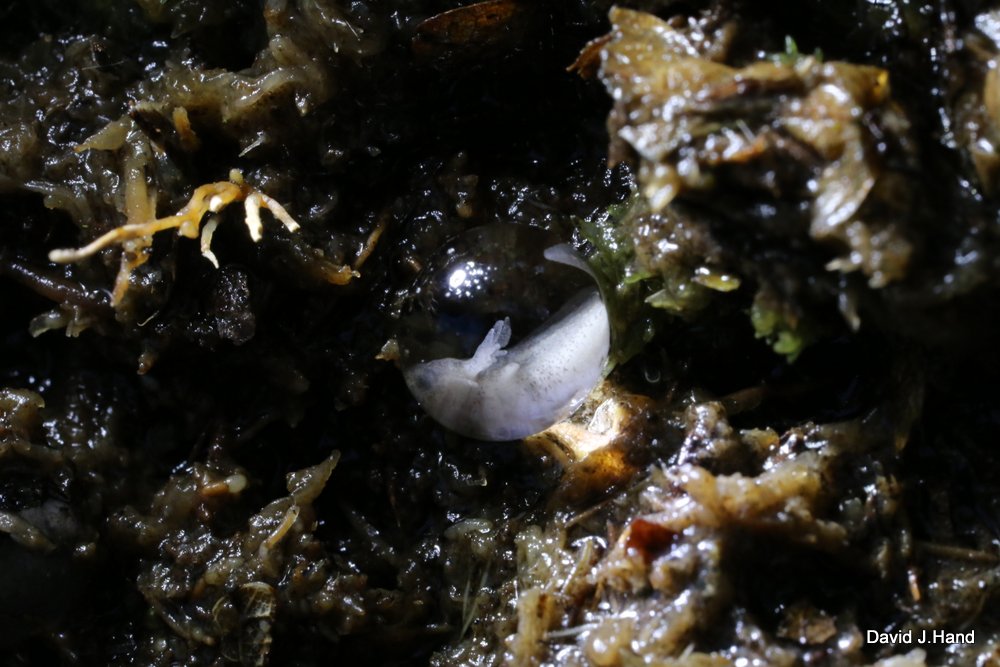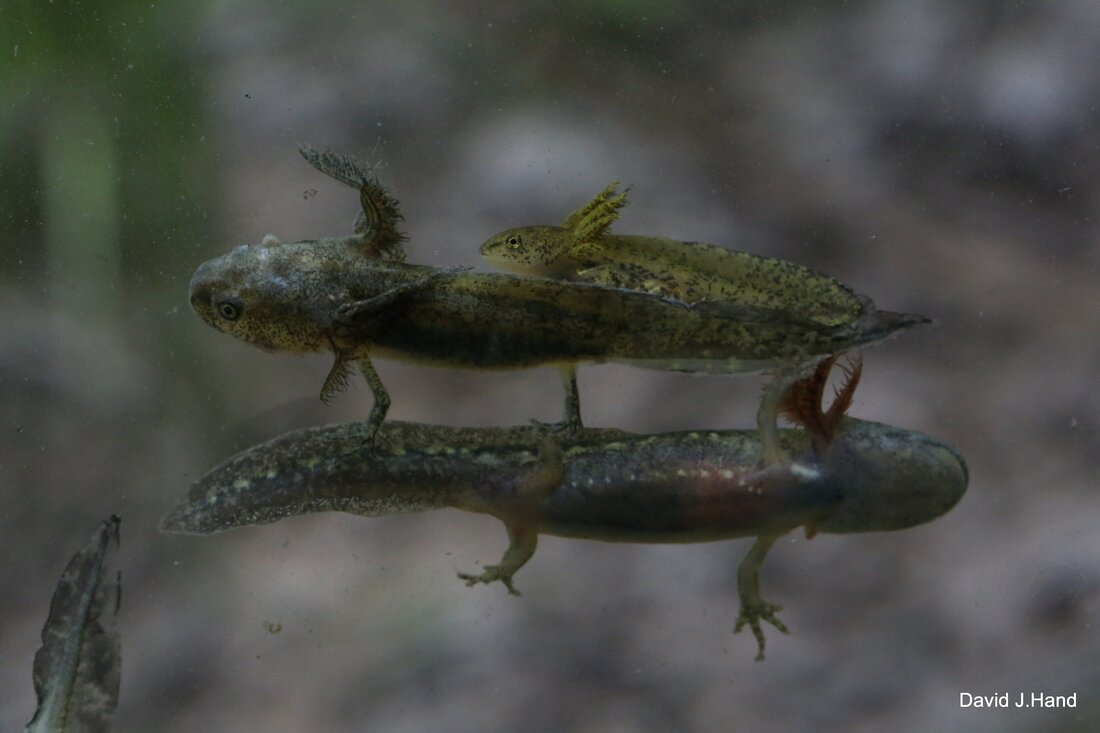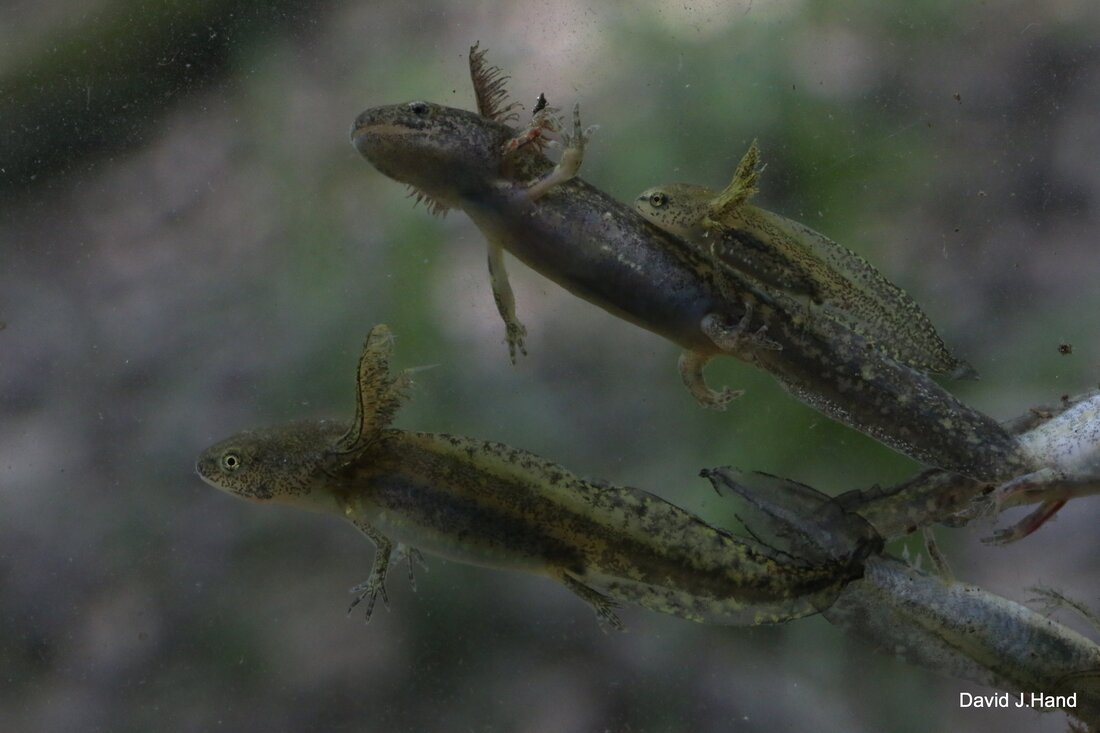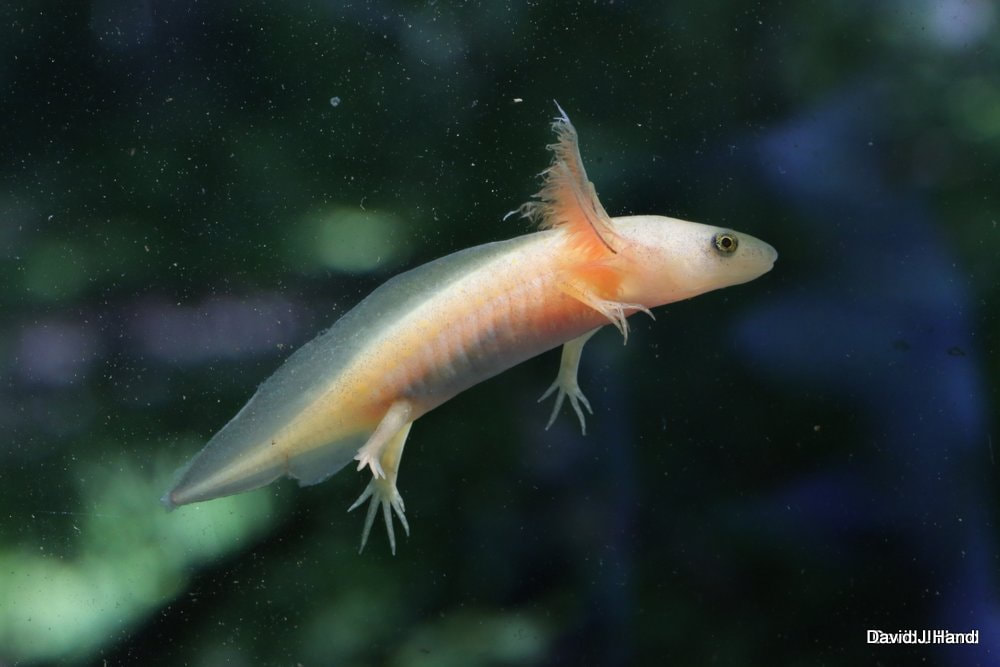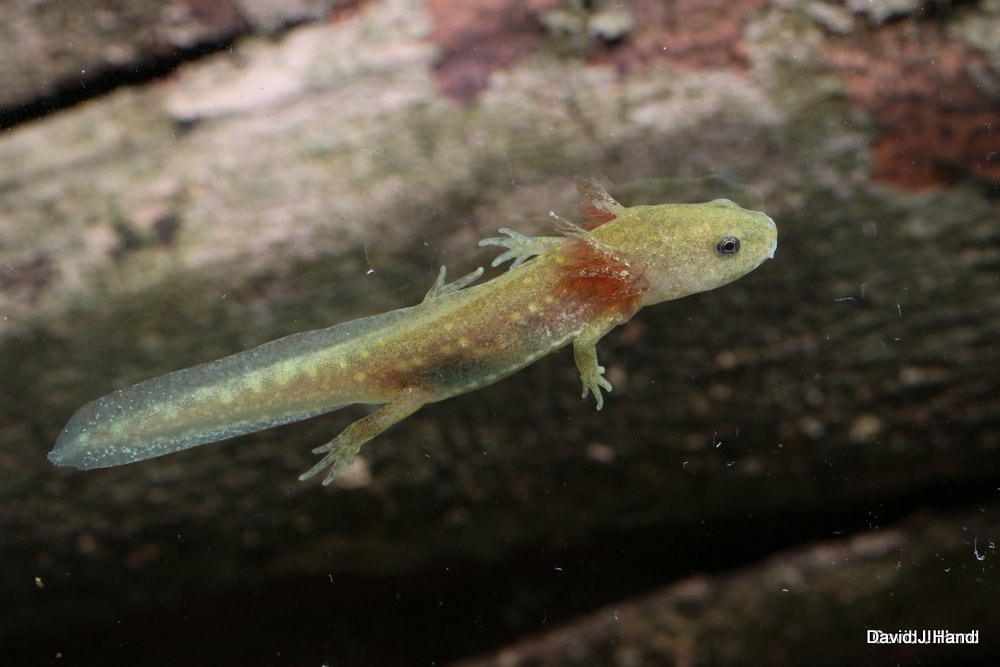Jefferson Salamander [Ambystoma jeffersonianum] 2
Please remember while out herping in Pennsylvania you need to have a current fishing license and please please remember to follow decontamination procedures as not to spread germs,diseases and unwanted fungus to these important areas!If you not willing do follow these procedures,you should not be out!I personally always wear protective gloves [Nitrile],even if I don't handle salamanders and I do try to never touch them.I also spray myself [boots,waders,gloves,net,photographic tank...] with a chlorhexidine solution.
[Chlorhexidine, is a disinfectant and antiseptic that is used for skin disinfection]
[Chlorhexidine, is a disinfectant and antiseptic that is used for skin disinfection]
I was pleased to see the vernal pools in Tioga County still having some water, but very surprised to see many Jefferson Salamander larvea. But the real surprise was just how small they were, usually at this time of year they are well on their way to leaving their watery as they metamorphose to land. Some are just starting to show their rear limbs as seen the the picture below. Tioga County Pa. 7-4-24 [Ambystoma jeffersonianum]
One month old Jefferson Salamander Larvae [top] with one week old Spotted Larvae [bottom]. [Ambystoma jeffersonianum & maculatum]. Perry County, Pa. 4-29-24. The Spotted larvae are approximately 10 mm in length, notice their large balancers.
A comparrision of larvae at different stages of development. Top is a five month old Marbled Salamander larva, middle [3] are 1 month old Jefferson Salamander larva, and bottom is a week old Spotted Salamander larvae. [Ambystoma opacum & jeffersonianum & maculatum]. Perry County, Pa. 4-30-24
A five month old Marbled Salamander larva as compared to a 1 month old Jefferson larva. [Ambystoma opacum & jeffersonianum]. Perry County, Pa. 4-30-24
Jefferson Salamander embryos on the left and Spotted Salamander embryos on the right, in the middle are Jefferson embryos that did not develop. Tioga County. Pa. 4-6-24
Spotted Salamander stage 20 of embryonic development and approximately 11 days old. Notice you can clearly see the developing spine and you can just make out the eye. Tioga County, Pa. 4-6-24 [Ambystoma maculatum]. Also notice the algae [Oophila amblystomatis] in the egg, it is the first known within cell partnership ever observed in vertebrates. The algae produces oxygen which the embryos need and the embryos produce nitrogen that the algae feeds on. Even as adults this same algae can be found residing inside the salamaders cells. A truly amazing partership known as "endosymbiotis". Also of interest I have noticed for a number of years and have documented an algae inside the eggs of Jefferson Salamanders, but scientist have yet to discover the same within cell relationship. But it it is there for a reason so I think it is only a matter of time before the same relationship is dicovered.
These Jefferson Salamander Larvae will be hatching within the week. [Ambystoma jeffersonianum]. North Central, Pa. 4-9-24
This picture certainly shows the advantages that Marbled Larvae [top two] has over hatching in the fall -winter over Jefferson Larvae [bottom] having hatched only recently. What are the disadvantages of eggs being laid in the fall, a great deal of the correct weather for one thing. Everything has to fall into place for the Marbled to be successful, eggs need to be laid in a dry vernal pool, but for eggs to successfully hatch they have to be inundated only after the embryos have fully developed, too soon and the embryos will perish. Sometimes the vernal pools are already filled and this creates a problem for the Marbled as they have no choice but to lay their eggs at the margins of the pool and their eggs never do get inundated as the pools are already at their highest point. Sometimes their pools never do fill with water and snow and the eggs never do get inundated till long after the eggs are no longer viable. Perry County, Pa. 3-29-24 [Ambystoma opacum & jeffersonianum].
These tiny Jefferson Salamander larvae [above and below] having hatched less than a week ago show something very interesting. They hatch without developed forlimbs, just tiny post where the the toes will appear in a couple of weeks, this is compared to Marbled and Spotted larvae that hatch with fully functional forelimbs. Lack of forelimbs is why they have the largest balancers of the three mentioned. The balancers help the larvae keep their balance and help with locomotion till the forelimbs are fully develop. Meantime you will find these larvae hanging on leaves on the bottom of vernal pools or anywhere they feel secure, and moving very little at this time. They feed on tiny crustaceans such as water fleas [Daphnia]. [Ambystoma jeffersonianum]
From Left to right, Jefferson Salamander, Spotted Salamander, Eastern Red Spotted Newt. Tioga County, Pa. 3-16-24
Female Jefferson Salamander, North Central, Pa. 3-16-24 [Ambystoma jeffersonianum]
Jefferson Salamander embryo development, embryonic stage approximately 10 days old. You can just start to see the eye development and the spine taking shape. [Ambystoma jeffersonianum].
This Jefferson Salamander embryo is in embryonic stage and is approximately 22 days old. You can see the eye developing and gills and tail. It will still be around 2 weeks before this embryo is ready to hatch. [Ambystoma jeffersonianum]
Female Jefferson Salamander. Pa. 2-6-24 [Ambystoma jeffersonianum]
Female Jefferson Salamander. Pa. 2-6-24 [Ambystoma jeffersonianum]
Female Jefferson Salamander. Pa. 2-6-24 [Ambystoma jeffersonianum]
Male Jefferson Salamanders interaction, notice quick subtle vent checks to determine sex. The keen sense of Ambystoma salamanders to detect scent on land or in the water is every bit as impressive as land mammals like dogs and bears at least for their small amphibian world, even following the same trails to and from their breeding pools year after year through scent. Their strong ability to detect different, and distinguish subtle scents is something we are just starting to learn about and possibly will never completely understand. [Ambystoma jeffersonianum].
Two males and one female showing intense courtship behavior. Pa. Jefferson Salamanders [Ambystoma jeffersonianum]
This is the largest Jefferson Salamander that I have ever come across, at 8 inches, a female with a tail as long as her body. Pa. 2-6-24
Female Jefferson Salamander [Ambystoma jeffersonianum]. Pa. 2-6-24
Two Jefferson Salamanders with eggs and Fairy Shrimp. The first one is a male and the second a female. I observerd the female following the male through the leaf litter for a least an hour, they never made contact. Pa. 2-6-24 [The earliest I have ever observed Jefferson courtship] Ambystoma jeffersonianum
This Jefferson salamander larva has found quite a meal and I dare anyone to try and take it away!
Three quarters on the Pennsylvania Ambystoma salamander larvae tree, all in one vernal pool! 30 week old Marbled Larvae [top] 8 week old Jefferson [middle] 4 week old Spotted [bottom]. Pa. 5-19-23. Ambystoma opacum, A. jeffersonianum, A. maculatum
8 week old Jefferson Salamander larva [Ambystoma jeffersonianum]. Of the three Ambystoma species, Jefferson, Marbled, and Spotted, there is no mistaking Jefferson at this age. They are wider and have a chunkier appearance and also have a distinct line separating the white of the underside and the grey green of the side. They can also have very little if any spotting along the side as Marbled or Spotted will have at this age, also notice those longer dainty toes [compared to Spotted and Marbled], a sure sign of Jefferson. Notice too the Hind limbs are just starting to make an appearance. Pa. 5-19-23
28 week old Marbled Salamander larva with a 8 week old Jefferson salamander larva, Pa. 5-19-23. This Marbled larva is well on its way to metamorphosing and leaving the vernal pool in the next month, the Jefferson will be leaving in July. The Marbled hatched last November while the Jefferson hatched in late March, this Jefferson will be the same size as the Marbled in less than half the time. The Marbled does have an advantage hatching in the fall and a head start, but if the Jefferson and Spotted survive the first few weeks [being able to avoid predators such as the Marbled] they grow at an alarming rate. I never tire of seeing this amazing transformation, and the speed in which it occurs, and also seeing the two different survival strategies employed by these three magnificent Ambystoma species, and pondering just what would have prompted this difference in breeding strategies eons ago.
Just a few weeks ago this pool was all but dried up and I feared the worst for the Salamander larvae in it, there are Jefferson, Spotted and Marbled here. After some recent rains the pool is now just about full and larvae were seen everywhere, rain just in the nick of time, what a wonderful sight! Pa. 5-9-23
Newly hatched larvae, Spotted Salamander [left] and Jefferson Salamander [right]. Pa. 4-24-23 [Ambystoma maculatum & jeffersonianum]
20 week old Marbled Salamander larva seen with a newly hatched Jefferson Salamander larva. Pa. 4-24-23. It is hard to believe that this Marbled larva was the same size as the Jefferson a mere 20 weeks ago. It will not take the Jefferson larva nearly as long to reach the same size as it will be growing in the spring and summer vs. fall and winter as the Marbled does, if he makes it that is, as Marbled will be feasting on these tiny larvae every time one dares to get too close! [Ambystoma opacum & jeffersonianum]
Another spring and another bad situation developing here in Pennsylvania. Very little spring rain and a winter with next to no snow leads to devastation like this. This is one of the few vernal pools that I know that contain Marbled, Jefferson, and Spotted larvae. In the small pools there are many large Marbled larvae, large for this time of year having hatched only some 12 weeks ago in early December. But remembering larvae metamorphosis speeds up when pools start to dry up and oxygen levels drop. They are developing fast and their lungs are functioning as they are coming to surface for frequent gulps of air, you can see their tiny ripples on the surface of the drying pools. They, the Marbled, stand a chance of completing their metamorphosis to land but the newly hatch Jefferson and Spotted [egg masses with embryos exposed to the air, you could see the ready to hatch embryos moving inside their eggs] have no chance of surviving this year once again, unfortunately. Pa. 4-24-23
At approximately 9 days old these Spotted Salamander embryos are in what is called the neural stage "the neural folds are fused along the entire length of the embryo to form a suture. A head fold begins to become apparent." Pa. 4-14-23. Notice the difference in the egg structure between the Spotted eggs [1&2], and the Jefferson egg picture [3]. Each has what I refer to as 3 "shells' or membranes that make up the egg. But notice the greater distance between the first and second membrane in the Spotted egg, compared to that Jefferson egg which has all three membranes tight together [appearing as one], and no spacing. This is a good way to tell the difference between egg masses in the field, at least between Jefferson and Spotted. The distance from the Jefferson embryos always appears right up to the edge of the egg membrane [appearing to fill the whole egg], whereas Spotted there is always a gap between the outer edge of the egg membrane and the embryo. [Ambystoma maculatum & jeffersonianum]
This Jefferson Salamander embryo inside the egg, that you can barely see it is so clear, is 18 days old and in the embryonic stage [Stage 22]. Pa. 4-14-23. Notice you can see the eye and gills developing, and the beginning of the balancers starting to appear.
|
Newly hatched Jefferson Salamander larva [Ambystoma jeffersonianum]. At just one centimeter in length, notice Jefferson larvae hatch without developed forelimbs, only "post" where the forelimbs will be. Also notice the large balancers on either side of the head that help with balance and movement until the forelimbs are developed. These larvae are very vulnerable to predators at this stage and spend all of their time at the edge of the vernal pool in the leaf litter. I observed many Eastern Red Spotted Newts [Notophalmus viridescens] hunting for them along the edge of the vernal pool. Pa. 4-14-23. It would seems Eastern Red Spotted Newts are a ferocious predators when it comes to salamanders, not only eating their eggs but larvae as well.
|
I have always found balancers on the heads of the Ambystoma salamander larvae that I am familiar with, Jefferson, Spotted, Marbled, fascinating. They provide stability for larvae until their forelimbs can provide balance and locomotion, and in the meantime balancers, located on either side of the head, act as stabilizers keeping the larvae upright and from sinking. When the forelimbs become developed enough and the balancers are no longer needed they are absorbed into the larvae. I have long noticed what I thought was a connection between how developed the forelimbs were at the time of hatching and the size of the balancers. These pictures show a correlation between forelimbs at hatching and the size of the balancers. The first two pictures [5&4] show Jefferson larvae at the time of hatching that have no developed forelimbs only what I refer to as "post" where the forelimbs will eventually be. Notice how large the balancers are, as these larvae need them to help navigate and stay "balanced" until forelimbs appear. The third picture [3] shows a Spotted larvae right after hatching, notice the forelimbs are underdeveloped but much more developed than that of the Jefferson. If you look close you can see tiny digits where the toes will be. Again you have large balancers on the head but not as large as that of the Jefferson larvae. The Spotted larvae will also depend on their balancers for balance and locomotion as they try to navigate in their new watery home. Then we come to the Marbled larvae pictures 1&2. Notice they hatch with completely developed forelimbs, you can clearly see their toes even on the embryo inside the egg [2]. Notice their balancers are tiny, even hard to see. When Marbled hatch they are already able to propel themselves through the water and balancers are not needed or at least very little. I can't help but wonder about the fact that that Marbled show very tiny balancers, when they aren't really needed, isn't a reflection of evolution and a time when Marbled larvae had much larger and more pronounced balancers for their needs at a time long ago. I think these pictures show a direct correlation in forelimb size at hatching and balancer size. Balancers are an amazing adaptation that is provided by nature and evolution to help newly hatched larvae as they try to negotiate and maneuver in their new watery home until their forelimbs are developed and are strong enough and the balancers are no longer needed.
This video shows Jefferson eggs and embryos, you can see the embryos moving inside their eggs as they are ready to hatch at any moment. You can also see empty egg masses that embryos have already hatched [there is still one lone embryo left]. If you look close you can get a fleeting glimpse of newly hatched Jefferson larvae. Pa. 4-14-23 [Ambystoma jeffersonanium]
All that remains of a Jefferson Salamander embryo, unknown cause [Ambystoma jeffersonianum] Pa. 4-3-23
This Jefferson Salamander embryo is approximately 14 says old now, in the embryonic stage and and looking from the top you can clearly see gill growth, eye development [even the outline of the eye socket or brow is becoming more pronounced and can be seen], the very beginnings of where balancers will be on the head. The small bud along the side further down the side from the gills is where the forelimb will be located, Jefferson Salamander larvae hatch without fully developed forelimbs. Pa. 4-3-23 [Ambystoma jeffersonianum]
These Jefferson Salamander eggs have what I refer to as a white "smoke ring" between egg masses. This is the only vernal pool that I have witness this and it seems to occur every year. The ring is very strong as you can see by close picture in my tank [below], actually creating a bow in the egg mass on either side. If you look close at the picture in the tank you can see a tiny ring inside the larger ring. North Central, Pa. 4-3-23 [Ambystoma Jeffersonianum]
These Jefferson Salamander embryos are approximately 10 days old. You can see spine development and even ribs coming off the spin [egg on the right]. You can also notice see the head start to take shape and if you look close at the egg in the center you can just start to see the eyes. A truly remarkable process to witness. Pa. 4-3-23 [Ambystoma jeffersonianum]
These Jefferson Salamander eggs are approximately 7 days old and are in stage 14 of the neurula stage, you can see a furrow or line running across the surface of the egg. [Ambystoma jeffersonianum]. Pa. 4-3-23
Jefferson Salamander [Ambystoma jeffersonianum] egg mass. You can see eye development along with gills in the embryos. But I've also noticed a faint green of algae inside the egg. It has already been documented that Spotted Salamanders [Ambystoma maculatum] have a symbiotic relationship with algae, the algae actually living inside the cells of the Spotted Salamander called endosymbiosis. It is the first time that this relationship has ever been observed in vertebrates. Could this relationship also be occurring in Jefferson Salamanders? This is not the first time that I have observed algae inside Jefferson eggs, although not as pronounced as in Spotted. Pa. 3-21-23. Update " Intracapsular algae (presumably Oophila amblystomatis) has been documented in Ambystoma jeffersonianum before (Gilbert 1942), although it tends to be less obvious than in A. maculatum. So far, there is no evidence of intratissue or intracellular entry of algal cells in any species other than A. maculatum."
Female Spotted Salamander [Ambystoma maculatum]. Spotted Salamanders and other amphibians are on the move to their breeding pools, so please be careful and aware on rainy damp nights while out driving. This female was full of eggs and was happy to make it to her pool and gave me a good wink! Pa.. Imagine for 20 years or more these salamanders not only return to their same specific pools but use the same route to and from these pools year after year. Scientist are still trying to unlock the secrets of how they find and use the same trails year after year. I suspect it is their powerful sense of smell, and their keen ability to distinguish different scents around them. When observing Spotted, Jefferson and Marbled salamanders looking for a mate and they come into contact with one another it only takes a quick, almost unnoticeable to the human eye, vent sniff and they have already determined if they have found the right partner. A small example of their truly remarkably keen sense of the world around them that you and I can never fully appreciate or understand. And isn't that just fine!
Jefferson Salamander [Ambystoma jeffersonianum]. Pa.
Jefferson Salamander [Ambystoma jeffersonianum]. Pa.
Jefferson Salamander [Ambystoma jeffersonianum]. Pa.
Jefferson Salamander [Ambystoma jeffersonianum]. Pa.
A beautiful male Jefferson Salamander [Ambystoma jeffersonianum]. Pa.
Jefferson Salamander caught moving across the ice. Pa. [Ambystoma jeffersonianum]
Close up of a Jefferson Egg. Pa. [Ambystoma jeffersonianum]. 2-10-23
Jefferson Salamander [Ambystoma jeffersonianum]. Pa. 2-10-23
Male Jefferson Salamanders [Ambystoma jeffersonianum]. Pa. 2-10-23
The amazing Fairy Shrimp [Anostraca]. Pa. 2-10-23. An excellent food source for many vernal pool creatures, including salamander larvae.
Male Jefferson Salamander [Ambystoma jeffersonianum]. Pa. 2-10-23. Notice the incredibly long hind toes in the upper picture also noticed in the lower picture the hind toes on the left show a slight webbing, something that I have never taken notice to before. Since they spend most of the year, other then breeding season, on land its seems peculiar that they would develop webbed toes just for breeding season. But their tails also seem very broad and aquatic, again perhaps for breeding season.
Jefferson Salamander Egg mass [Ambystoma jeffersonianum]. Pa. 2-10-23
Male Jefferson Salamander [Ambystoma jeffersonianum]. Pa. 2-10-23
Male Jefferson salamander behavior, notice at the very beginning and throughout the video, quick vent checks- sniffs, as they continually search for a female. [Ambystoma jeffersonianum] Pa. 2-10-23. Their sense of smell, even under water, must be incredible.
These two male Jefferson Salamanders have found a female [the one in the middle] and they don't want to let her go. After a struggle one male has won and has a tight clasp on her. Interesting behavior that I never seen before, I felt being able to witness two Marbled males fighting over territory last fall was a great experience but seeing these Jefferson battling over a mate was equally exciting. There is certainly a difference in the courtship and mating strategies between Ambystoma species. From Spotted [A. maculatum] depositing masses of spermatophores in an orgy with masses of salamanders in a spring vernal pool, to Male Marbled [A. opacum] courting a female and depositing his spermatophore on land in the fall. And these Jefferson [A. jeffersonianum] fighting over a female and "one male amplexes [attaching himself] her dorsally with his forelimbs positioned just behind those of the female", as seen in the video. Pa. 2-10-23
Pa. 2-10-23. It is a wonderful adaptation that when the pools are covered in ice as normally is the case this time of year Jefferson Salamanders are still there under the ice and are able to breath through their skin but when open water is available they continually come up for gulps of air [every 3 to 5 minutes] [Ambystoma jeffersonianum]
A great many Jefferson Salamanders were seen yesterday in this vernal pool in a sea of Fairy Shrimp, most if not all were males. Also many eggs sacks were seen and rescued as they were out of the water hanging on exposed sticks. This pool is quickly drying up, down three to four feet since last seen a month ago. Pa. 2-10-23 [Ambystoma jeffersonianum]. After most pools in Pa. were finally filled with water from November and December rains, very little moisture has fallen since then, couple that with the seemingly relentless winds that dry the moisture from the land, vernal pools everywhere show the effects of all of this dry weather. These Jefferson eggs and Marbled larvae and soon Spotted eggs, all in the same pool, have very little chance to complete their life cycles unless significant rains or snow occur soon. It seems to be same story every year now in Pennsylvania as amphibians struggle to survive and complete their life cycles. Whether it is sufficient water to inundate Marbled eggs in the fall for hatching to occur or lack of winter snows and spring rains to keep these precious habitats filled with water, the amphibians that depend on them don't stand much of a chance to continue their kind. Perhaps it is for all the reasons listed above that creatures such as these Jefferson Salamanders are so long lived, 20 years or more, coming year after year to their own specific pools to mate and hopefully produce the next generation, and if the condition are just right, there will be success. But regardless of these conditions they are there every year trying and what a marvel it is to witness and behold!
This video was made 2 years ago in late February showing a Male Jefferson Salamander right after ice out. There were already several egg masses found as ovipositing was well underway, even under the ice. Just a reminder to me, that it won't be too long now! As it has been documented that Jefferson have been know to be at breeding sites as early as late December. Pa. 2020 [Ambystoma jeffersonianum]
Looking back on our summer trip to Northern New Hampshire, I had visited a pool formed in an old logging road and a spring. The last time I was at this remote location it was fall and there were a great many tiny larvae and like many locations in that area, they were nowwhere near ready to metamorphose to land. I concluded that maybe they take two years to complete metamorphosis [I have seen this here in Pa. at a spring fed pool with Spotted]. I was hopeful when getting to the pool this year that I would see larger examples of larvae, but just like in 2017, only very tiny larvae and even eggs with embryos and it was July 7. I believe these to be Spotted [Ambystoma maculatum]. But here in Pa. Spotted hatch with developed forelimbs and I documented this year that Jefferson hatch with their forelimbs not developed only little post where the limbs will be. You can see on these hatched larvae the forelimbs are under developed. Perhaps the hatched ones are Jefferson and ones still in the eggs are Spotted [notice that eggs are full of algae, unique to Spotted], notice too the large gap between the inner and outer egg membrane in picture 5 [a good indicator of Spotted eggs]. I did see a number of larvae and embryos with a black circle around their eyes, something that I have never witnessed before and cannot say what it is. I think it is interesting to see the large balancer on the left side of larva's head 2 & 3 compared to the right side, I have seen this a lot in many species of larvae. I have read that salamanders are pool specific, meaning that they use the same pools from year to year. So my guess is that they were using this wet area long before the logging road was put in many years ago. Or because of the water pooling in the ruts, did this offer a new area for salamanders and frogs to breed. The things that I like to ponder and think about, and it's okay to never really know the mysteries of amphibians and their lives deep in the forest.
A 4 week old Jefferson Salamander larva [Ambystoma jeffersonianum] shown with a one week old Spotted Salamander larva [Ambystoma maculatum]. Notice the tiny digits of the fore toes are becoming more pronounced on the Spotted, but the balancers are still in place and being used to help the larva in locomotion till the forelimbs become more developed and stronger. Notice the broad head of the Jefferson and those long toes a sure sign of Jefferson, also notice the hind limbs are just starting to make an appearance. North Central, Pa. 5-20-22
6 week old Jefferson salamander larvae [Ambystoma jeffersonianum]. Central, Pa. 5-14-22
6 week old Jefferson Salamander larva.
6 week old Jefferson Salamander larva [Ambystoma jeffersonianum]. These are very fast growing larvae, more so than the other two Ambystoma larvae that I am familiar with [A. opacum & A. maculatum]. Notice the light green coloration and heavier, chunkier appearance and broad head in proportion to the body. I also find that they don't have the noticeable row of spots low on the side as Spotted do at this time and certainly no where near the spots Marbled would have, and also those long toes are a sure sign of Jefferson. Central, Pa. 5-14-22
Video showing the heart functioning in a Jefferson Larva [Ambystoma jeffersomianum].
Newly hatched Jefferson larvae [Ambystoma jeffersonianum] , pictures above and below. Notice the large balancers between the eye and gills. Balancers are used for balance and locomotion until the forelimbs become strong enough to navigate in the water. In the case of Jefferson larvae, they hatch without forelimbs at all, only a tiny post in back of the gills along the side, shows where they will be in time. Interestingly A. opacum hatch with forelimbs fully developed.
These Jefferson Salamander [Ambystoma jeffersonianum] embryos are approximately 8 weeks old having been laid in late March. The embryos\larvae are soon ready to hatch, even having witness several already outside the egg membrane. Notice the forelimbs are not fully developed [appearing as tiny post in back of the gills and along the side of the larva], curiously Jefferson are the only Ambystoma larvae that I am familiar with that hatches without developed forelimbs, taking several weeks to develop after hatching. They seem to depend on their balancers [seen as tiny projections between the eyes and gills in the last two pictures] for locomotion, more so than their cousin's the Marbled or Spotted, who hatch with fully developed forelimbs. I have also noticed that Jefferson larvae's eyes do not seem to be fully developed when hatching occurs. Undisclosed location, 4-25-22
Spotted and Jefferson egg masses. The Spotted are the opaque ones at the beginning and end. The Jefferson are ready to hatch at anytime, in fact I witnessed some larvae out of the eggs and around the egg masses. Jefferson almost always lay their eggs sooner than Spotted, even laying them under the ice covered pools in some instances. North Central, Pa. 4-25-22
Jefferson eggs and embryos [Ambystoma jeffersonianum]. These embryos will be hatching into larvae within week. Notice too the many Caddis Fly Nymphs in their houses made of leaf bits and tiny stones on the bottom, all of this in a sea of mosquito larvae. North Central, Pa. 4-25-22. There is a lot of wonderful life that depends on these seasonal vernal pools.
The very last time that I was able to see this beautiful leucistic Jefferson larva in 2019 [Above and Below] [Ambystoma jeffersonianum]. It was mid July and the vernal pool was very low and in a week it would be dried up and completely gone in the summer heat. What you don't see in this picture is the left forearm was completely missing, having been recently wrenched off by an unknown predator [most likely another larvae]. As with it's lost it's right hind limb earlier, it will have the ability to regenerate a new one. You can see the gills are all but gone having been absorbed into the larva, the lungs have developed for breathing air on land and the once aquatic tail is taking on the shape more suited to a life on land and notice to the prominent eye brows that have developed for protecting the eyes as it digs in the earth looking for prey, such as worms and grubs and anything else it might happen upon. Also the gular fold is now completely developed across the lower throat, another sign it's time in the water has come to an end. It was a real privilege being able to watch this larva grow since first being spotted in May. A true wonder of nature that I felt fortunate to see and witness it's growth and facing all the dangers of life in a vernal pool, It was sad to say good bye, but I wished it well on it's journey with all the hazards it will face, and hope that we meet again someday.
The leucistic Jefferson Salamander larva, much larger now. With a larva of normal coloration. July 2019. [ Ambystoma jeffersonianum]
Close up of the leucistic Jefferson [Ambystoma jeffersonianum] larva from a few years ago. I think the dainty fore toes are so beautiful and elegant.
A beautiful leucistic Jefferson Salamander larva from 2019 [ Ambystoma jeffersonianum]. Notice the right hind limb, toes and tail are in the process of regeneration after have been lost most likely due to other larvae.
The extra long toes, faint spots, light green coloration and "tubby" appearance give away these beautiful Jefferson Salamander larvae's ID. 5-31-21. At only 6 weeks old and already at 1 1/2 inches or 38.1 mm in length, Jefferson larvae really grow fast and this particular larva is in the process of regenerating its lost tail, most likely due to another larvae. [Ambystoma jeffersonianum]
A beautiful female Jefferson Salamander [Ambystoma jeffersonianum].Pa.3-30-21
A beautiful female Jefferson Salamander [Ambystoma jeffersonianum].Pa.3-30-21
A beautiful female Jefferson Salamander [Ambystoma jeffersonianum].Pa.3-30-21
A beautiful female Jefferson Salamander [Ambystoma jeffersonianum].Pa.3-30-21
A beautiful female Jefferson Salamander [Ambystoma jeffersonianum].Pa.3-30-21
A beautiful female Jefferson Salamander [Ambystoma jeffersonianum].Pa.3-30-21
From top to bottom,4 week old Spotted Salamander larva [Ambystoma maculatum],32 week old Marbled Salamander larva [Ambystoma opacum],8 week old Jefferson Salamander Larva [Ambystoma jeffersonianum].Pa.6-10-20
The difference between Jefferson Salamander eggs and egg masses [Ambystoma jeffersonianum] first two pictures.And Spotted Salamander eggs and egg masses [Ambystoma maculatum] the last two pictures.Notice on the Jefferson eggs,the embryo fills up most of the inner envelope,on the Spotted eggs the embryo fills a lot less of the inner envelope.The eggs masses of the Jefferson Salamander tend to be smaller with fewer eggs than that of the Spotted.It should also be noted that Blue-Spotted eggs and egg masses are very similar to that of the Jefferson.
Beautiful Fairy Shrimp and Jefferson Salamander eggs.Pa.3-30-21.If you watch closely at the 20 second mark you can see a Jefferson Salamander scurrying away into the leaf litter in the far back left.Pa.3-29-21
Gravid [full of eggs] female Jefferson Salamanders [Ambystoma jeffersonianum].Pa.3-13-21
Gravid [full of eggs] female Jefferson Salamanders [Ambystoma jeffersonianum].Pa.3-13-21
Gravid [full of eggs] female Jefferson Salamanders [Ambystoma jeffersonianum].Pa.3-13-21
Gravid [full of eggs] female Jefferson Salamanders [Ambystoma jeffersonianum].Pa.3-13-21
Gravid [full of eggs] female Jefferson Salamanders [Ambystoma jeffersonianum].Pa.3-13-21.Notice in the last two pictures she is cleansing her left eye.
Gravid [full of eggs] female Jefferson Salamanders [Ambystoma jeffersonianum].Pa.3-13-21
Two different gravid [full of eggs] female Jefferson Salamanders [Ambystoma jeffersonianum].Pa.3-13-21
Female Jefferson Salamander [Ambystoma jeffersonianum].Pa.3-13-21
These are three different Ambystoma embryos developing inside their eggs.First is a Jefferson,from left to right,[Ambystoma jeffersonianum].The second is Spotted [Ambystoma maculatum].The third is Marbled [Ambystoma opacum].Spotted and Jefferson lay their eggs in late winter and spring in water in eggs masses,whereas Marbled lay their eggs in fall on land in nests.Notice the algae inside the eggs of the Jefferson and Spotted.The following is from Valerie Ross "Spotted Salamanders embryos,a recent study found,have algae living inside their cells.While scientists have long known that the two species are symbiotic,each helping the other to survive,new findings show that the arrangement is more intimate than previously thought.It is the first such organism-within cell partnership-known as endosymbiosis-ever observed in vertebrates."! have also now read that the they are finding the algae living inside the adult Spotted salamanders cells as well!I think this is all very exciting,two organisms growing and living together as one,and depending on each other to survive.I have observed for many years and at different locations algae also inside the eggs of Jefferson's,as seen in the first picture.I have not read or heard of this symbiotic relationship happening in Jefferson Salamanders,but from my own observation believe it to be occurring in Jefferson's as well.
Three Ambystoma larvae species.Top,maculatum [Spotted].Middle,jeffersonianum [Jefferson].Bottom,opacum [Marbled].Pa.6-4-20
After many years of trying to get all three Ambystoma species of larvae [the three in our area,Pa.] in my photographic tank,I was finally rewarded last week.It was very exciting!I only know of two places that have all three,and it finally all came together.Top is maculatum [Spotted],about 4 weeks old,notice the line or strip from the eye to the nose,only seen at this earlier age.Middle opacum [Marbled],hatched last fall and is approximately 32 weeks old.Notice the grey,pigmented chin,only marbled larvae have this.Also notice metamorphosis to land is starting to be seen as the larva is losing it's aquatic tail and starting to take on the shape it will have for the rest of its life.Bottom is jeffersonianum [Jefferson],at 8 weeks old.At this age Jefferson are by far the heaviest of all larvae and again at this age they are thicker and more rounded and also notice the long fore toes a sure sign of Jefferson [In time the rear toes will be just as long].They also have a more aqua color appearance than either the Marbled or Spotted.They also have a more distinct line that separates the white of its belly and the coloring on their sides,found above their row of faint spots.Marbled always have the brighter row of spots followed by the Spotted and then by the Jefferson,which can be very faint.The reason the Jefferson and the Marbled are so close to the same size even though the age difference is so great is partly due to the fact that the Marbled larva body is changing due to metamorphosis and will be leaving the water to a life on land within the next few weeks,as stated before in the tail and also the body gets thinner as do all larvae at that time [metamorphosis].Marbled and Spotted larvae can be very hard to tell apart,but Marbled are almost always darker and as stated earlier have that grey,pigmented chin,whereas Spotteds do not.Anoth good way to tell is the time of year.Marbled having hatched the previous fall are always larger.Keep in mind that Spotted larvae on rare instances will over winter and metamorphosis the following year.Again look for the grey chin of Marbled,Spotted larvae will have a clean,white chin.Pa.6-4-20
A comparison picture of two beautiful leucistic Ambystoma larvae that I was fortunate to find in 2018 and 2019 respectively.Jefferson [Ambystoma jeffersonianum] top picture and Marbled [Ambystoma opacum] bottom picture."Leucism is a condition in which there is partial loss of pigmentation of the skin,hair,scales or cuticle,but not the eyes."Please notice the beautiful "gold dust" coloration in the gills of the Marbled larva.Also please notice that right hind toes of the Jefferson larva are in the process of regenerating after being lost-most likely another from another larva







